In the 1880s Brander Matthews said that short stories should be spelt with a hyphen to distinguish between two different forms, which reminds me of the picture book vs picturebook debate.
A short story is a story that is short. A short-story proper derives from the Romantic tradition and has its beginnings in myths and legends. The reader is required to put the extensional world out of mind and deal in and with a kind of underworld, a world of inexplicable strange loops, a mystical world of paradox and ambiguity, of shadows and shifting perspectives governed not by rational order but by intuition and dream logic.
MARY ROHRBERGER, The Art of Brevity, edited by Per Winther
If a novel is a multi-roomed mansion, a short story is more like a car or Winnebago. The short story conveys us swiftly, whereas the novel is something we inhabit for days or weeks. Both forms suborn their contents to the organizing principle of theme.
Peter Selgin, Brooklyn Rail
Features of a Short Story
- A complete narrative (this is controversial — some people count sketches and prose-based explorations as short stories)
- Rarely over 10,000 words or below 750 words (most commonly 1,500-5,000)
- Is designed to be read in a single sitting
- Contains enough weight to emotionally/intellectually affect the reader
- Is written to produce a singular effect
- In language use is closer to a poem than to a novel
- All aspects integrate cohesively
- All aspects reinforce each other (language, mood, point of view, rhythm, tone etc.)
Ways of Categorising Short Stories
In 1952 Ray B. West used the words “realistic” and “symbolic” to divide short stories into two types. The problem with these labels is that the surface of some highly symbolic short stories is highly realistic.
Other scholars distinguish between “simple narrative”, “mimetic” and “lyric”, “anecdotal”, “epiphanic”, “linear”, “spatial” etc.
Whatever we call them, both types of short stories are equally legitimate. I call them ‘genre’ and ‘lyrical’ short stories. Stephen King’s short stories are genre; Katherine Mansfield’s are lyrical. In order to get the most out of a lyrical short story we need to take a long, hard look at the symbol web.
Raison d’etre of the Short Story
Short story writers question the world of appearances and in that questioning cast doubt on the immediately apparent and, at the same time, signify the timeless universals beyond the extensional world.
In the short story, questioning is embodied in technique, what is questioned is embodied in structure, and answers to the questions are inherent in total meaning.
The structure of a story creates metaphors that move to symbolic levels and embody meaning by means of analogies.
The very shortness of the short story, as well as the necessary artistic devices demanded by this shortness, force it to focus not on the whole of experience (whatever that is) in all its perceptual and conceptual categorisation, but rather on a single experience lifted out of the everyday flow of human actuality and active striving, an experience that is lifted out precisely because it is not a slice of that reality, but rather a moment in which “reality” itself is challenged.
Charles May, The Art of Brevity, edited by Per Winther
May explains that novels, in contrast, are expected to resolve their own crises. This explains why the endings of lyrical short stories tend to be a bit different from genre stories. Otherwise short stories tend to conform to universal story structure.
The short story can yield us some single bizarre occurrence of epiphany of terror whose impact would merely be blunted by lengthy realist elaboration.
Terry Eagleton
Short Stories And Detail
In the short story, detail is transformed into metaphorical significance. In a novel, on the other hand, the particular can remain merely the particular. It exists to make the reader feel he/she knows the experience — to create verisimilitude.
Charles E. May, The Art of Brevity, edited by Per Winther
It is possible, in a poem or a short story, to write about commonplace things and objects using commonplace but precise language, and to endow those things — a chair, a window curtain, a fork, a stone, a woman’s earring — with immense, even startling power.
Raymond Carver, On Writing
Tips For Writing The Short Story
The short story, if you really are intense and you have an exciting idea, writes itself in a few hours. I try to encourage my student friends and my writer friends to write a short story in one day so it has a skin around it, its own intensity, its own life, its own reason for being. There’s a reason why the idea occurred to you at that hour anyway, so go with that and investigate it, get it down. Two or three thousand words in a few hours is not that hard. Don’t let people interfere with you. Boot ’em out, turn off the phone, hide away, get it done. If you carry a short story over to the next day you may overnight intellectualize something about it and try to make it too fancy, try to please someone.
Ray Bradbury
The types of detail found in a short story tend to be more ‘telling’ and related to ‘symbol web’ than those found in a novel.
American Short Stories
John Cheever
- Goodbye, My Brother — two brothers, one optimist, one pessimist, argue while at the family holiday home in the Massachusetts Islands.
- Reunion — Very sad story about a boy who suddenly understands what an asshat his father is. The classic epiphanic moment.
- The Common Day
- The Enormous Radio — a new radio broadcasts what’s happening inside nearby apartments.
- O, City Of Broken Dreams — a country couple relocate to New York with the empty promise of making it big with a partially completed script for a play. They are taken for mugs by a variety of characters.
- The Sutton Place Story — A little girl gets lost through the carelessness of her nurse who leaves the child with a friend of the family’s while she goes to church.
- Just One More Time — A story about privilege and how the rich rarely if ever fall to into the depths of poverty that others are born into. This is one of Cheever’s shorter short stories, and has an interesting example of sideshadowing in the final scene.
- The Swimmer — one of Cheever’s surrealist stories
- Christmas Is A Sad Season For The Poor — An elevator operator complains of how lonely he is to all the people he gives rides to.
- Clancy In The Tower Of Babel — An Irish immigrant to New York has an accident at his labouring job and eventually finds a job as an elevator operator at a nearby apartment block which, despite its geographic proximity, is completely foreign to Clancy, and his simple life which is in many ways humble.
- The Housebreaker of Shady Hill — A good example of a short story in which the protagonist has a small ‘scope of change’ (ie. doesn’t really have a true epiphany, though he may seem to.)
Stephen King
- “The Things They Left Behind” — A man suffers from survivor’s guilt after the 9/11 terrorist attack of New York City.
- “The Mist” — This one’s a novella. You may have seen the film adaptation or the more recent TV series. A deadly mist with Lovecraftian creatures descends upon a Maine town. The story focuses on what happens inside the local general store after a motley collection of residents are forced to take refuge there.
- “The Raft” — an example of modern cosmic horror set with many similarities to “The Mist” (they’re both in Skeleton Crew) except in this one we have four young people marooned on a raft in the middle of a very cold lake.
- “Graduation Afternoon” — A young woman with a wealthy boyfriend spends the afternoon of her graduation at his family’s mansion on the hill, knowing that as soon as they go off to their respective colleges, she’ll move in different circles. This is the end of her life as she knows it. Little did she predict that the entire world would change. From this house on the hill they see a bomb dropped on the city beyond.
- “Let There Be Tygers” — If you were scared to use the toilets at school, you’ll recognise the terror of this one.
- “Cookie Jar” — A great-grandson asks his great-grandfather about his childhood. The old man starts off talking about radios, then launches into a fantasy story which may or may not be true, but which serves for readers as an allegory for how time works differently when you get older, and how younger generations will keep making the same mistakes no matter what the old people tell them.
- “Strawberry Spring” — A Jack-the-Ripper murder mystery set on a warm, foggy Maine teachers’ college campus in 1968. A ‘strawberry spring’ is a King invention and refers to a rarely occurring weather event. The Vietnam War is backdrop.
- “Children of the Corn” — This short story has been adapted for film numerous times. A very annoying arguing couple drive through Nebraska on their way to see family but as they’re driving past fields of corn, they run over a boy who emerges from the crops. Things go downhill from there. Some commentators say that this short story is an allegory for America’s guilt about The Vietnam War. Others say it’s about environmental destruction, and the schism between generations. At the time this was written (the late 1970s) the ‘environmental destruction’ issue was around monoculture of food crops.
Annie Proulx
HOW TO WRITE LIKE ANNIE PROULX
Heart Songs (1994)
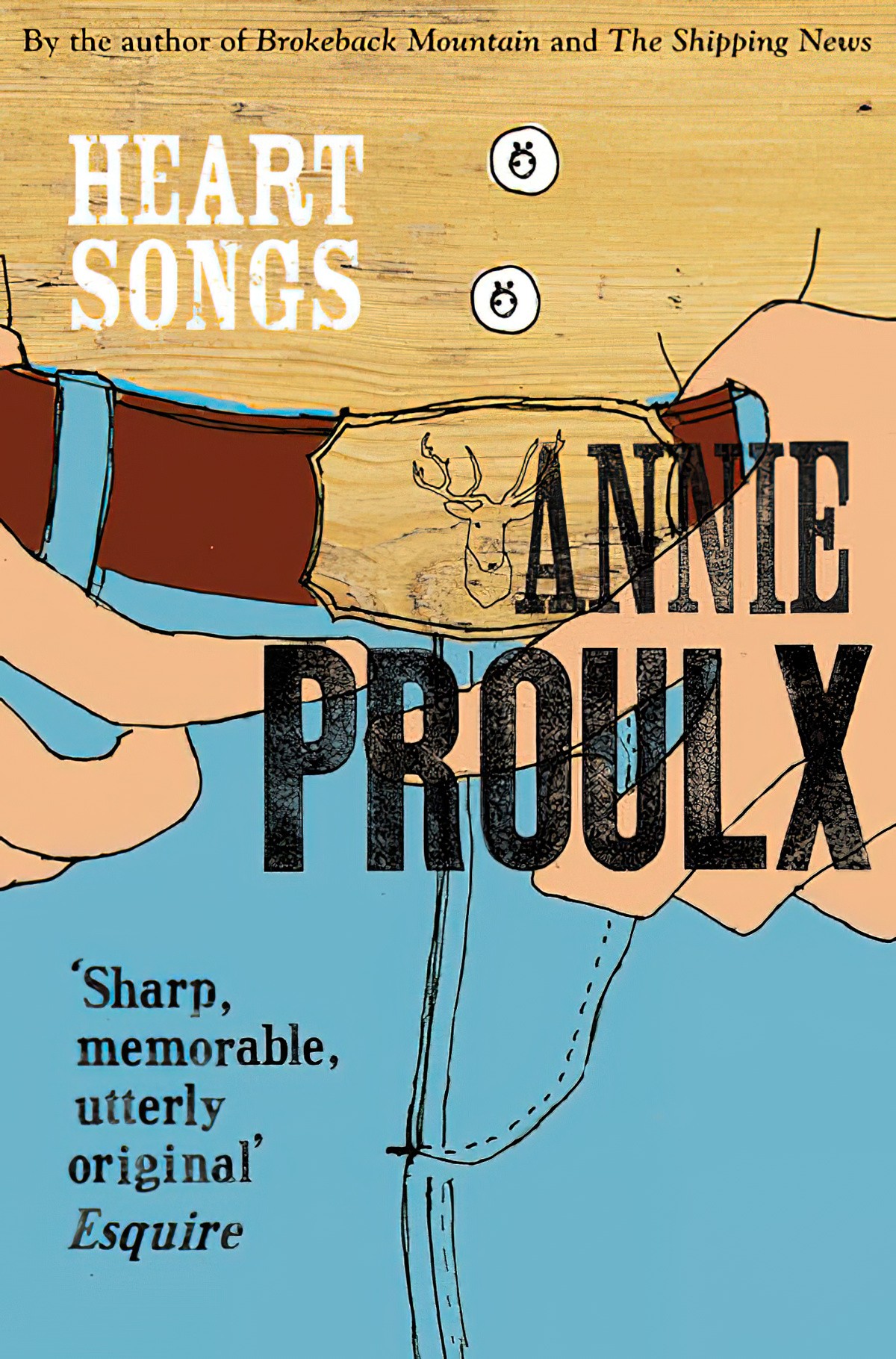
Most of the stories in the 1994 collection had previously been published as Heart Songs and Other Stories in 1988.
- On The Antler — a good case study in linking character to setting. Once the rural setting is compromised, this means the end of life as rural folk know it. But like the novel King Rat, some residents actually start to thrive once the environment changes, even if that change is generally for the worse.
- Stone City
- Bedrock
- A Run Of Bad Luck
- Heart Songs
- The Unclouded Day — another Proulx story about the conflict between real rural people and try-hard newcomers. This is a literary take on the typical story found in a Hunting and Fishing magazine, starring a trickster rural main character and a naive townie.
- In The Pit — a man goes to his childhood camp (I’d call it a ‘bach’) to tidy it up and put it on the market, perhaps. There’s a false accusation and though he realises his mistake, there’s no genuine epiphany regarding his own psychology.
- The Wer-Trout
- Electric Arrows
- A Country Killing
- Negatives
Close Range: Wyoming Stories (1999)
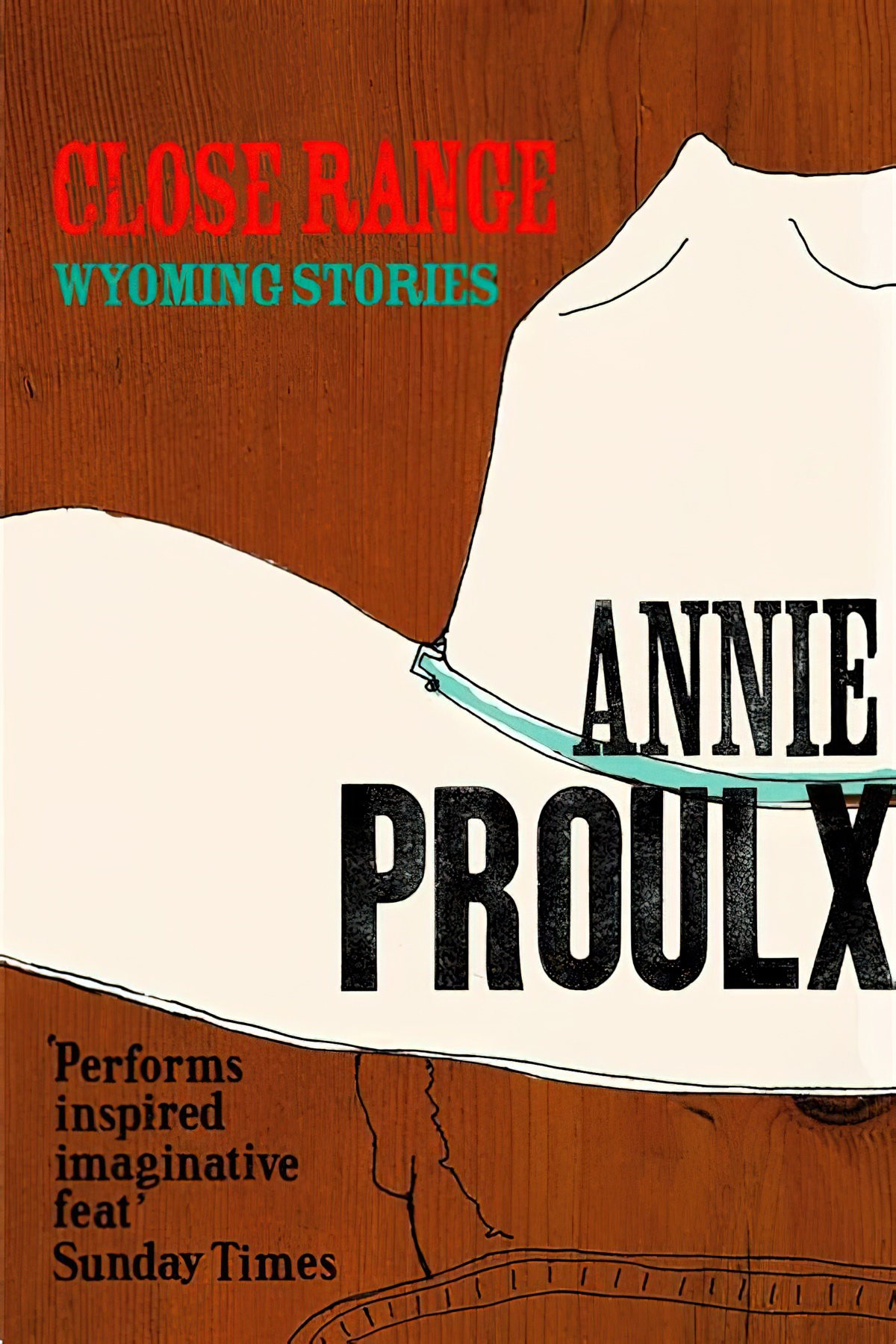
The stories are set in the desolate landscape of rural Wyoming and detail the often grim lives of the main characters.
- “The Half-Skinned Steer” — a parody of the home-away-home story structure, inspired by an Icelandic folk tale.
- “The Mud Below” — a critique of toxic masculinity, with the setting and characters of an American rodeo circuit.
- “Job History” — a portrait of a Trump voter, but written in the late 1990s. I’m sure Proulx saw President Trump coming a mile off.
- “The Blood Bay” — if “Brokeback Mountain” makes you cry, here’s one from the same author that may well make you chuckle.
- “People In Hell Just Want A Drink Of Water” — an unusually heartwarming message: Extend just a little kindness and that’ll go a long way.
- “Bunchgrass End Of The World” — a retelling of The Frog Prince
- “Pair A Spurs” — magical realism
- “A Lonely Coast” — starts off in second person then switches to first. Unusual narration from this author.
- “The Governors of Wyoming” — more like a novella, divided into parts
- “55 Miles To The Gas Pump — a retelling of Bluebeard but in rural America
- “Brokeback Mountain” — one of the few short stories to make me cry. Normally, short stories don’t give you time to feel such emotion.
Bad Dirt: Wyoming Stories 2 (2004)
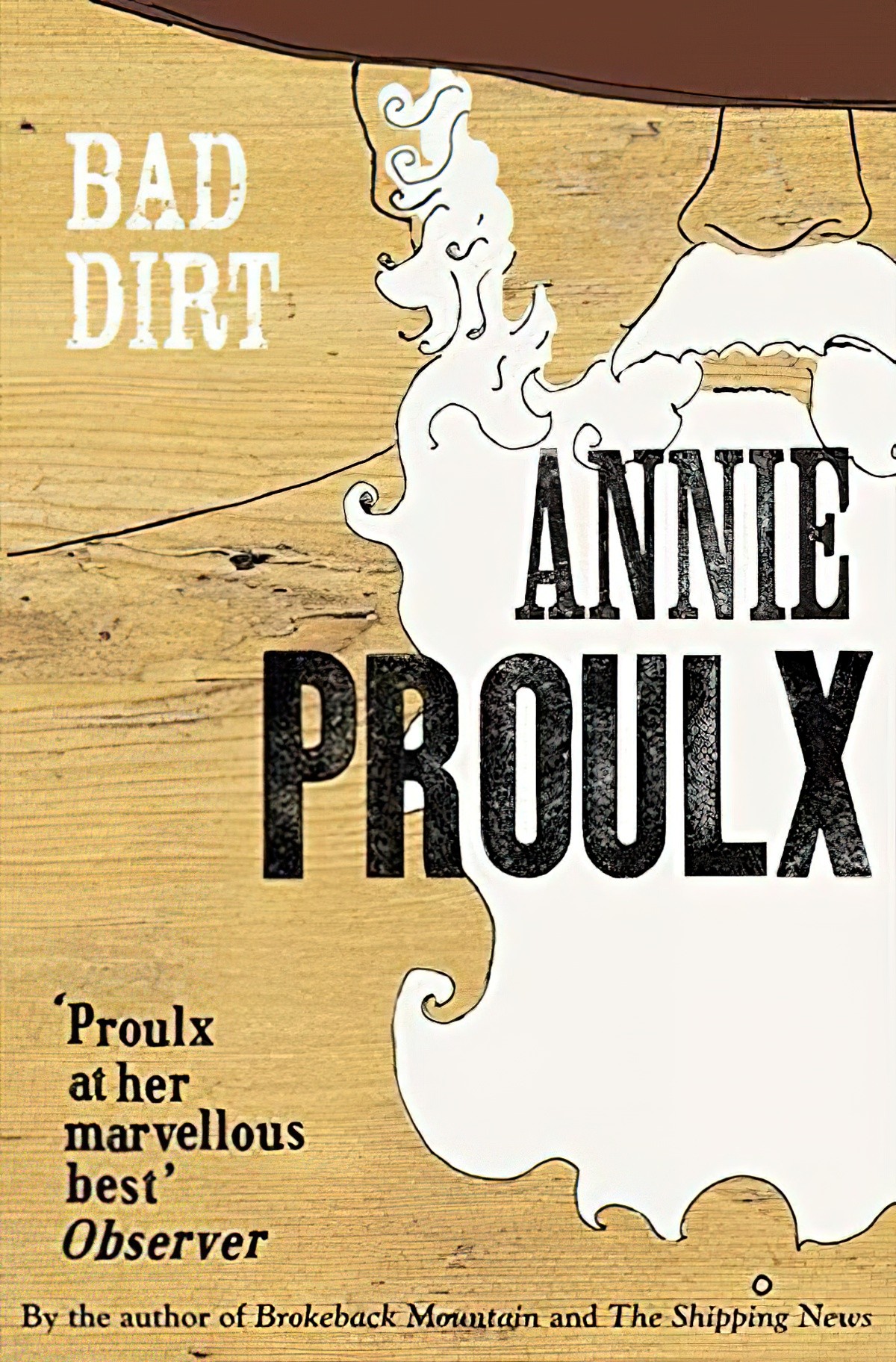
Five of the eleven stories are set in the fictional Wyoming town of “Elk Tooth”. Critics didn’t like this collection so much as the last Wyoming Stories.
Since the anthropological work of Mary Douglas in Purity and Danger, “dirt” has been understood as that which generates social boundaries, a method of designating what belongs within the social body and what should be expunged from it. Dirt and dirty bodies arise in this reading as dangerous and despised artifacts indicative of social margins and social anxieties. Dirt also comes to mark “waste” in the form of the body’s excess fluids such as “[s]pittle, blood, milk, urine, faeces” and of society’s excess. Importantly, dirt is a concept historically racialized and classed, and the expulsion of that which is dirty parallels the goals of empire building and white supremacy. Yet “dirt” and “waste” do not replicate
On The Politics Of Ugliness (Introduction)
the work of ugliness because dirt and ugliness cannot stand in for one another,
even though they are symbolically linked.
- The Hellhole
- The Indian Wars Refought
- The Trickle Down Effect
- What Kind of Furniture Would Jesus Pick — The misfortunes of an old farmer whose sons don’t want to follow him into the farming business… and no wonder.
- The Old Badger Game
- Man Crawling Out Of Trees — a husband and wife relocate to Wyoming but the husband likes it a lot better than the wife does. A seemingly small event ends their marriage.
- The Contest — in a small town in Wyoming, with an unrealistic number of bars for its minuscule population, the men decide to hold a beard growing contest. This is an example of Annie Proulx’s dark, dry humour.
- The Wamsutter Wolf — Nothing to do with actual wolves — a disturbing story about domestic violence, similar to Katherine Mansfield’s “The Woman At The Store” in plot, but nothing alike in setting or tone.
- Summer Of The Hot Tubs
- Dump Junk — Kind of like Bridges of Madison County if that were a magical realist fairy tale without the romantic plot and Annie Proulx wrote it.
- Florida Rental
Fine Just the Way It Is (2008)
- Family Man
- I’ve Always Loved This Place
- Them Old Cowboy Songs — set in the American Wild West though without the glamour.
- The Sagebrush Kid
- Deep-Blood-Greasy-Bowl
- Swamp Mischief
- Testimony of the Donkey
- Tits-Up in a Ditch
RICHARD YATES
- Fun With a Stranger by Richard Yates — a portrait of a sad, lonely old school teacher who has lost all sense of fun. Her idea of an end of year celebration is to buy the class each an eraser.
- A Glutton For Punishment by Richard Yates — A man is fired from his job and considers keeping this from his wife until he finds another one. But she knows him well, and when he gets home she is able to guess for herself.
- Doctor Jack-o’-Lantern by Richard Yates — A wonderful character study of a boy new to a school. He tries hard to fit in. His inexperienced teacher tries hard to help him fit in. Does not end well.
CARSON MCCULLERS
- Court In The West Eighties — set in New York in the 1930s, point of view character is a student who observes her neighbours. Similar to Hitchcock’s Rear Window.
- Sucker — a confessional story of cruelty between an older boy and a younger boy in the same family. Compare and contrast with “The Scarlet Ibis”.
- “Jockey“
ROBIN BLACK
- A Country Where You Once Lived — a man returns to England where he lived for a while with his American family. He has since moved on, and now he revisits not only his erstwhile country but his erstwhile family, realising he is no longer a significant part of their lives.
- Pine — a vaguely Bluebeard-ish tale of a woman who struggles to get past the death of her husband.
LORRIE MOORE
SELF HELP (1985)
- “How to Be an Other Woman“
- “What is Seized“
- “The Kid’s Guide to Divorce“
- “How“
- “Go Like This“
- “How to Talk to Your Mother (Notes)”
- “Amahl and the Night Visitors: A Guide to the Tenor of Love“
- “How to Become a Writer“
- “To Fill“
BIRDS OF AMERICA (1998)
- “Willing“
- “Which Is More Than I Can Say About Some People“
- “Dance In America“
- “Community Life“
- “Agnes of Iowa“
- “Charades“
- “Four Calling Birds, Three French Hens“
- “Beautiful Grade“
- “What You Want to Do Fine“
- “Real Estate“
- “People Like That Are The Only People Here: Canonical Babbling in Peed Onk“
- “Terrific Mother“
2014 (BARK)
- “Debarking“
- “The Juniper Tree“
- “Paper Losses“
- “Foes“
- “Wings“
- “Referential“
- “Subject To Search“
- “Thank You for Having Me“
DOROTHY PARKER
- Big Blonde — a feminist New York story in a non-feminist era and grandmother of Gillian Flynn’s Cool Girl archetype.
- “I Live On Your Visits“
RAY BRADBURY
- All Summer In A Day — On Venus, one girl is the victim of bullying and misses a once-in-a-childhood event.
- “The Night” — Written in second person, an eight-year-old learns of his mother’s fallibility when his older brother fails to return home one evening.
- “There Will Come Soft Rains“
- “The Traveler” — Another story about the Munster-ish family in “Homecoming”, related by blood to “Uncle Einar”. In this story, the bad egg of the family returns. His name is Uncle Jonn. No one likes him because in previous generations he has vengefully reported the family to police. This time he wants Cecy to help him. Cecy is the teenage girl who spends all her time teleporting. This time she has something to prove to her father, who is lazy, so she saves the family from the wayward uncle.
- “A Little Journey” — A prescient story foretelling the tragedy of Oceangate’s Titan in 2023, or an allegory about an elderly lady who has trouble adjusting to her new retirement village.
THE OCTOBER COUNTRY (1955)
- “Homesteading the October Country“
- “October Country“
- “The Dwarf” (Fantastic January/February 1954)
- “The Next in Line” (Dark Carnival, Arkham House: Sauk City, WI, 1947)
- “The Watchful Poker Chip of H. Matisse” (Beyond Fantasy Fiction March 1954)
- “Skeleton” (Weird Tales September 1945)
- “The Jar” (Weird Tales November 1944)
- “The Lake” (Weird Tales May 1944)
- “The Emissary” (Dark Carnival, Arkham House: Sauk City, WI, 1947)
- “Touched With Fire” a.k.a. “Shopping For Death” (Maclean’s June 1 1954)
- “The Small Assassin” (Dime Mystery Magazine November 1946)
- “The Crowd” (Weird Tales May 1943)
- “Jack-in-the-Box” (Dark Carnival, Arkham House: Sauk City, WI, 1947)
- “The Scythe” (Weird Tales July 1043)
- “Uncle Einar” (Dark Carnival, Arkham House: Sauk City, WI, 1947) — Read this story for an example of post WW2 idealised masculinity. A man is emasculated helping his wife at home. He must literally spread his wings before achieving self-actualisation.
- “The Wind” (Weird Tales March 1943)
- “The Man Upstairs” (Harper’s March 1947) — An eleven-year-old little psycho kills a boarder at his grandparents’ house, after using bits of broken glass to see like x-ray vision into the man’s body.
- “There Was An Old Woman” (Weird Tales July 1944)
- “The Cistern” (Mademoiselle May 1947) — Two spinster sisters watch the world from their window as they embroider. One has an active imagination. She makes up a self-insert fiction, no doubt inspired by the Gothic tradition, in which the underground sewer water sweeps her toward her lover.
- “Homecoming” (Mademoiselle October 1946) — Timothy is the only person in his extended family who hasn’t been born with a superpower. Now it’s time for the family gathering, held at Allhallows. This story is the companion to “Uncle Einar”, though it doesn’t matter which one you read first.
- “The Wonderful Death of Dudley Stone” (Charm Jul 1954)
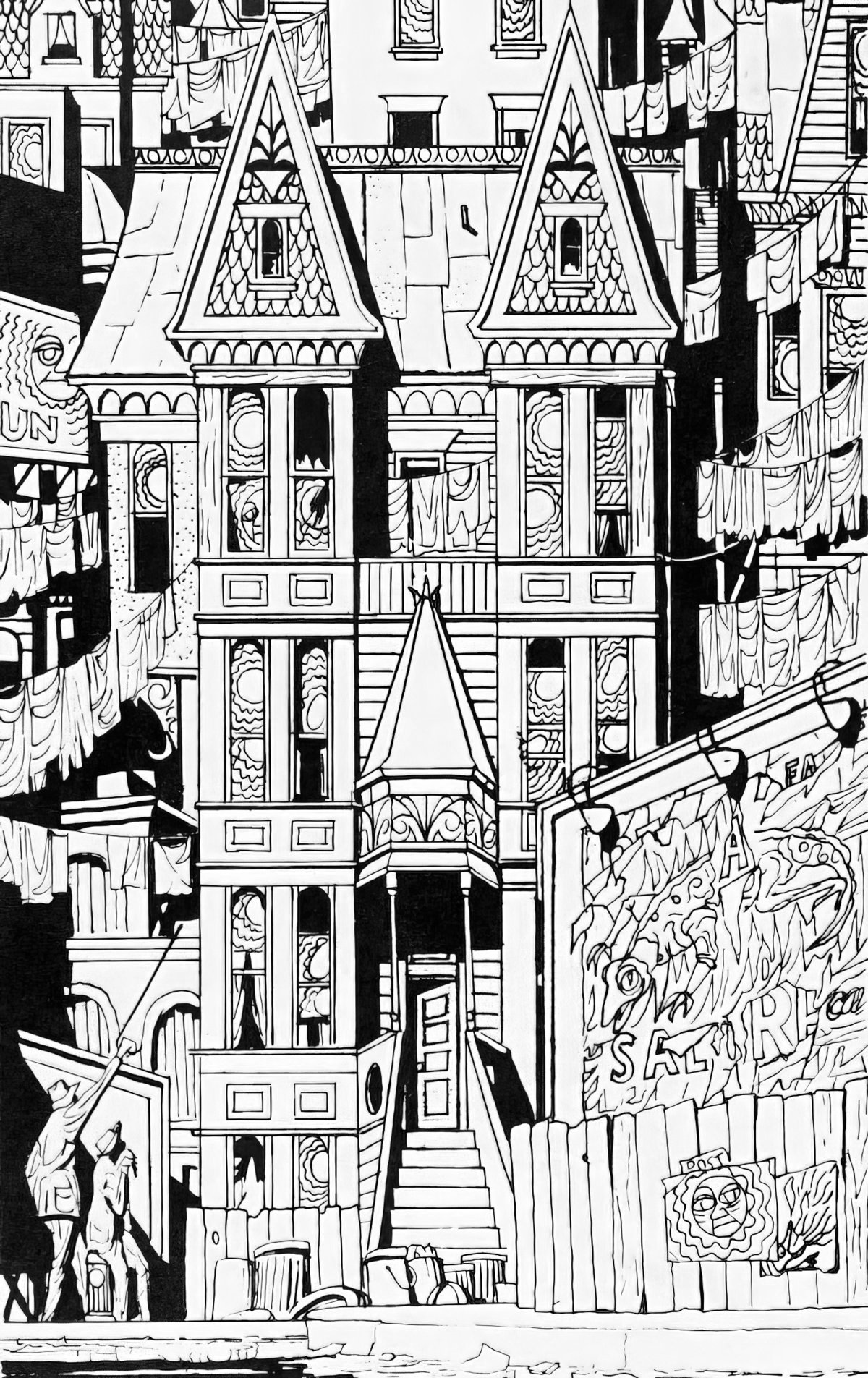
THE ILLUSTRATED MAN
- “The Veldt” — Parents threaten to take their kids’ screens away, so the little hackers arrange for the parents to get… taken care of by the digital ‘wallpaper’ while they head off into the African sunset.
- “Kaleidoscope“
- “The Other Foot“
- “The Highway“
- “The Man“
- “The Long Rain“
- “The Rocket Man” — The inspiration behind Elton John’s song?
- “The Fire Balloons“
- “The Last Night of the World“
- “The Exiles“
- “No Particular Night or Morning“
- “The Fox and the Forest“
- “The Visitor“
- “The Concrete Mixer“
- “Marionettes, Inc.“
- “The City“
- “Zero Hour“
- “The Rocket” A father would love to take his children on a trip to the moon, so starts restoring an old rocket in the yard. His wife doesn’t approve as he’s spent a good chunk of the family savings. Turns out he only intends to simulate a trip to the moon, with screens instead of windows and so on.
SHIRLEY JACKSON
THE LOTTERY AND OTHER STORIES
- “The Intoxicated“
- “The Daemon Lover“
- “Like Mother Used To Make“
- “Trial By Combat“
- “The Villager“
- “My Life With R.H. Macy“
- “The Witch“
- “The Renegade“
- “After You, My Dear Alphonse“
- “Charles” — a little boy complains to his parents about another boy in his class
- “Afternoon In Linen” — a young Goth girl wrestles for psychological control during a tea-party with another granny and her son.
- “Flower Garden“
- “Dorothy And My Grandmother And The Sailors“
- “Colloquy“
- “Elizabeth“
- “A Fine Old Firm“
- “The Dummy“
- “Seven Types Of Ambiguity” — Seven Types of Ambiguity is a work of literary criticism by William Empson which was first published in 1930. It was one of the most influential critical works of the 20th century and was a key foundation work in the formation of the New Criticism school. Australian author Eliot Pearlman named a novel after the work. Before Pearlman, Shirley Jackson also repurposed the title.
- “Come Dance With Me In Ireland“
- “Of Course“
- “Pillar Of Salt“
- “Men With Their Big Shoes“
- “The Tooth“
- “Got A Letter From Jimmy“
- “The Lottery” — Shirley Jackson’s most (in)famous short story.
JUST AN ORDINARY DAY

- “The Smoking Room” — A female student is visited by the devil one morning at three when she’s writing a paper. No men allowed in the dorms, but the devil is here to buy her soul. But what would a woman of letters do? Renegotiate the contract, of course. Pair with my posts on Tricksters In Storytelling and Deals With The Devil.
- “I Don’t Kiss Strangers“
- “Summer Afternoon“
- “Indians Live In Tents“
- “The Very Hot Sun In Bermuda“
- “Nightmare“
- “Dinner For A Gentleman“
- “Party of Boys“
- “Jack The Ripper” — (Also in Dark Tales). If not for the title, this story would be ambiguous. As it is, we can assume a man murders a teenage girl then goes home to his wife. The idea that murderers live quiet double lives in the suburbs has since been explored more fully in crime fiction so that contemporary readers will unlikely find that aspect of the story shocking. (See British TV series The Fall, for example, which aired from 2013-2016.) What we should still find shocking: The expendability of girls. Plenty of bystanders had the opportunity to intervene in the care of this child, yet none of them did.
- “The Honeymoon of Mrs. Smith” — As far as open endings go, this one is about as open as it gets. Shirley Jackson withholds the reveal. All we know is this: A middle-aged woman has always lived at home, caring for her father. Then her father died. One week ago she remarried. The man she married is highly suspect. The whole village is talking about her. Before going away for her honeymoon at the weekend, a concerned neighbour pops her head in and asks if the new Mrs. Smith is okay. People think they’ve seen her new husband in the paper. Readers can deduce that the man may be after her inheritance. There seems to be some financial abuse going on. Used to a more luxurious life, the new Mrs. Smith is now required to live on basic means, as is her new husband’s custom. I kept waiting for a Roald Dahl type ending, a la “Lamb to the Slaughter“. I kept waiting for her to realise, and then poison his small chops. But no. The story ends with no revelation on her part. This woman’s life has been set in motion, and now she is following grimly along tracks. The idea that choices we make can lock us in, forever, is perhaps the most terrifying idea of all.
- “The Sister“
- “Arch-Criminal“
- “Mrs. Anderson“
- “Come To The Fair“
- “Portrait“
- “Gnarly The King of the Jungle“
- “The Good Wife” — see Dark Tales
- “The Mouse“
- “My Grandmother And The World Of Cats“
- “Maybe It Was The Car“
- “Lovers Meeting“
- “My Recollections of S.B. Fairchild“
- “Deck The Halls“
- “Lord Of The Castle“
- “What A Thought“
- “When Barry Was Seven“
- “Before Autumn“
- “The Story We Used To Tell” — see Dark Tales
- “My Uncle In The Garden“
- “On The House“
- “Little Old Lady In Great Need“
- “When Things Get Dark“
- “Whistler’s Grandmother” — First published in The New Yorker in 1945, this short story is a single scene, set on a train. If you’ve ever encountered a passenger who speaks loudly and engages everyone around them, you’ll recognise this scenario. Jackson uses the story of an elderly woman to highlight the divide between the older, misogynistic archetype of womanhood with the new, freshly liberated wartime woman.
- “Family Magician“
- “The Wishing Dime“
- “About Two Nice People“
- “Mrs. Melville Makes A Purchase“
- “Journey With A Lady“
- “The Most Wonderful Thing“
- “The Friends“
- “Alone In A Den Of Cubs“
- “The Order Of Charlotte’s Going“
- “One Ordinary Day, With Peanuts“
- “The Missing Girl“
- “The Omen“
- “The Very Strange House Next Door“
- “A Great Voice Stilled“
- “All She Said Was Yes” — see Dark Tales
- “Home“
- “I.O.U.“
- “The Possibility Of Evil” — (also found in Dark Tales)
DARK TALES
- “The Possibility Of Evil” — An elderly woman called Miss Strangeworth has lived in her utopian little town all her life, for generations, barely leaving. She lives in a mansion on old money from logging. She dresses like someone from an earlier era and is particularly fond of her roses. Behind the scenes, she writes letters to its citizens, warning people in advance of possible evil. Until one day she is caught. Now she must worry for her roses. This short story feels like a cross between two contemporary films: Pleasantville and Minority Report.
- “Louisa, Please Come Home” — A young woman leaves the natal home without telling anyone. She starts a new life in a nearby town. Every year, her mother pleads on the radio for her return.
- “Paranoia” — A man travels from his workplace to home, convinced he’s being followed. Once home he is temporarily relieved, and sinks into the warm reception of his wife. But then she talks to someone on the phone and the paranoia resumes: The wife has plotted to have someone follow him. Of course, there’s always the possibility that he’s not paranoid at all. The paranoia plot has been well-covered in psychological thrillers, so this story no longer feels fresh. In fact it’s a bit of a slog to read, like hearing about someone’s dream.
- “The Honeymoon Of Mrs. Smith” — (Also found in Just An Ordinary Day, in two different forms.)
- “The Story We Used To Tell” — Hear this story dramatized at the Levar Burton Reads podcast. A woman goes to stay in a big, gothic mansion with her childhood friend (known only as ‘Y’) as Y comes to terms with the recent death of her husband. One morning, the first person narrator guest wakes up to find her friend gone. None of the house staff knows what happened to her. Well, the mystery is soon solved. She’s been sucked into the creepy-ass painting hanging on the bedroom wall. This story has an ambiguous ending. Basically, make up your own mind what happened. From an analysis point of view, this story is interesting because of the Trompe-l’œil (an art technique that uses realistic imagery to create the optical illusion that the depicted objects exist in three dimensions) and the interpenetration of the supernatural picture. This overlaps with what we might call ‘window symbolism’, common in stories which make use of framing devices. What does Shirley Jackson asks us to ‘reframe’? I believe there are feminist observations buried not so deep in this one.
- “The Sorcerer’s Apprentice” — An English teacher in her early thirties receives a visit one day from a neighbour child who has invited herself in to play records. The teacher has been playing “The Sorcerer’s Apprentice“. Apparently the recordings are of her father, a pianist, who is off to kill Nazis in the war. But the child is an a$$hole. She wants to take the teacher’s doll home, and when she’s not allowed, she smashes it. So the teacher smashes the record. This story reminds me of “The Child” by Ali Smith. Both feature implausibly unlikeable children with preternatural knowingness, and function as an outworking of a woman’s fear of motherhood, subverting the idea that women are natural mothers. (For an excellent exploration of that particular theme, watch The Lost Daughter, which also features a doll.)
- “Jack The Ripper” — See: Just An Ordinary Day
- “The Beautiful Stranger” — In Jackson’s stories, characters sometimes lose their sanity and sometimes lose their identity. Margaret of this story is an example of the latter.
- “All She Said Was Yes” — A Wednesday Addams archetype, fifteen-years-old, can see the future and knows when people are going to die, including her own parents. This short story is narrated by the busybody next door neighbour who finds the girl creepy, but does her duty anyway, caring for this kid until a distant relative arrives to relieve her of the burden.
- “What A Thought” — Michelle Obama famously said she spent ten years of her marriage hating Barack. It started when they had kids. Hating your spouse resonated with many straight couples. In this short story, Shirley Jackson’s fictional wife is bothered one summer’s evening with intrusive thoughts about killing her husband. Every item in the house seems to offer a method. The husband can see she’s unsettled, but he’s done nothing wrong. There’s no way he can predict what his loving wife is thinking. She considers drowning (in a fish bowl), poisoning (with nicotine from a cigarette soaked in water) and finally, impulsively, strikes him on the head with a heavy ashtray. ‘High Places Phenomenon’ describes the sudden, impulsive urge to jump to one’s death. This story has me wondering if Impulsive Murder is a thing (separate from a crime of passion). The idea that our own occasional negative thoughts could drive us to murder the person we love most is the horror of this story.
- “The Bus” — An elderly woman is trying to get home. Travel is disrupted. The creepy journey circles back to her youth. This story messes with time in the most beautifully adept way. This is one of Shirley Jackson’s very best short stories.
- “Family Treasures” — A strange, introverted, socially awkward young woman has lost her entire family and has come under the care of her university. She lives in a large house with numerous other young women. She is briefly treated differently by the other girls, then goes back to invisibility. Using invisibility to her advantage, she starts stealing things from other girls’ rooms. At first no one notices or says anything but eventually everyone starts suspecting each other. Social dynamics become even worse when the young, inexperienced woman in charge of the dorm decides to search everyone’s rooms. Instead of doing this search discreetly herself (or going about it in some entirely different way), the girls themselves join in the search, each uncovering other girls’ biggest secrets and shames. The perpetrator is never discovered. The story ends with Anne taking the stolen items, plus a few more for good measure, out the door. We have no idea whether she will return.
- “A Visit” — A young woman called Margaret spends summer holidays with a girlfriend at the friend’s creepy mansion. Who in this story is real? Who is a duplicate? While exploring, Margaret enters a tower where she is told she will find an Old Woman in the Attic. Turns out this old woman is also called Margaret. Shirley Jackson gives us the creepy vibes with this one, but not the hermeneutical closure. This short story has also been published with the title “The Lovely House“.
- “The Good Wife” — In an early example of a catfishing story, a man keeps his wife upstairs in bed, allowing her to read library books and that’s about it. (This aspect is part of a long tradition of Madwoman In The Attic stories cf. Jane Eyre.) He writes letters to people in the outside world as if from his wife.
- “The Man In The Woods” — A man is lost in the woods. We know nothing about him except he appears to be an archetypal young man. He stumbles across a cottage (as you do), inhabited by two women and a man who controls them. The women are not allowed to leave the kitchen. When he enjoys the food they cook but does nothing to intervene about their domestic incarceration, Shirley Jackson makes sure to let us know he won’t be getting away scott free.
- “Home” — Shirley Jackson’s spin on the ghostly vanishing hitch-hiker urban legend. I could have written more about that, except I was more interested in how she took the gossiping, busy-body archetype and gave this woman her own character arc.
- “The Summer People” — Shirley Jackson never lived to see old age, but she imagined it well. This is the story of two New Yorkers who spend summers at a country cottage. They decide one year to stay beyond Labor Day, but are disturbed to learn how unwelcome they are. Nobody helps them with supplies, nobody wants them around. The story feels like an allegory for how society feels when capitalism no longer has any use for us.
VARIOUS
- “The Shadows On The Wall” by Mary E. Wilkins Freeman — Honestly, this writer’s life is more interesting that the story, which would have felt to her contemporary readers like a delicious blend of the supernatural with realism, but which now feels like a story whose climax is ruined by the title.
- “The People Across The Canyon” by Margaret Millar — Who are the new people recently moved into the house across the canyon? Why is our little girl so interested in spending time with these glamorous and mysterious people?
- “I Am Waiting” by Christopher Isherwood — set between the world wars, with perhaps some SF elements, or is this a story about mental illness?
- “The Great Chain Of Being” by Kim Edwards. Well-known for her later novel The Memory Keeper’s Daughter, Kim Edwards has also written numerous short stories, no doubt inspired by time spent living in various Asian countries. This one is a feminist tale about a woman who eventually manages to break free of the gender restrictions placed upon her in her youth.
- “Cat Skin” by Kelly Link is a modern story with a fairytale feel. It’s what I call batshit. If you would like to go AWOL, read this for reassurance. Or maybe you understand the story better than I do.
- “A Rose For Emily” by William Faulkner — A story of an aged, woman-in-the-attic recluse written in Gothic style.
- “Paul’s Case” by Willa Cather — a young fantasist growing up in Pittsburg does a Psycho (steals money from his job) then relocates to New York City to start a new life and completely reinvent his backstory. Doesn’t end well for him.
- “The Blue Hotel” by Stephen Crane — A midwestern snow storm throws strangers together overnight. One of them is unhinged. This story is an example of naturalism (the literary movement).
- “The Damned Thing” by Ambrose Bierce — the sort of work that is parodied by Welcome To Night Vale
- “Old Man Minick” by Edna Ferber — A widower learns how to live contentedly after his wife dies unexpectedly before he does. Set in Chicago.
- “Champion” by Ring Lardner — Pair with one of my favourite films, The Wrestler.
- “The Secret Life of Walter Mitty” by James Thurber — the short story which led to ‘Walter Mitty’ used to describe a man who is full of big ideas, none of which come to fruition.
- “I’m A Fool” by Sherwood Anderson — when you big yourself up too much you end up ruining a chance at romance.
- “The Leader of the People” by John Steinbeck — The title doesn’t draw me in, but I loved this short story a lot.
- “The Pearl” by John Steinbeck has folkloric overtones, patriarchal violence and the Female Maturity Formula.
- “The Killers” by Ernest Hemingway — seems nothing special to me now, but remember this was groundbreaking stuff that paved the way for The Godfather and The Sopranos. Gangsters walk among us, the ordinary people.
- “The Gift of the Magi” by O. Henry — a rare example of a twist ending which isn’t basically saying something terrible about humankind.
- “Flowering Judas” by Anne Porter — This short story reminds me of “A Dill Pickle” by Katherine Mansfield. Both stories are clearly about the way in which women are socially acculturated into providing emotional labour for men, but written in a time before such language existed to described the phenomenon.
- “A Good Man Is Hard To Find” by Flannery O’Connor — a family encounters some escaped criminals while on a road trip. Told from the grandmother’s point of view. Does not end happily.
- “The Scarlet Ibis” by James Hurst — a confessional story of an older brother’s cruelty towards his disabled younger brother. Strong in symbolism, notably colour symbolism.
- “Coming Soon” by Steven Millhauser
- “The Years Of My Birth” by Louise Erdrich
- “The Shawl” by Cynthia Ozick
- “Red Card” by S.L. Gilbow — If you were allowed to legally kill someone, would you? Could you? That’s the question this story asks us to consider. Gilbow creates a society in which you’re allowed to kill someone so long as you are in possession of a government issued red card.
- “Heat” by Joyce Carol Oates — The story of a midcentury small town and the murder of eleven-year-old twin girls. The narrator returns to the site of the crime as an adult and imagines in detail what happened. This story is an excellent example of omniscient first person narration.
- “Gravity” by David Levithan — Set at the height of the HIV/AIDS crisis, a dying young man moves back home to New Jersey where his mother provides palliative care in a bustling, busy kind of way. She insists on taking him to a gift store in NYC where she means to buy an expensive gift for her nephew as revenge on her sister for dismissing her gay son.
- Hunters in the Snow by Tobias Wolff — An example of anti-myth featuring three low mimetic heroes who get themselves into trouble due to their own stupidity. Written in a darkly comic way, this short story also serves as an example of how audiences regarded fat people in the 1990s.
Canadian Short Stories
Alice Munro
Like most Alice Munro fans, I was outside the so-called “whisper network” concerning the child sexual abuse perpetuated by Munro’s second husband George Fremlin against Alice Munro’s daughter, Andrea, who was just 9 years old when abuse started. I learned of this for the first time in July 2024 after Andrea published her piece in the Toronto Star.
Immediately, Alice Munro’s short stories hit differently. It is impossible to separate the art from the artist in this case, especially in some of the stories, which now seem to be Munro’s way of wrestling with the reality that she chose to stay by Fremlin’s side rather than maintain a relationship with her own daughter, despite Fremlin pleading guilty. The stories about fractured parent-child relationships especially hit differently.
My analyses of Munro’s work predate knowledge of Fremlin’s abuse, and of Munro’s decision to stick by him.
Dance of the Happy Shades (1968)
This was Munro’s first collection, published in Canada in 1968 and in the United States in 1973. The stories are mostly unrelated, but thematically cohesive.
This collection features adolescent girls and young women and their challenges growing up in a quasi-rural Canadian town. Stories are autobiographical in form but not in fact (as is the next collection, Lives of Girls and Women). Munro has said in interview that these stories are ‘personal’. She draws on her own experiences but reshapes and recombines. The emotions are real, the facts changed.
- Transition from autonomy to societal expectations: The girls find themselves restricted to conventional household works, transitioning from being autonomous individuals to passive objects.
- Pressure to conform to gender roles: The girls are expected to become pleasing objects and face discomfort in their own skin.
- Awareness of adult realities: The girls come across key moments in their lives where they become aware of the adult world’s reality in relation to their own potential for sexuality and the complexity of gender roles in society.
Alice Munro was one of the Canadian authors who, in the 1960s, transformed the short story.
Canadian authors began to write in a different tone and showed a special interest in new themes. They moved away from using traditional plots and focused more on characterisation. This shift in approach allowed them to reflect social events of their time and explore the diversity of life in all Canadian provinces. Other notable authors such as Henry Kreisel, Norman Levine and Mavis Gallant were part of this transformation.
Munro refused to adhere to traditional plot structures and instead emphasized characterisation, especially when it came to exploring the struggles of women.
- “Walker Brothers Cowboy” — A woman looks back at her 1930s childhood. Her family has 2 or 3 months earlier lost the family fox farm and moved to a small town on the edge of Lake Huron, where the father has started a new job as a door-to-door salesman. Meanwhile, the mother sinks into a depressive state. One day, the father takes the narrator and her younger brother on a ride, where he visits an old friend/lover. The daughter learns that her father had another sort of life once.
- “The Shining Houses” — In a new neighbourhood, many houses have been built next to an old one. The owner of the older house, Mrs. Fullerton, does not take care of her property to the extent that the owners of the new houses would like. They conspire to get rid of the old poultry-farming witch. Only our narrator seems conflicted.
- “Images” — A little girl is the narrator of this double character study: A second cousin who came to take care of the household while her own mother was sick, and a man with a psychotic mental illness who lived alone in the woods. After meeting the man in the woods, the little girl learns not to be afraid of the woman who has infiltrated the household to take care of them all.
- “Thanks for the Ride” — This story is written with the viewpoint character of a young man. He has just finished school and is out with his older cousin with the purpose of losing his virginity. Together they pick up some ‘loose’ girls. The whole experience is perfunctory and defamiliarizing.
- “The Office” — A housewife decides to improve her life by carving out some time for herself to pursue her passion of writing. So she rents a room above a hair salon and drugstore. But the landlord won’t leave her in peace, deeming her time his.
- “An Ounce of Cure” — A young teenager is pining after a boy who dumped her months ago for another girl. She can barely think of anything else. One night she is babysitting when she spies three bottles of liquor on the bench. She accidentally gets very drunk and very caught out. Her reputation is ruined. But as an older woman looking back on this time, she is glad it happened.
- “The Time of Death” — A mother who lives in one of the squalid cottages on the edge of town has lost a child in a terrible accident. The village gathers round, but how genuine are they in their grief?
- “Day of the Butterfly” — Two girls at a primary school are ostracised. One is the narrator, now grown, ostracised for being an out-of-towner who doesn’t wear the right clothes. The other is more ostracised still, because her parents are immigrants, because she smells like rotting fruit, and because her brother needs her to accompany him to the toilet. When this girl is dying in hospital from child leukemia, the young narrator is filled with inexplicable grief. It is now too late to be a real friend to this outcast, and anything she does in kindness will feel empty and pointless.
- “Boys and Girls” — An outdoorsy farm girl loves helping her father on the fox farm but realises she’ll very soon be required to go indoors to help her mother with domestic work. In contrast, her younger brother, far less conscientious, will be allowed to stay outside and work with the animals, enfolded and welcomed into the masculine world.
- “Postcard” — A woman around the age of 30 has been seeing a man for years. They’re long-term partners. The reason they haven’t married: He’s waiting for his mother to die. His mother wouldn’t approve of him marrying the narrator, we deduce because of the wealth disparity. Unfortunately for the narrator (Helen), turns out the guy never intended to marry her anyway. He sends her a postcard from Florida telling her how he’s having such a good time. Next minute, Helen’s best friend is round to break the bad news: It’s been published in the paper, the lover is getting married to someone else after all this time. The weasel didn’t have the gumption to let Helen know. So she goes round to his house, stands outside and expresses her grief in a very vocal way.
- “Red Dress—1946” — A thirteen-year-old girl’s first ball. Her mother sews a red dress with a princess neckline. Suddenly she looks much older. She barely recognises herself in the mirror, and longs for childhood again. Almost all the girls around her are obsessively interested in boys. Everyone, that is, except one other girl who says she despises boys, and plans to support herself by working as a P.E. teacher. But by aligning herself with this queer girl, our thirteen-year-old risks much. What will she do? Will she take up the offer of friendship?
- “Sunday Afternoon” — Seventeen-year-old Alva has recently finished high school and started working as a maid for the mega-wealthy Gannetts. Today they are hosting a party at their mansion and Alva must navigate a delicate social situation: They want her to feel part of the family, but what does that mean, exactly, when you’re actually the paid help? Alva must also navigate the men who enter the house, several of whom express sexual interest in her. This isn’t your run-of-the-mill, predictable young-woman-is-seduced storyline, but Alice Munro keeps readers in audience superior position as we watch with bated breath what happens to Alva in this big, lonely island of a house. We’re left to deduce most of it.
- “A Trip to the Coast” — An eleven-year-old girl called May lives with her mother and grandmother (mostly her grandmother) in a general store in a three-house township. There’s nothing to do in this one horse town. But today she’s looking forward to same-age company. However, the “company” is a total let-down, and so her grandmother, for the first time ever, suggests the two of them take a trip to the coast. But then another visitor comes. A customer who declares himself an amateur hypnotist. This story ends on a cliff hanger, and I don’t believe Munro has given us enough of a symbolic layer to fill in the gaps for ourselves. I believe we’re supposed to feel exactly as unmoored as eleven-year-old May, waiting out front of the store in the rain.
- “The Peace of Utrecht” — Numerous critics and scholars consider this story the jewel of the crown of Munro’s first collection. Considering that, it’s baffling why it doesn’t make it into more Selected and Collection volumes. It’s certainly the most overtly personal of Munro’s early stories, and she has said in interview that this one changed the way she wrote. Until writing “The Peace of Utrecht” she’d written to be a writer. Now she wrote because she knew only she could write this story. The biographical relevancy: young Alice Munro cared for her mother over many years as her mother lived, then died, with Parkinson’s disease.
- “Dance of the Happy Shades” — An emotionally astute and very observant adolescent girl is required to accompany her mother to an embarrassing recital with the elderly, unfortunate-looking spinster teacher whose spinster sister is recently bedridden due to a stroke. The story is told via the slightly baffled viewpoint of the girl, who is required to recite a tune on the piano at these excruciating annual events.
Lives of Girls and Women (1971)
In 1979 Alice Munro spoke out against banning books on CBC. The school board in her native Huron County had banned her book Lives of Girls and Women from the Grade 12 syllabus. All the more reason to read it, right?
While she was writing The Lives of Girls and Women, Munro was looking after her daughters as well as one of her daughter’s friends. She also worked at Munro’s Books two days a week. She would write until 1 a.m. and wake up at 6 a.m., and became concerned she would die of a heart attack.
90 Things To Know About Master Short Story Writer Alice Munro
Margaret Atwood has said that this is a novel mistaken for a short story collection. Atwood, who counts Munro as a same-age influence, utilised a sentence from Lives of Girls and Women for the title of a lecture on the Canadian north in literature, especially taken it:
People’s lives, in Jubilee as elsewhere, were dull, simple, amazing and unfathomable — deep caves paved with kitchen linoleum.
Alice Munro
I was intrigued by the contrast between the domestic linoleum and the natural and potentially dangerous cave, and in women-in-the-North stories there is often such a contrast — sometimes with the linoleum being the more treacherous feature.
Margaret Atwood
When her one novel, Lives of Girls and Women was called “only a collection of short stories,” she wasn’t bothered, saying she didn’t feel that a novel was any step up from a short story. To her credit, she has never wavered from that judgment.
Charles E. May
Munro herself has said that Lives of Girls and Women is more of a novel than Beggar Maid. Lives of Girls and Women is an episodic novel, whereas Beggar Maid is a collection of linked short stories.
- “The Flats Road” — The story of childlike eccentric “Uncle Benny”, a man who worked for Del’s father on the fox farm. In his late 30s he decides it’s time to be married so he puts an ad in the personals. Securing a wife in the first instance isn’t a difficult at all. Keeping her? Well, that’s a different matter.
- “Heirs of the Living Body” — The previous story was about an unrelated “uncle” but this one concerns a blood relative. Young Del’s (real) Uncle Craig dies and Del is required to attend his funeral. Unfortunately she disgraces herself. Some years later, two aunts expects her to read and finish writing an historical tome in the voice of the dead Uncle Craig. But Del has literary aspirations of her own.
- “Princess Ida” — This is the story of Del’s mother, who was a Clever Girl in school, then married a fox farmer and now must find a way to keep that feeling of aliveness while stuck as a housewife and mother in a small town.
- “Age of Faith” — Del’s parents are not religious but Del decides to investigate. While “attending” church with her mother’s housemate one morning, she skips out and goes to a different church.
- “Changes and Ceremonies” —
- “Lives of Girls and Women” —
- “Baptizing“
- “Epilogue: The Photographer“
Something I’ve Been Meaning to Tell You (1974)
- “Something I’ve Been Meaning to Tell You” — Two elderly sister have their world shaken up when Blaikie Noble arrives back in town. Char was once in love with him, maybe. So was Et, maybe. Char was the beautiful sister; Et, not so much. Alice Munro does not offer hermeneutical closure on this mystery story which maybe involves murder, maybe a natural death. I think the feminist messages are the main point of this one.
- “Material” — A woman looks back to her brief first marriage when she was married to a self-important writer. One rain-stormy night the husband insisted they turn off the pump which normally runs constantly to prevent the basement from flooding. In the basement lives the landlady’s daughter, a sex worker. Sure enough, the basement floods. The narrator’s marriage ends soon after that. This short story is about who we really are, versus how we present ourselves in the world. The irony of the story is that this narrator hasn’t fully taken responsibility for her role in the flooding.
- “How I Met My Husband” — A woman called Edie looks back to the time when she was a 15-year-old housemaid, and became briefly besotted with the blow-in philandering pilot who left as quickly as he came, but not after kissing her first. The story is really about the three adult women in her life, who each have a different reaction to the news that she has been kissed by the much older man.
- “Walking on Water” — An elderly man lives in a block of flats surrounded by young people, mostly hippies. He befriends a young man named Eugene, who shows signs of disassociation or psychosis. When Eugene insists on a demonstration showing others in the community he can walk on water, Lougheed tries his best to save the young man’s reputation.
- “Forgiveness in Families” — A woman feels resentment because while she is stuck doing the caring work for her aging mother, the unreliable brother waltzes in and gets all the credit. After one health incident, the brother’s character is illuminated in the worst light, but even then, the mother doesn’t see it. How does the narrator live with this? What is she to make of her mother’s relationship with her brother?
- “Tell Me Yes or No” —
- “The Found Boat” — Two adolescent girls are enjoying themselves in the shallow waters of a receding five-yearly flood when they are harassed by three of their male classmates from school. The girls find a battered boat tangled in branches and are dismayed to find that although they meant to disappoint the boys, the boys are excited by it, immediately claiming not just the boat, but the entire natural world for themselves. Using river as metaphor for a variety of things, this story begins as a fun carnivalesque story then takes a darker turn. I consider this story under-read and under-rated.
- “Executioners” —
- “Marrakesh” —
- “The Spanish Lady” — This short story contains an example of how Alice Munro creates Othered characters who live in their own Other Country, either different because of time or space. The Rosicrucian takes the main character back to the world of the Conquistadors. (See a similar technique in “Walker Brothers Cowboy,” in which a father teaches his daughter about the geography of Lake Huron before taking her on a road trip to visit an old friend of his own.)
- “Winter Wind” — This story feels semi-autobiographical. A young woman visits her grandmother and aunt after school. Their house is a cosy respite from her home life, where the young woman does the bulk of the household tasks due to her mother’s degenerative sickness, all the while annoyed by the hustle and bustle of the household, in which keeping it clean is a Sisyphean task. So she quietly does her homework at the relatives’ house. Outside, winter closes in with a blizzard. Despite the cosiness of her extended relatives’ home, and their offers to ‘help’ with the housework, the young woman has a strong hankering to return home. This desire upsets her relatives, ostensibly because someone they know just died in the snow while milking the cows, but there’s more to their desperation than that.
- “Memorial” — A woman flies to her wealthy, super-organised sister in Vancouver who has recently lost her son due to a car accident. She means to take care of the sister, though that’s not quite what happens.
- “The Ottawa Valley” —
Who Do You Think You Are? (1978) also published as The Beggar Maid
- “Royal Beatings” — first published in The New Yorker, March 14, 1977 edition)
- “Privilege” — first published in Ms., 1978 under the title “The Honeyman’s Daughter”
- “Half a Grapefruit” — first published in Redbook, May 1978
- “Wild Swans” — first published in Toronto Life in March, 1978
- “The Beggar Maid” — first published in The New Yorker in June 1977
- “Mischief” — first published in Viva in April, 1978
- “Providence” — first published in Redbook in August 1977
- “Simon’s Luck” — first published in Viva, 1978 under the title “Emily”
- “Spelling” — first published in Weekend, June 1978
- “Who Do You Think You Are?“
The Moons of Jupiter (1982)
- “Chaddeleys and Flemings I: The Connection“
- “Chaddeleys and Flemings II: The Stone in the Field“
- “Dulse” also in the July 21, 1980 edition of The New Yorker
- “The Turkey Season” also in the December 29, 1980 edition of The New Yorker — A shy 14-year-old girl goes to work one winter at the nearby Turkey Barn, where she is introduced to the adult world for the first time. Looking back as an older woman, she interprets this time differently.
- “Accident“
- “Bardon Bus“
- “Prue” also in the March 30, 1981 edition of The New Yorker
- “Labor Day Dinner” also in the September 28, 1981 edition of The New Yorker. The story of a narcissistic man about one year into a new relationship with a new partner. Over the course of one dinner with their mutual friend, the relationship enters a new phase.
- “Mrs. Cross and Mrs. Kidd“
- “Hard-Luck Stories“
- “Visitors“
- “Moons of Jupiter” also in the May 22, 1978 edition of The New Yorker, but in the collection there are minor differences e.g. the vocation of the narrator has changed.
The Progress of Love (1986)
- “The Progress of Love” also in the October 7, 1985 edition of The New Yorker
- “Lichen” also in the July 15, 1985 edition of The New Yorker
- “Monsieur les Deux Chapeaux“
- “Miles City, Montana” also in the January 14, 1985 edition of The New Yorker
- “Fits“
- “The Moon in the Orange Street Skating Rink” also in the March 31, 1986 edition of The New Yorker
- “Jesse and Meribeth“
- “Eskimo“
- “Queer Streak“
- “Circle of Prayer“
- “White Dump” also in the July 28, 1986 edition of The New Yorker
Friend of My Youth (1990)
- “Friend of My Youth” also in the January 22, 1990 edition of The New Yorker
- “Five Points” also in the March 14, 1988 edition of The New Yorker
- “Meneseteung” also in the January 11, 1988 edition of The New Yorker
- “Hold Me Fast, Don’t Let Me Pass“
- “Oranges and Apples” also in the October 24, 1988 edition of The New Yorker
- “Pictures of the Ice“
- “Goodness and Mercy” also in the March 20, 1989 edition of The New Yorker
- “Oh, What Avails” also in the November 16, 1987 edition of The New Yorker
- “Differently” also in the January 2, 1989 edition of The New Yorker
- “Wigtime” also in the September 4, 1989 edition of The New Yorker — A woman returns to her home town to care for her ageing, hospitalised mother. There she reunites with a friend from school. Although the two girls grew up in very similar circumstances, they differ in one major way: The friend grew up with an abusive father. Their lives have therefore gone very differently.
There are a number of Alice Munro short story collections, some with various covers. It’s not easy to find the contents of each. I’ll do the best I can here as I don’t own selections myself. Selected Stories appears to also go by the later title of A Wilderness Station: Selected Stories, 1968-1994.
A WILDERNESS STATION: SELECTED STORIES, 1968-1994
- “Walker Brothers Cowboy” —
- “Dance of the Happy Shades” —
- “Postcard” — A woman around the age of 30 has been seeing a man for years. They’re long-term partners. The reason they haven’t married: He’s waiting for his mother to die. His mother wouldn’t approve of him marrying the narrator, we deduce because of the wealth disparity. Unfortunately for the narrator (Helen), turns out the guy never intended to marry her anyway. He sends her a postcard from Florida telling her how he’s having such a good time. Next minute, Helen’s best friend is round to break the bad news: It’s been published in the paper, the lover is getting married to someone else after all this time. The weasel didn’t have the gumption to let Helen know. So she goes round to his house, stands outside and expresses her grief in a very vocal way.
- “Images” — A young girl is the narrator of this double character study: A second cousin who came to take care of the household while her own mother was sick, and a man with a psychotic mental illness who lived alone in the woods.
- “Something I’ve Been Meaning to Tell You” — Two elderly sister have their world shaken up when Blaikie Noble arrives back in town. Char was once in love with him, maybe. So was Et, maybe. Char was the beautiful sister; Et, not so much. Alice Munro does not offer hermeneutical closure on this mystery story which maybe involves murder, maybe a natural death. I think the feminist messages are the main point of this one.
- “The Ottawa Valley” —
- “Material” — A woman looks back to her brief first marriage when she was married to a self-important writer. One rain-stormy night the husband insisted they turn off the pump which normally runs constantly to prevent the basement from flooding. In the basement lives the landlady’s daughter, a sex worker. Sure enough, the basement floods. The narrator’s marriage ends soon after that. This short story is about who we really are, versus how we present ourselves in the world. The irony of the story is that this narrator hasn’t fully taken responsibility for her role in the flooding.
- “Royal Beatings” —
- “Wild Swans” —
- “The Beggar Maid” —
- “Simon’s Luck” —
- “Chaddeleys and Flemings” —
- “Dulse” —
- “The Turkey Season” — A shy 14-year-old girl goes to work one winter at the nearby Turkey Barn, where she is introduced to the adult world for the first time. Looking back as an older woman, she interprets this time differently.
- “Labor Day Dinner” — The story of a narcissistic man about one year into a new relationship with a new partner. Over the course of one dinner with their mutual friend, the relationship enters a new phase.
- “The Moons of Jupiter” — A middle-aged woman reflects on the time leading up to her father’s death.
- “The Progress of Love” —
- “Lichen” —
- “Miles City, Montana” —
- “White Dump” —
- “Fits” —
- “Friend of My Youth” —
- “Meneseteung” —
- “Differently” —
- “Carried Away” —
- “The Albanian Virgin” —
- “A Wilderness Station” —
- “Vandals” —
Penguin have published two collections with the following covers:
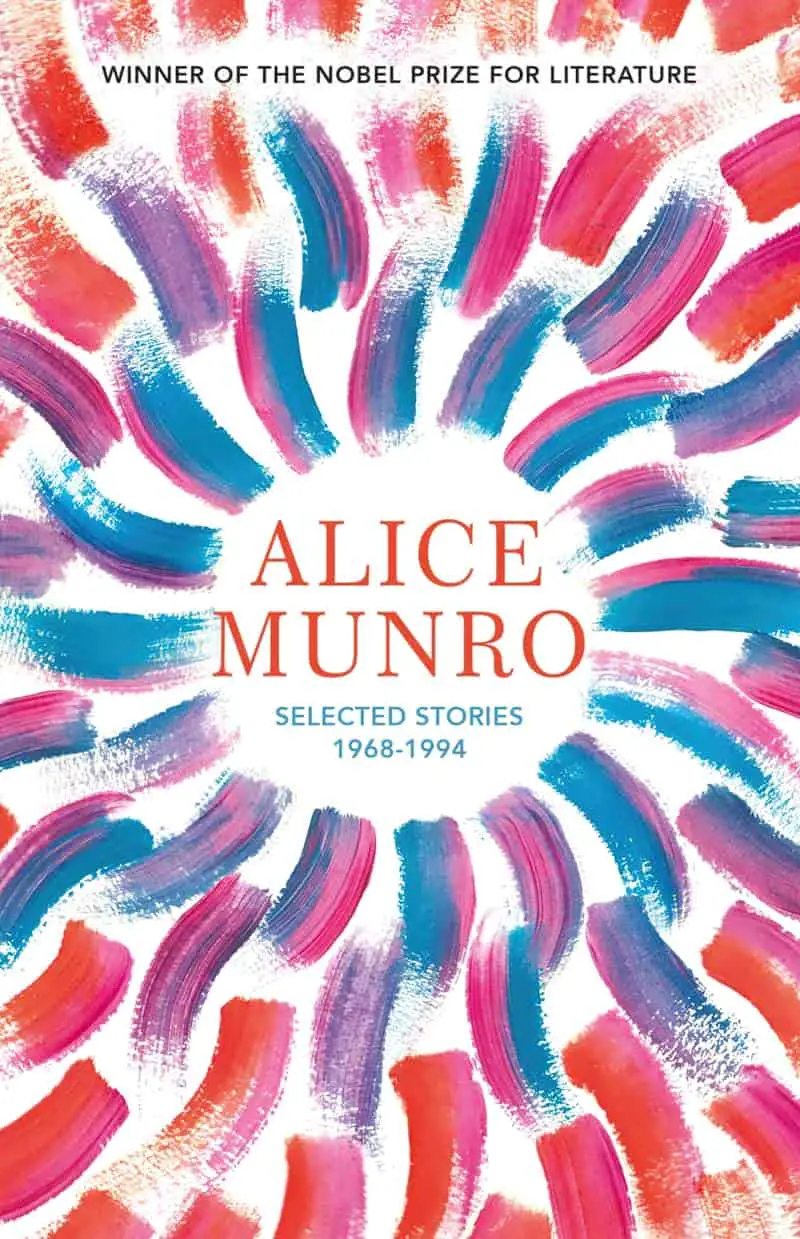
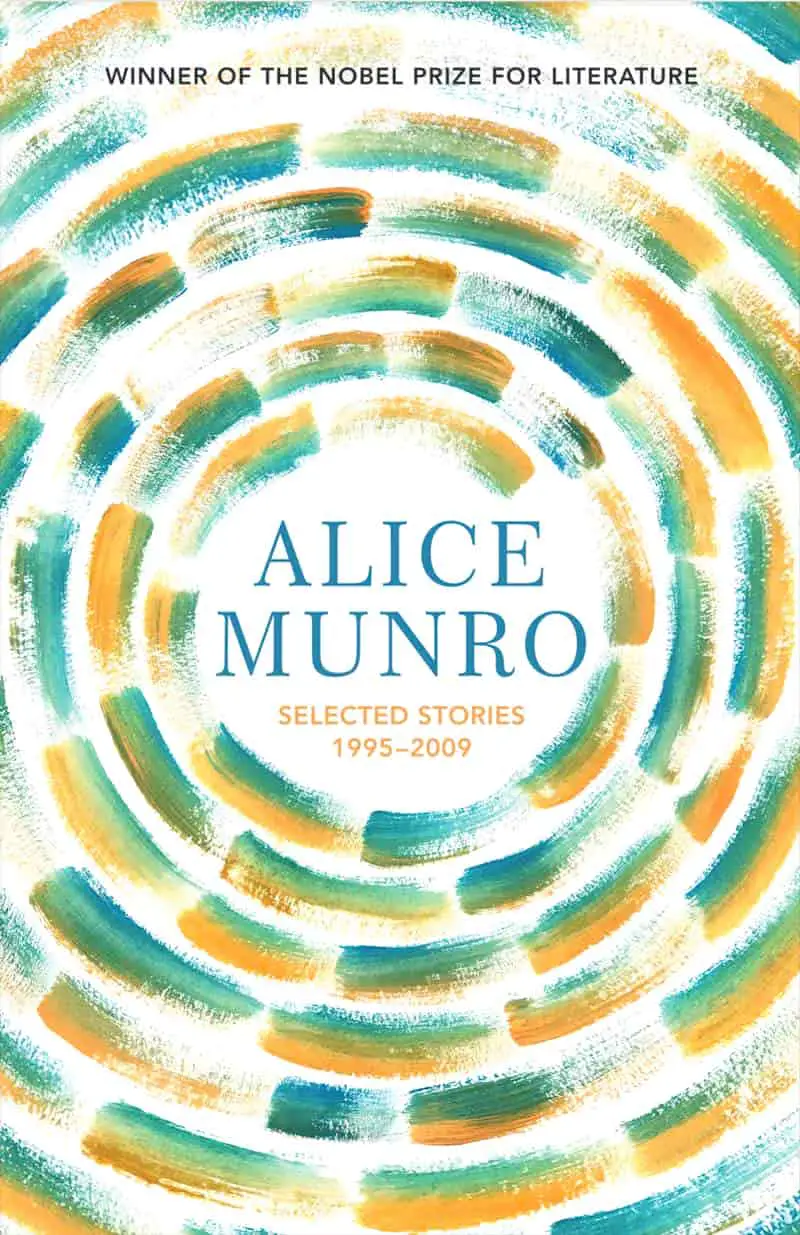
Note that Penguin have currently (as of April 2023) messed up their website’s ‘Look Inside’ feature so that both volumes show the contents of volume two, which contains the following fifteen short stories:
THE LOVE OF A GOOD WOMAN (1998)
HATESHIP, FRIENDSHIP, COURTSHIP, LOVESHIP, MARRIAGE (2001)
- “Hateship, Friendship, Courtship, Loveship, Marriage“
- “Family Furnishings“
- “The Bear Came Over The Mountain“
RUNAWAY (2004)
- “Chance“
- “Soon“
- “Silence“
THE VIEW FROM CASTLE ROCK (2006)
- “The View from Castle Rock“
- “Lying Under the Apple Tree“
- “Hired Girl“
TOO MUCH HAPPINESS (2009)
- “Dimensions“
- “Deep-Holes“
- “Free Radicals“
SELECTED STORIES (1996)
- “Walker Brothers Cowboy” — A woman looks back at her 1930s childhood. Her family has 2 or 3 months earlier lost the family fox farm and moved to a small town on the edge of Lake Huron, where the father has started a new job as a door-to-door salesman. Meanwhile, the mother sinks into a depressive state. One day, the father takes the narrator and her younger brother on a ride, where he visits an old friend/lover. The daughter learns that her father had another sort of life once.
- “Dance of the Happy Shades” — An emotionally astute and very observant adolescent girl is required to accompany her mother to an embarrassing recital with the elderly, unfortunate-looking spinster teacher whose spinster sister is recently bedridden due to a stroke. The story is told via the slightly baffled viewpoint of the girl, who is required to recite a tune on the piano at these embarrassing annual events. The spinsters have recently moved from a small house to an even smaller one. Although adolescents are are renowned for their embarrassment, it is actually the girl’s mother who is affected by extreme cringe. For one thing, the spinster music teacher has clearly gone beyond her means in providing a lavish afternoon tea, which presently sits flyblown and wholly inedible on the table. The living area is unbearably hot. Nearby, a woman with an unpleasant odour leans in and starts gossiping quietly about their hostess. As if things can’t any worse, in traipse the children from the local special school. What are the ‘idiots’ doing here, among the upwardly aspiring middle class who diligently ensure their middle-class children are afforded every opportunity, including a musical education? Surprise surprise, one of the special girls is actually very good at the piano. Better than the ‘normal’ children, in fact, since the piano teacher never corrects anyone or tells them to do better. This girl with the white hair plays a song called “Dance of the Happy Shades” on the piano. The meaning of this song is translated but never explained. Our adolescent narrator notes that her teacher’s expression shows not an ounce of pride or surprise. She believes children to be wholly capable of their own kind of genius, and in teaching music to the appreciative children with learning difficulties, she has not been proven wrong.
- “Postcard” — A woman around the age of 30 has been seeing a man for years. They’re long-term partners. The reason they haven’t married: He’s waiting for his mother to die. His mother wouldn’t approve of him marrying the narrator, we deduce because of the wealth disparity. Unfortunately for the narrator (Helen), turns out the guy never intended to marry her anyway. He sends her a postcard from Florida telling her how he’s having such a good time. Next minute, Helen’s best friend is round to break the bad news: It’s been published in the paper, the lover is getting married to someone else after all this time. The weasel didn’t have the gumption to let Helen know. So she goes round to his house, stands outside and expresses her grief in a very vocal way.
- “Images” — A young girl is the narrator of this double character study: A second cousin who came to take care of the household while her own mother was sick, and a man with a psychotic mental illness who lived alone in the woods.
- “Something I’ve Been Meaning to Tell You” — Two elderly sister have their world shaken up when Blaikie Noble arrives back in town. Char was once in love with him, maybe. So was Et, maybe. Char was the beautiful sister; Et, not so much. Alice Munro does not offer hermeneutical closure on this mystery story which maybe involves murder, maybe a natural death. I think the feminist messages are the main point of this one.
- “The Ottawa Valley“
- “Material” — A woman looks back to her brief first marriage when she was married to a self-important writer. One rain-stormy night the husband insisted they turn off the pump which normally runs constantly to prevent the basement from flooding. In the basement lives the landlady’s daughter, a sex worker. Sure enough, the basement floods. The narrator’s marriage ends soon after that. This short story is about who we really are, versus how we present ourselves in the world. The irony of the story is that this narrator hasn’t fully taken responsibility for her role in the flooding.
- “Royal Beatings” also in the March 14, 1977 edition of The New Yorker
- “Wild Swans“
- “The Beggar Maid” also in June 27, 1977 edition of The New Yorker
- “Simon’s Luck“
- “Chaddeleys and Flemings I: The Connection“
- “Chaddeleys and Flemings II: The Stone in the Field“
- “Dulse” also in the July 21, 1980 edition of The New Yorker
- “The Turkey Season” also in the December 29, 1980 edition of The New Yorker — A shy 14-year-old girl goes to work one winter at the nearby Turkey Barn, where she is introduced to the adult world for the first time. Looking back as an older woman, she interprets this time differently.
- “Labor Day Dinner” also in the September 28, 1981 edition of The New Yorker. The story of a narcissistic man about one year into a new relationship with a new partner. Over the course of one dinner with their mutual friend, the relationship enters a new phase.
- “Moons of Jupiter” also in the May 22, 1978 edition of The New Yorker
- “The Progress of Love” also in the October 7, 1985 edition of The New Yorker
- “Lichen” also in the July 15, 1985 edition of The New Yorker
- “Miles City, Montana” also in the January 14, 1985 edition of The New Yorker
- “White Dump” also in the July 28, 1986 edition of The New Yorker
- “Fits“
- “Friend of My Youth” also in the January 22, 1990 edition of The New Yorker
- “Meneseteung” also in the January 11, 1988 edition of The New Yorker
- “Differently” also in the January 2, 1989 edition of The New Yorker
- “Carried Away” also in the October 21, 1991 edition of The New Yorker
- “The Albanian Virgin” also in the June 27, 1994 edition of The New Yorker
- “A Wilderness Station” also in the April 27, 1992 edition of The New Yorker
- “Vandals” also in the October 4, 1993 edition of The New Yorker
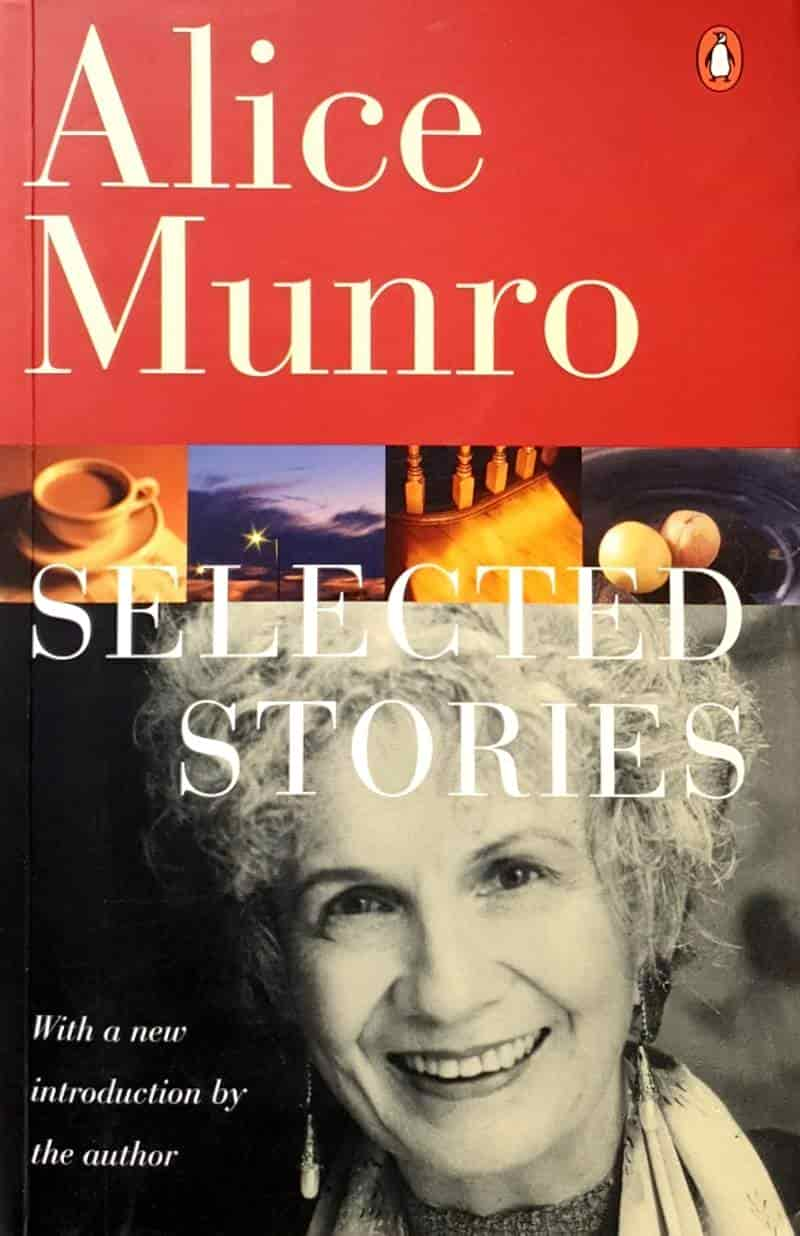
Then there’s this later collection, if you’d rather not buy both Volumes mentioned above because you’re after an Alice Munro taster:
FAMILY FURNISHINGS: SELECTED STORIES 1995-2014
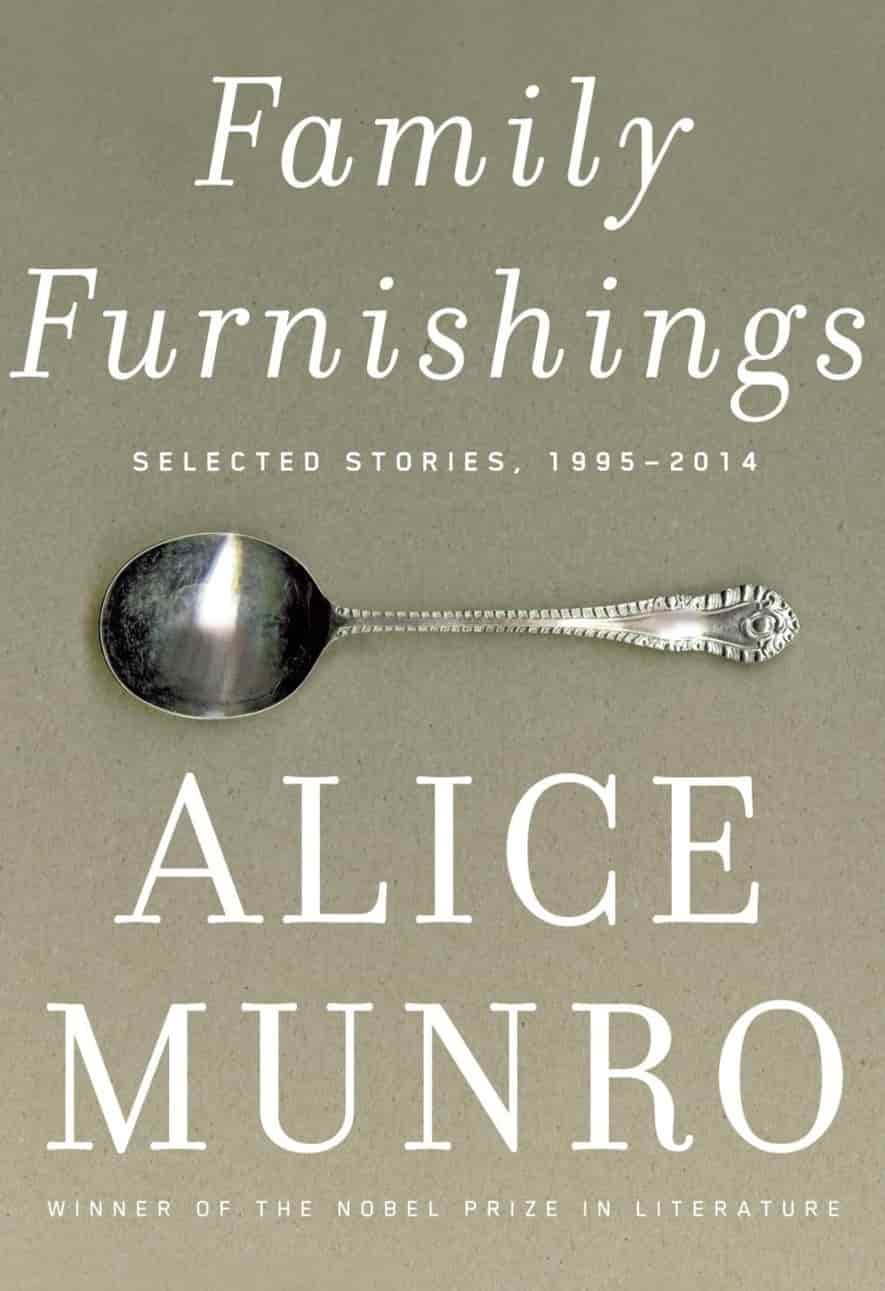
Family Furnishings brings us twenty-four of Alice Munro’s most accomplished, most powerfully affecting stories, many of them set in the territory she has so brilliantly made her own: the small towns and flatlands of southwestern Ontario. Subtly honed with her hallmark precision, grace, and compassion, these stories illuminate the quotidian yet extraordinary particularity in the lives of men and women, parents and children, friends and lovers as they discover sex, fall in love, part, quarrel, suffer defeat, set off into the unknown, or find a way to be in the world.
- “The Love of a Good Woman“
- “Jakarta“
- “The Children Stay“
- “My Mother’s Dream“
- “Hateship, Friendship, Courtship, Loveship, Marriage“
- “Family Furnishings“
- “Post and Beam“
- “The Bear Came Over the Mountain“
- “The View from Castle Rock“
- “Working for a Living“
- “Hired Girl“
- “Home“
- “Runaway“
- “Soon“
- “Passion“
- “Dimensions“
- “Wood“
- “Child’s Play“
- “Too Much Happiness“
- “To Reach Japan“
- “Amundsen“
- “The Train“
- “The Eye“
- “Dear Life“
Open Secrets (1994)
In The Lives of Girls and Women, Alice Munro created a fictional town called Jubilee. Jubilee is not a real place, but rather a fictional small town in southern rural Ontario with similarities to Wingham, where Munro grew up, and to Clinton, where Alice Munro settled with her second husband.
In Munro’s later collections, Who Do You Think You Are? and Open Secrets, this autobiographical town is recapitulated as the small towns of Hanratty and Carstairs.
- “Carried Away” also in the October 21, 1991 edition of The New Yorker
- “A Real Life” also in the February 10, 1992 edition of The New Yorker
- “The Albanian Virgin” also in the June 27, 1994 edition of The New Yorker
- “Open Secrets” also in the February 8, 1993 edition of The New Yorker
- “The Jack Randa Hotel” also in the July 19, 1993 edition of The New Yorker
- “A Wilderness Station” also in the April 27, 1992 edition of The New Yorker
- “Spaceships Have Landed” not in The New Yorker but you can find it online at The Internet Archive, because it was originally published in The Paris Review, Issue 131, Summer 1994.
- “Vandals” also in the October 4, 1993 edition of The New Yorker
The Love of a Good Woman (1998)
- “The Love Of A Good Woman” — a story revolving around a crime but not a crime story. Reminiscent of Stand By Me. Also in the December 23, 1996 edition of The New Yorker.
- “Jakarta” — not actually set in Jakarta. A story of an old woman whose husband went missing, and also about the so-called ‘free love’ of the 1960s, which afforded far more freedom to men.
- “Cortes Island” — a symbolic island standing in for the psychology of newly wed isolation. Also in the October 12, 1998 edition of The New Yorker.
- “Save The Reaper” — a re-visioning of Flannery O’Connor’s “A Good Man Is Hard To Find”. Also in the June 22, 1998 edition of The New Yorker.
- “The Children Stay” — What did divorce look and feel like when divorce was brand new? Also in the December 22, 1997 edition of The New Yorker.
- “Rich As Stink” — Focuses on an adolescent girl. Some commentators call her ‘precocious’ but I think she is a typical 11-year-old.
- “Before the Change” also in the August 24, 1998 edition of The New Yorker. What was life like for the young couples who came of age when pregnancy before marriage and abortion was completely taboo?
- “My Mother’s Dream” — Critics don’t love this one, but I do. I read this short story as a commentary on how it takes a village to raise a child, and when any given mother doesn’t measure up as parent, other women can step in. Together, caregivers can band together to create a ‘whole’, and bring up a perfectly rounded and cared-for child, but alone? No. And we shouldn’t expect mothers to be perfect.
Hateship, Friendship, Courtship, Loveship, Marriage (2001) (republished as Away From Her)
- “Hateship, Friendship, Courtship, Loveship, Marriage”
- “Floating Bridge” also in the July 31, 2000 edition of The New Yorker.
- “Family Furnishings” also in the July 23, 2001 edition of The New Yorker
- “Comfort” also in the October 8, 2001 edition of The New Yorker
- “Nettles” also in the February 21, 2000 edition of The New Yorker.
- “Post and Beam” also in the December 11, 2000 edition of The New Yorker
- “What Is Remembered“ — an elderly woman looks back on a couple of days — days which furnished her fantasy life ever after. Also in the February 19, 2001 edition of The New Yorker.
- “Queenie” — a short story about what is now called coercive control.
- “The Bear Came Over The Mountain“ — has since been adapted for film by Sarah Polly — look for Away From Her (the film’s title). Also in the December 27, 1999 edition of The New Yorker.
NO LOVE LOST (2003)
- “Bardon Bus” —
- “Carried Away” —
- “Mischief” —
- “The Love of a Good Woman” also in the December 23, 1996 edition of The New Yorker
- “Simon’s Luck” —
- “Hateship, Friendship, Courtship, Loveship, Marriage” —
- “The Bear Came Over the Mountain” also in the December 27, 1999 of The New Yorker.
- “The Albanian Virgin” also in the June 27, 1994 edition of The New Yorker
- “Meneseteung” also in the January 11, 1988 edition of The New Yorker
- “The Children Stay” also in the December 22, 1997 edition of The New Yorker
VINTAGE MUNRO (2004)
- “Moons of Jupiter” also in the May 22, 1978 edition of The New Yorker
- “The Progress of Love” also in the October 7, 1985 edition of The New Yorker
- “Differently” also in the January 2, 1989 edition of The New Yorker
- “Carried Away” also in the October 21, 1991 edition of The New Yorker
- “Hateship, Friendship, Courtship, Loveship, Marriage“
Runaway (2004)
- “Runaway” — an excellent example of comparing a human character to an animal character in a non-supernatural way. Also in the August 11, 2003 edition of The New Yorker
- “Chance” – Juliet takes a train trip which leads to an affair. Also in the June 14, 2004 edition of The New Yorker.
- “Soon” – Juliet visits her parents with her child Penelope. Also in the June 14, 2004 edition of The New Yorker.
- “Silence” — This focuses on the marriage and fairly lonely old age of the main character. Juliet hopes to hear from her estranged daughter Penelope. Also in the June 14, 2004 edition of The New Yorker.
- “Passion” – A lonely small town girl flees a passionless relationship with an outsider. Also in the March 22, 2004 edition of The New Yorker.
- “Trespasses” — An adolescent girl is the main character of this one. She moves to a new house with her parents, who have a violent relationship. They are followed by a woman who thinks this girl is her adopted daughter.
- “Tricks” — A young woman meets a man who she thinks she could marry, but one moment of misunderstanding changes the course of her fate forever.
- “Powers” — A woman wrestles with her own duties of care towards others, notably her obligations towards a school friend who has been committed permanently to a psychiatric institution.
The View from Castle Rock (2006)
- Part One / No Advantages
- “No Advantages” —
- “The View from Castle Rock” —
- “Illinois” —
- “The Wilds of Morris Township” —
- “Working for a Living” —
- Part Two / Home
- “Fathers” also in the August 5, 2002 edition of The New Yorker
- “Lying Under the Apple Tree” also in the June 17, 2002 edition of The New Yorker
- “Hired Girl” also in the April 11, 1994 edition of The New Yorker
- “The Ticket” —
- “Home” —
- “What Do You Want to Know For?” —
- Epilogue
- “Messenger” —
Too Much Happiness (2009)
- “Dimensions” —
- “Fiction” —
- “Wenlock Edge” —
- “Deep Holes” —
- “Free Radicals” —
- “Face” —
- “Some Women” —
- “Child’s Play” —
- “Wood” also in the November 24, 1980 edition of The New Yorker
- “Too Much Happiness” —
Dear Life (2012)
Most of the stories collected in Dear Life had previously been published elsewhere, notably in The New Yorker. Dear Life got a big sales boost after Munro’s Nobel Prize, selling 400,000 copies and being licensed in forty countries.
- “To reach Japan” —
- “Amundsen” —
- “Leaving Maverley” —
- “Gravel” —
- “Haven” —
- “Pride” —
- “Corrie” —
- “Train” —
- “In sight of the lake” —
- “Dolly” —
- “The eye” —
- “Night” —
- “Voices” —
- “Dear Life” —
In this episode of Teachin’ Books, I talk to a few members from the lovely Alice Munro book club I’ve been participating in this year: Sarah Roger, Taylor Graham, Tracy Ware, Sandra Hoenle, and Bob Thacker. We chat about Alice Munro’s short story collection Dear Life and, in general, about the experience of ~being in a book club~ (particularly during the pandemic) and how book clubs intersect with teaching and learning.
Teachin’ Books
If you have access to The New Yorker archives:
Until retirement, Alice Munro had a first refusal contract with The New Yorker, meaning they got to see her stories first and decide whether or not they wanted to publish them. They didn’t accept every single story Alice Munro wrote (for reasons we can only guess at — perhaps mainly length.) One short story they did not publish was “To Reach Japan”, which appeared in Narrative online magazine. “To Reach Japan” is free to read at Narrative Magazine website, though you do have to create an account. For ease of reading, they provide a PDF version of their short stories.
- June 27, 1977: “The Beggar Maid” — Patrick Blatchford and Rose meet in a Canadian college library where Rose works. Patrick falls in love with Rose, but Rose isn’t sure how she feels about Patrick. They get married eventually, have two kids and continue fighting.
- March 14, 1977: “Royal Beatings” — As a girl, Nadine’s step-mother would tell her: “Nadine, you are going to get one royal beating.” In fact it is Nadine’s father who rests as king of the Royal Beating. Years later, the step-mother is in a rest home, entirely vulnerable as an elderly woman who can no longer talk and spends her days curled up into fetal position.
- May 22, 1978: “Moons of Jupiter” — The narrator’s father is in hospital in Vancouver, so she travels from Toronto to see him. She finds him hooked up to a machine which prints out his heart activity. The father decides to undergo surgery for a damaged valve. Narrator and father chat about many things.
- July 21, 1980: “Dulse” — Lydia is a 45-year-old poet from Ontario, recently split from Alex. Other men are staying at a guest house with her, including an elderly gentleman with a penchant for Willa Cather.
- November 24, 1980: “Wood” — Roy Fowler is a successful sign-writer in Logan, Ontario. He’s kind of obsessed with it. In a plot which feels more reminiscent of Annie Proulx than Alice Munro (cf. “Man Crawling Out Of Trees“), Roy Fowler injures his ankle while out collecting wood and must crawl back to his car.
- December 29, 1980: “The Turkey Season” — At the age of 14, the narrator got a Christmas job as a turkey gutter at the Turkey Barn, where she is witness to adult conflict she does not fully understand at the time.
- March 30, 1981: “Prue” — Prue works in a plant shop in Toronto. Previously she lived with a neurologist called Gordon. Over the course of a dinner together at Gordon’s house, she finally realises what a tool he is. She takes one of his cuff-links and drops it into an old tobacco tin. Whenever she drops something in there, she forgets about it.
- September 28, 1981: “Labor Day Dinner” — The story of a narcissistic man about one year into a new relationship with a new partner. Over the course of one dinner with their mutual friend, the relationship enters a new phase.
- January 14, 1985: “Miles City, Montana” —
- July 15, 1985: “Lichen” —
- October 7, 1985: “The Progress of Love” —
- March 31, 1986: “The Moon In The Orange Street Skating Rink” —
- July 28, 1986: “White Dump” —
- November 16, 1987: “Oh, What Avails” —
- January 11, 1988: “Meneseteung” —
- March 14, 1988: “Five Points” —
- October 24, 1988: “Oranges and Apples” —
- January 2, 1989: “Differently” —
- March 20, 1989: “Goodness and Mercy” —
- September 4, 1989: “Wigtime” — A woman returns to her home town to care for her ageing, hospitalised mother. There she reunites with a friend from school. Although the two girls grew up in very similar circumstances, they differ in one major way: The friend grew up with an abusive father. Their lives have therefore gone very differently.
- January 22, 1990: “Friend Of My Youth” —
- October 21, 1991: “Carried Away” —
- February 10, 1992: “A Real Life” —
- April 27, 1992: “A Wilderness Station” —
- February 8, 1993: “Open Secrets” —
- July 19, 1993: “The Jack Randa Hotel” —
- October 4, 1993: “Vandals” —
- April 11, 1994: “Hired Girl” —
- June 27, 1994: “The Albanian Virgin” —
- December 23, 1996: “The Love Of A Good Woman” —
- December 22, 1997: “The Children Stay” —
- June 22, 1998: “Save The Reaper” —
- August 24, 1998: “Before The Change” — What was it like to come of age in 1960, when everything around pregnancy and sex was taboo? And what’s it like to see the cultural change happen across your lifetime and wonder what could have been?
- October 12, 1998: “Cortes Island” —
- December 27, 1999: “The Bear Came Over The Mountain” —
- February 21, 2000: “Nettles” —
- July 31, 2000: “Floating Bridge” —
- December 11, 2000: “Post And Beam” —
- February 19, 2001: “What Is Remembered” —
- July 23, 2001: “Family Furnishings” —
- October 8, 2001: “Comfort” —
- June 17, 2002: “Lying Under The Apple Tree” —
- August 5, 2002: “Fathers” —
- August 11, 2003: “Runaway” —
- March 22, 2004: “Passion” —
- June 14, 2004: “Silence” —
- June 14, 2004: “Soon” —
- June 14, 2004: “Chance” —
- (I only have access to The New Yorker archives up to 2004.)
Mavis Gallant
(It’s been ages since I read these. I didn’t engage with them, and I’m not sure I stand by what I wrote.)
- “Madeline’s Birthday” by Mavis Gallant
- “Thieves and Rascals” by Mavis Gallant
- “A Day Like Any Other” by Mavis Gallant — This story is interesting to me because of the year it was written. As a modern parent, I hear a lot about how ‘parents these days’ are overprotective of our children, interfering too much in their lives, stunting their emotional development. Yet this is a story of one such mother, and it dates from 1952.
- “The Picnic” by Mavis Gallant — This story is darkly comic, a ‘comedy of manners’, starring an eccentric old French aristocratic woman. The reader is afforded a close-up view into her life via an American family, the Marshalls, Major Marshall being stationed in France after the war.
- “The Cost Of Living” by Mavis Gallant — One character confronts another for some wrong-doing, and in one fell swoop the wrongdoer manages to sully the waters with ease, simply because she’s had so much practice.
- “The Burgundy Weekend” by Mavis Gallant — Lucie and Jerome Girard are due to meet an elderly woman for lunch in Burgundy.
MARGARET ATWOOD
WILDERNESS TIPS (1991)
Approximately half of these stories are set in the wilderness, the other half in downtown Toronto.
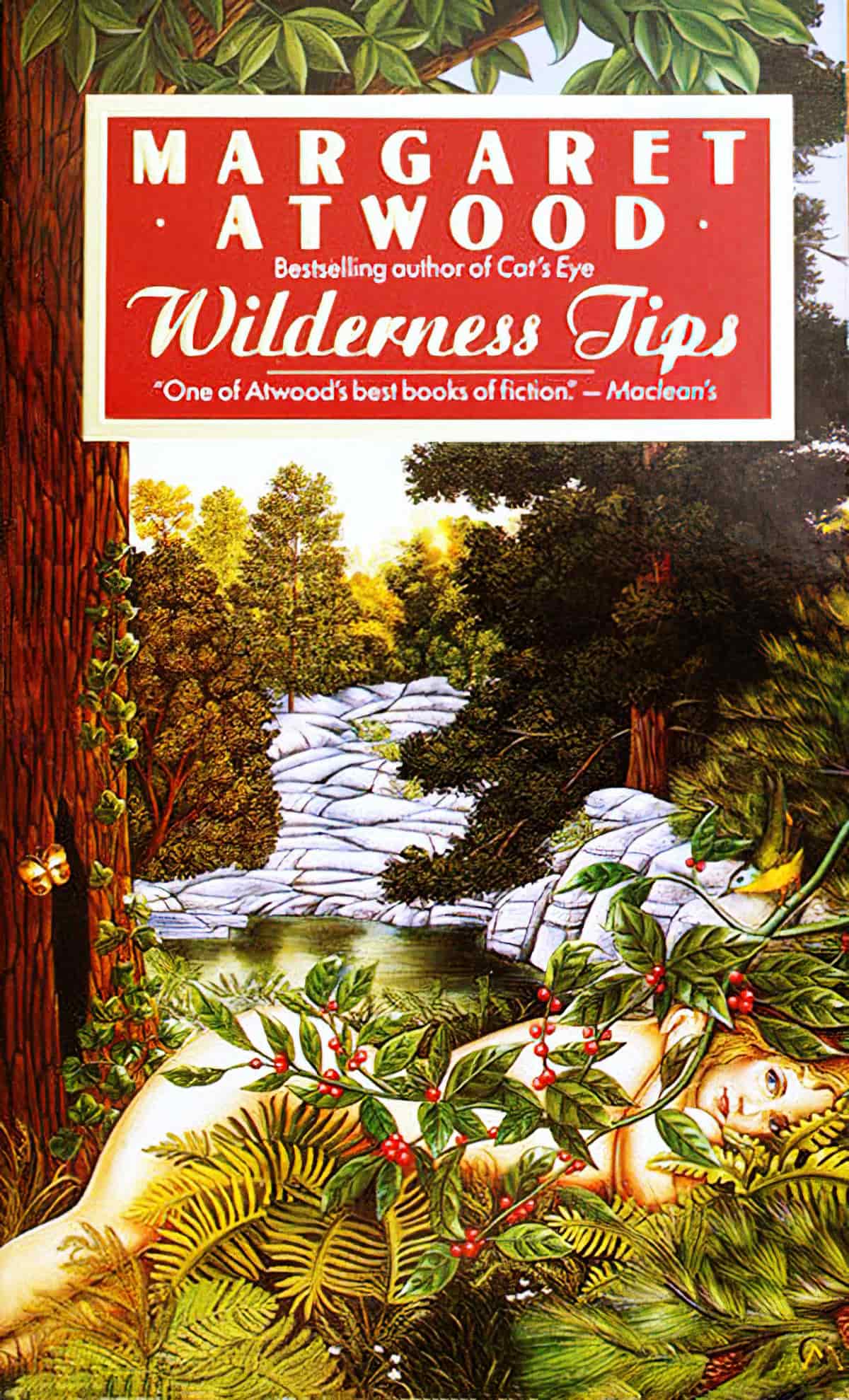
- “True Trash” — Opens at a summer camp full of privileged boys (the campers) and working-class women (the counsellors). The boys spy on the women while the women are sunbathing. In a time jump, Atwood explores what happened to these characters after a number of years.
- “Hairball” — A journalist called Kat returns from London back to Toronto as head of a new fashion magazine. The ‘hairball’ is a benign tumor she keeps on her mantelpiece as gory memento and talisman. “Hairball” is a darkly funny story which will propel the feminist reader towards rage.
- “Isis in Darkness” — Serena is based on Gwendolyn MacEwan, a contemporary of Atwood’s in the 60s poetry scene in Toronto
- “The Bog Man” — The unearthing of a long-dead body sheds new light on dying relationships.
- “Death by Landscape” — About a haunting experience from a woman’s childhood, also involving a summer camp.
- “Uncles” — Canadians know that Atwood’s pedantic journalist is a vaguely fictionalised Robert Fulford
- “The Age of Lead” — Like “The Bog Man”, this one involves the unearthing of a dead body. Themes: mortality and the inevitability of passing time. A side-story is about The Franklin Expedition.
- “Weight“
- “Wilderness Tips” — Three sisters, a brother and a husband holiday together at the old family lodge. The husband is married to the youngest sister and having a long-term affair with the middle one. Each story in this collection features a different idea from Canadian literary theory. This one features ‘garrison mentality’.
- “Hack Wednesday” — A part-time columnist experiences a string of indignities in late 1980s Toronto. The restrictions on Marcia’s life have parallels in the restrictions of her husband, which are of a different kind entirely.
MORAL DISORDER
These interconnected stories all feature a woman called Nell at various times in her life. The stories are not arranged in chronological order.
- “The Bad News” — A husband and wife with different approaches to the daily news: The husband relishes it, needs it. The wife avoids it. That’s all well and good, and the two could live comfortably, except the husband has a secondary need: He requires someone to offload on after reading the terrible news. If his wife won’t read it herself, he must tell her about it. Now the pair are retired, spending days together, so that person is, by proximity and circumstance, the wife.
- “The Art of Cooking and Serving” — An eleven-year-old girl spends summer on an island with her reluctantly pregnant and tired mother. Nell must do more than her fair share of chores. In her downtime she reads The Art of Cooking and Serving, which has a bossy, authoritative tone which Nell finds reassuring at this unsettled time of her life. She is also knitting a set of baby clothes for her new sibling. When the baby sister is born, other mothers make fun of Nell for having gone to the effort of knitting clothing. She is yet to learn that her mother is a human in her own right, and feels her mother has gotten pregnant deliberately, and is lying around uselessly on purpose.
- “The Headless Horseman” — Nell is an adolescent and this may be her last chance to dress up for Halloween, so she goes the whole hog and creates a head out of papier-mâché. She is the Headless Horseman. However, no one can work out who she’s meant to be. No one except her much younger sister, who is terrified of everything. The story flashes forward to the two sisters in middle-age, driving to visit their elderly mother. They reflect on the disembodied head and the role it played in the childhood of Nell’s sister.
- “My Last Duchess” —
- “The Other Place” —
- “Monopoly” —
- “Moral Disorder” — Margaret Atwood’s husband was in the middle of writing a novel called Moral Disorder when he died.
- “White Horse” —
- “The Entities” —
- “The Labrador Fiasco” —
- “The Boys at the Lab” —
VARIOUS
- “Purple Blooms” by Carol Shields
New Zealand Short Stories
I studied Mansfield at high school in New Zealand and again at university. Then I taught these stories at high school myself. Whenever I read the “Prelude” trilogy I feel homesick for a Wellington of the past. The worst kind of fernweh!
KATHERINE MANSFIELD
How To Write Like Katherine Mansfield
IN A GERMAN PENSION
I’m coming back to these later because Katherine Mansfield herself said she didn’t like them. I figure the main interest is seeing how she developed as a writer.
- “Germans at Meat” (The New Age, 3 March 1910) — A young English woman eats with Germans at a pension and finds them a little disgusting.
- “The Baron” (The New Age, 10 March 1910)
- “The Sister of the Baroness” (The New Age, 4 August 1910)
- “Frau Fischer” (The New Age, 18 August 1910)
- “Frau Brechenmacher Attends a Wedding” (The New Age, 21 July 1910)
- “The Modern Soul” (The New Age, 22 June 1911)
- “At “Lehmann’s”” (The New Age, 7 July 1910)
- “The Luft Bad” (The New Age, 24 March 1911) (spelt Luftbad in German)
- “A Birthday” (The New Age, 18 May 1911) (probably written about her father; but names changed to German names for the collection)
- “The Child-Who-Was-Tired” (The New Age, 24 February 1910; her first appearance)
- “The Advanced Lady“
- “The Swing of the Pendulum“
- “A Blaze” — I read this story and think of the Japanese dynamic known widely in Japan as ‘amae’.
Bliss
- “Prelude” (1918) — The Burnell family move from central Wellington out to the nearby country. This story spans the first week in their new house, focusing on each of the different members of the household, their reactions to their new environment and their deeper longings and fears.
- “Je ne parle pas français” (1917) (censored for collection)
- “Bliss” (1918) — Bertha spends the afternoon eating mushrooms at Mt Vic with her queer bff, okay so that’s a big maybe, then is shocked to learn at a Bohemian dinner party later that night that her husband is having an affair with her own woman crush.
- “The Wind Blows” (1920) — A hormonal teenage girl endures an emotionally up-and-down day. Later, that evening, she goes down to the water with her brother, sees a ship in the distance and says goodbye to her childhood.
- “Psychology” (1920) — What do you do when you’re a young unmarried woman, horny and there’s no reliable birth control to speak of? Plus, you don’t want to ruin your reputation. In “Psychology” Mansfield paints a portrait of a woman who has found one way of dealing with all that.
- “Pictures” (1917)— The story of an old theatre woman, Ada Moss, about to be thrown out of her apartment in London.
- “The Man Without a Temperament” (1920)
- “Mr Reginald Peacock’s Day” (1920) — I’ve included plenty of peacock art in this post. We forget how fashionable peacock feathers were once. The peacock is, of course, coded as vanity itself. Poor old peacocks. This short story is a character study.
- “Sun and Moon” (1920)
- “Feuille d’Album” (1917)— In high society, a young man appears to have no personality. This sets the young ladies talking. One of them makes up a story about him, turning him into a comical figure.
- “A Dill Pickle” (1917) — A single woman meets up with her old boyfriend in a London cafe. She hasn’t seen him in quite some time. Privileged white boy is doing very well for himself. She considers starting something up with him again, but the conversation reveals he’s still a total arse and privilege has only made him worse. So she walks out of the cafe, doomed to be forever alone. He gets over her quickly, which is the exact reason she can’t stand him.
- The Little Governess by Katherine Mansfield (1915) — over 100 years later came the MeToo movement. But women have always felt unsafe travelling alone at night, and for good reason.
- “Revelations” (1920)
- “The Escape” (1920) by Katherine Mansfield — a married man and woman take a cart to the train station. They occupy completely different emotional spaces. By the end of the story the husband has learned to disassociate fully from his wife by delving into his fantasy world.
SOMETHING CHILDISH
- “The Tiredness of Rosabel” (1908) — Mansfield’s earliest widely published story, about a young woman who works in a hat shop in London. These days she wouldn’t afford her own room — she’d do as I did in London, and be sleeping in a room with three other people!
- “How Pearl Button Was Kidnapped” (1912) — Playing into benevolent stereotypes of Maori at the turn of the 20th century, this is the story of a preschool white girl who gets taken out for the day by Maori women.
- “The Journey to Bruges” (1911)
- “A Truthful Adventure” (1911)
- “New Dresses” (1912) — is considered an early version of the Burnell family who we see later in the Prelude trilogy. Some have said this story feels contrived. I take a close look at why that might be.
- “The Woman at the Store” (1912) — Not a successful story, in my opinion. Others have done much better with the same plot.
- “Ole Underwood” (1913)
- “The Little Girl” (1912)
- “Millie” (1913)
- “Pension Séguin” (1913)
- “Violet” (1913)
- “Bains Turcs” (1913)
- “Something Childish But Very Natural” (1914) — A young man and woman fall in love on a train. They go on this mythic journey through the limerant stages of first love together. Mansfield writes this magnificently — she even seems to morph the landscape, playing with scale.
- “An Indiscreet Journey” (1920)
- “Spring Pictures” (1915)
- “Late at Night” (1917)
- “Two Tuppenny Ones, Please” (1917)
- “The Black Cap” (1917)
- “A Suburban Fairy Tale” (1919)
- “Carnation” (1918) — Set entirely in a classroom on a stifling hot day, a teenage girl is bored by her French teacher, so stares out the window. She has a vaguely sexual experience which bleeds into another erotic moment when another student gives her a flower.
- “See Saw” (1917) — The story structure itself functions like a see-saw, in which two young children and two elderly people enjoy a nice day in a park.
- “This Flower” (1920)
- “The Wrong House” (1919)
- “Sixpence” (1921)
- “Poison” (1920) — A besotted young man has a partial epiphany; his lover isn’t as perfect as he had imagined.
THE GARDEN PARTY AND OTHER STORIES
- “At The Bay” — The Burnell family are still living in their bungalow near the bay in Wellington, in a house which must be a little too small for all of them. Each character is aligned with another character to juxtapose and compare their various responses to very similar situations. None of the characters learns anything about themselves, but they have each developed strategies for getting on with their day-to-day lives.
- “The Garden Party” — A rich girl who lives at the top of a hill spends the entire day preparing for a fancy party. But she leaves her walled garden utopia to deliver leftovers to a bereft wife at the bottom of the hill, who has lost her husband to an accident. Rich girl has an epiphany. She’s not sure what it is, and neither are we.
- “The Daughters of the Late Colonel” — Two middle-aged spinster sisters have lived their entire lives under the control of their overbearing father. Now he is dead. It’s time to look up and see the light. More generally, this story is about the invisibility of women in middle age.
- “Mr and Mrs Dove“
- “The Young Girl“
- “Life of Ma Parker“
- “Marriage à la Mode” — William works in London while his wife Isabel is a wife and mother to their two young boys in the surrounding country. But Isabel has surrounded herself with a circle of queer poets, and William isn’t happy about it. This is a classic example of a Mansfield story that won’t make full sense unless viewed through a queer lens.
- “The Voyage“ — Young Fenella takes the Picton Boat from Wellington to live with her grandparents after the death of her mother.
- “Miss Brill” — A visit to the park leads to some sad feelings. Pays not to listen in on other people’s conversations.
- “Her First Ball” — Would you have reacted as Leila did?
- “The Singing Lesson“
- “The Stranger“
- “Bank Holiday“
- “An Ideal Family“
- “The Lady’s Maid“
THE DOVE’S NEST AND OTHER STORIES
- “The Doll’s House“(1922) is the third story about the Burnell family. This focuses on the children and their interactions in the playground. They mimic the social elitism of their parents in a story about the untouchable class.
- “Honeymoon” (1923)
- “A Cup of Tea” (1922) — A wealthy woman feels sorry for a homeless girl and takes her home for tea. This character has parallels to the white witch archetype.
- “Taking The Veil” (1923) — An 18-year-old woman engaged to be married to her childhood sweetheart takes a stroll, ends up at the church and all the while contemplates what her life would be like if she were to become a nun instead of getting married.
- “The Fly” (1922) — one of the last written before her own death, this is the tale of two old men, each dealing with his mortality in a different way.
- “The Canary” (1923)
- “A Married Man’s Story” (1923)
- “The Doves’ Nest“
- “Six Years After” (set on a steam ship near New Zealand) — A husband and wife go on a steam boat journey six years after the death of their son at war. Husband and wife are at different stages of grief. The husband wishes to bring his wife out of her grief, but she cannot fathom a way to do that without losing something of the son. She knows this is hopeless, but tortures herself by imagining what his life might be like were he still alive.
- “Daphne“
- “Father and the Girls“
- “All Serene“
- “A Bad Idea“
- “A Man and his Dog“
- “Such a Sweet Old Lady“
- “Honesty“
- “Susannah“
- “Second Violin” (set in London)
- “Mr. and Mrs. Williams“
- “Weak Heart” (set in New Zealand)
- “Widowed” (set in London)
VARIOUS
- “An Affair Of The Heart” by Frank Sargeson is about love, and how it can transcend age. I find it creepy.
- “King Bait” by Keri Hulme is a magical realist tale in the tall story tradition, set on the West Coast of New Zealand. It’s about the deadly sin of greed.
- “Encounter” by Noel Hilliard was published in the 1970s and is an early example of what was later known as ‘the invisible knapsack’, meaning white privilege.
British Short Stories
SAKI
- “Tobermory” — a humorous story about a talking cat and a gossip network.
- “The She-Wolf” — a trickster story in which a man and a woman play a trick on a man who insists he knows magic and is able to transmogrify.
- “The Lumber Room” — it’s about the gay experience. I’m convinced now. This makes “The Lumber Room” one of Saki’s deeper works.
- “The Toys Of Peace” — seems to argue that boys will crave ‘boy toys’ no matter how parents try to socialise them, an idea which has been debunked by modern researchers, who acknowledge that gender expression is biopsychosocial.
HELEN SIMPSON
- “Diary of an Interesting Year” — A comically dark apocalyptic tale, which skewers the idea that we can prepare for such things.
- “Up At A Villa” — Two pairs of teenagers gate crash a fancy villa in France, where they have been staying at cheaper digs and then run out of money. They get an unwelcome glimpse into their own futures and are quite cruel about it.
- “In-flight Entertainment” — A climate change story, eerily familiar to anyone who’s had a conversation with a climate crisis denier.
HANIF KUREISHI
All of these can be found in Collected Stories (2010).
LOVE IN A BLUE TIME
- “In A Blue Time“
- “We’re Not Jews“
- “D’accord, Baby“
- “With Your Tongue down My Throat“
- “Blue, Blue Pictures of You“
- “My Son the Fanatic“
- “The Tale of the Turd“
- “Nightlight“
- “Lately“
- “The Flies“
MIDNIGHT ALL DAY
- “Strangers When We Meet“
- “Four Blue Chairs“
- “That Was Then“
- “Girl“
- “Suckling Stones“
- “A Meeting, At Last“
- “Midnight All Day“
- “The Umbrella“
- “Morning in the Bowl of Night“
- “The Penis“
THE BODY
- “The Body“
- “Hullabaloo in the Tree“
- “Face to Face with You“
- “Goodbye, Mother“
- “Straight“
- “Remember This Moment, Remember Us“
- “The Real Father“
- “Touched“
NEW STORIES
- “The Dogs“
- “Long Ago Yesterday“
- “Weddings and Beheadings“
- “The Assault“
- “Maggie“
- “Philip“
- “The Decline of the West“
- “A Terrible Story“
ROALD DAHL
KISS, KISS (1959)
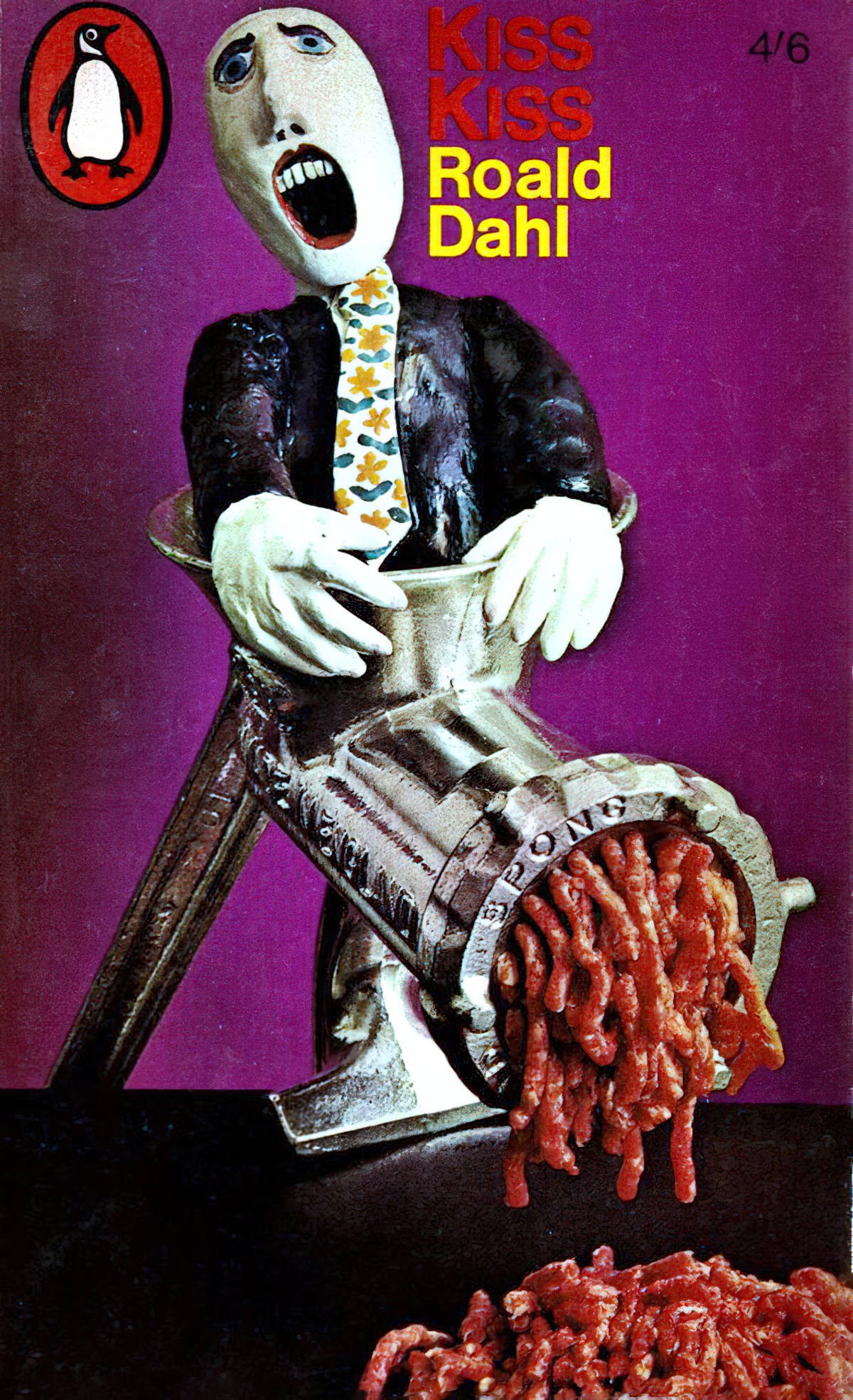
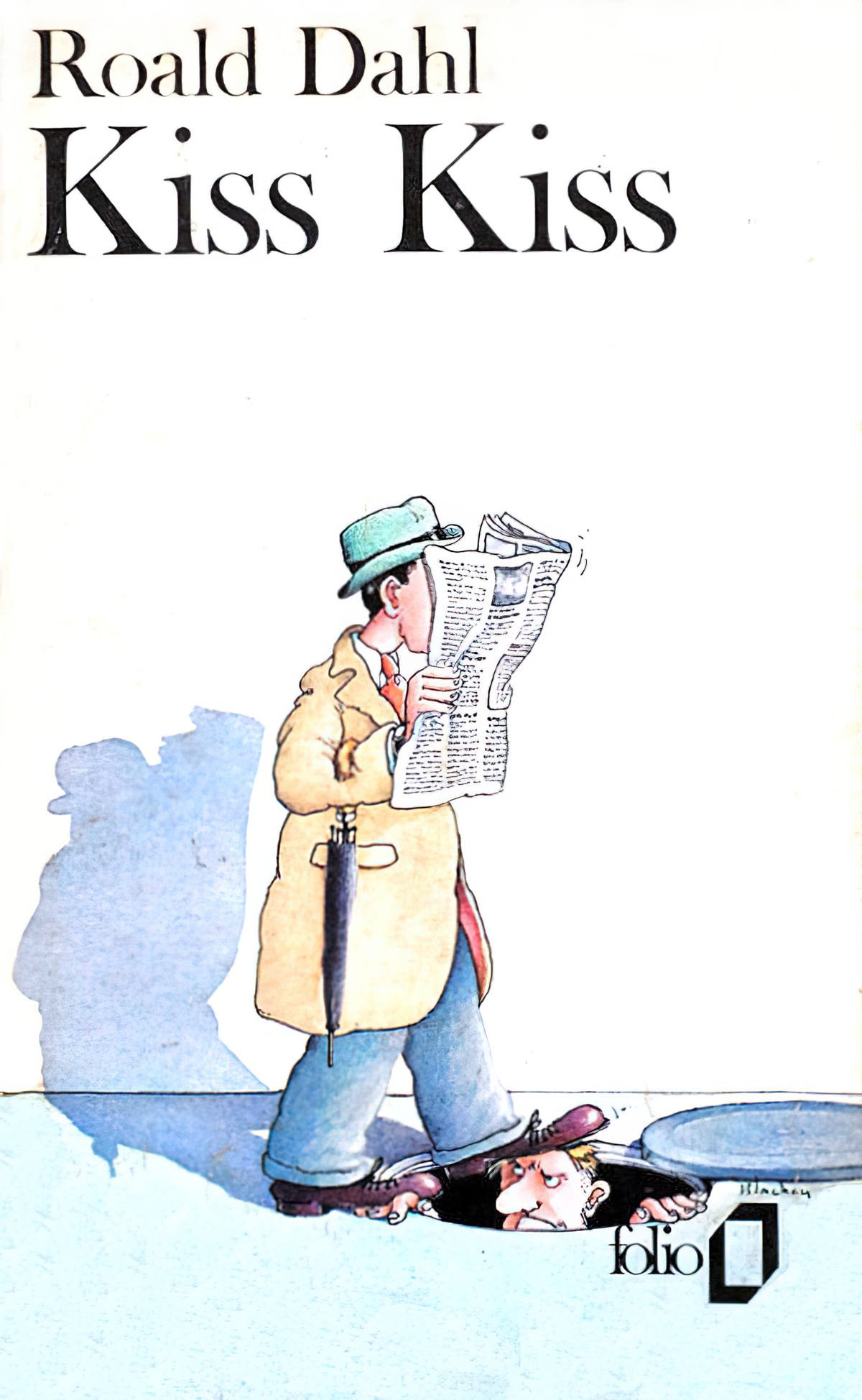
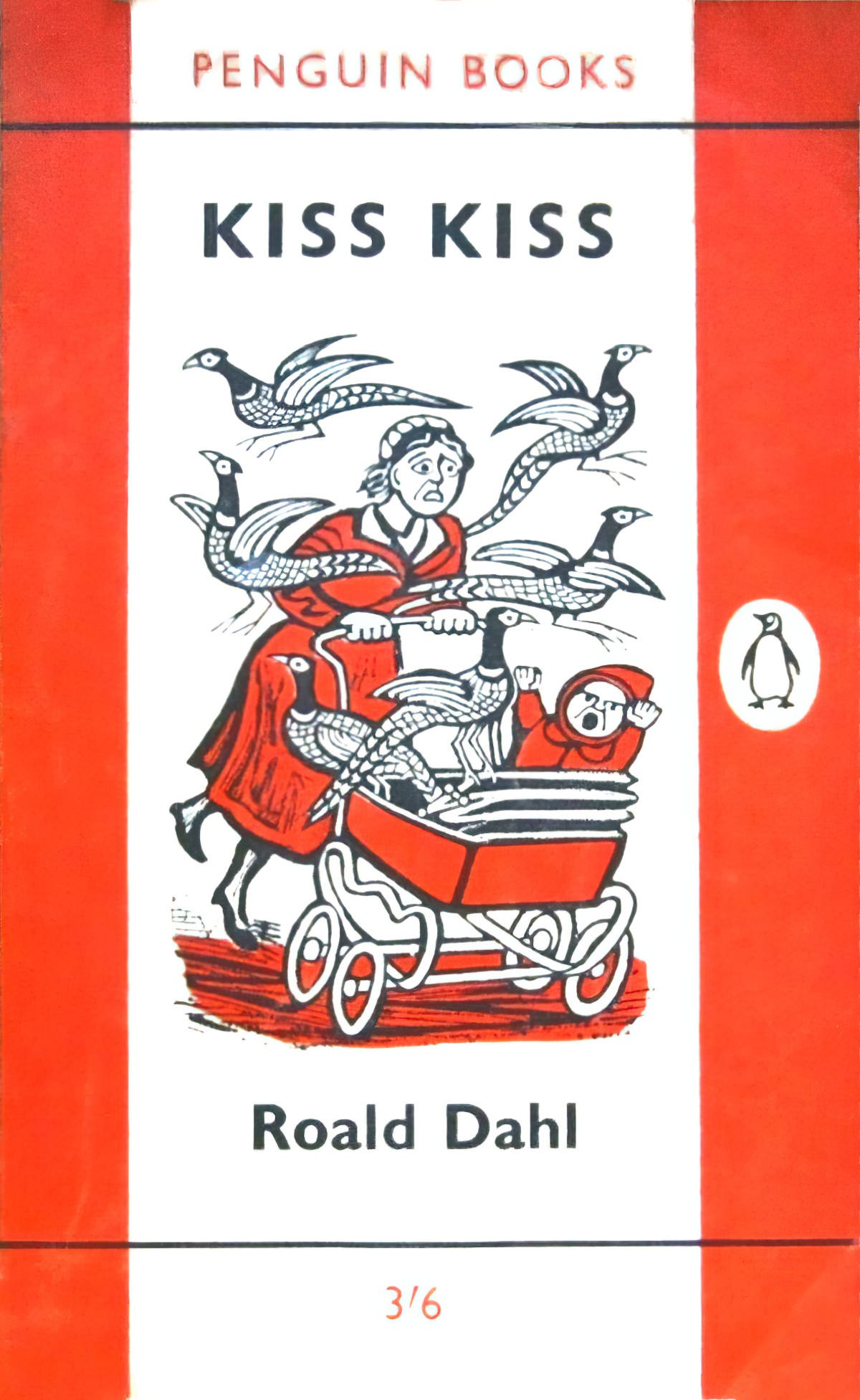
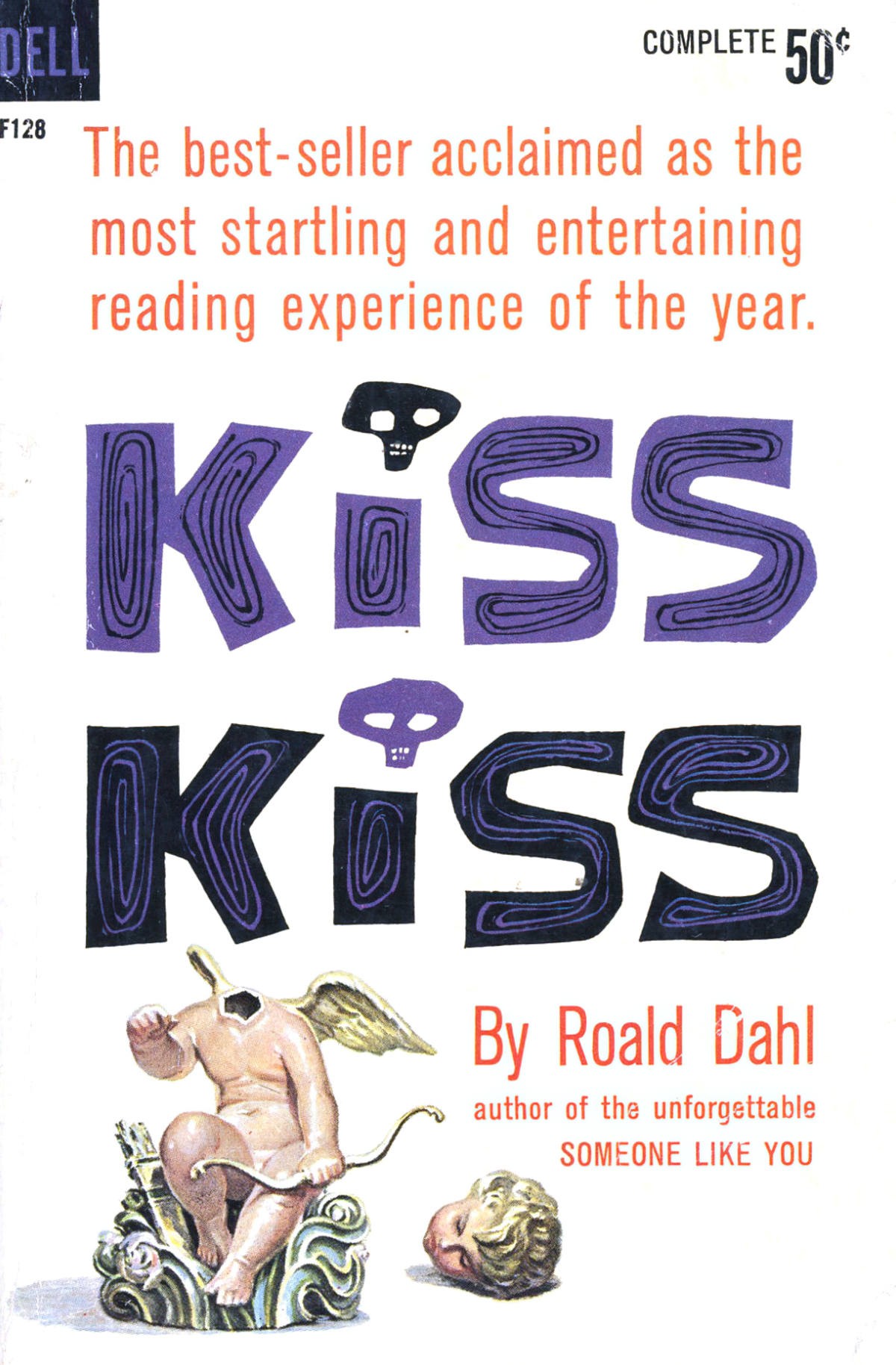
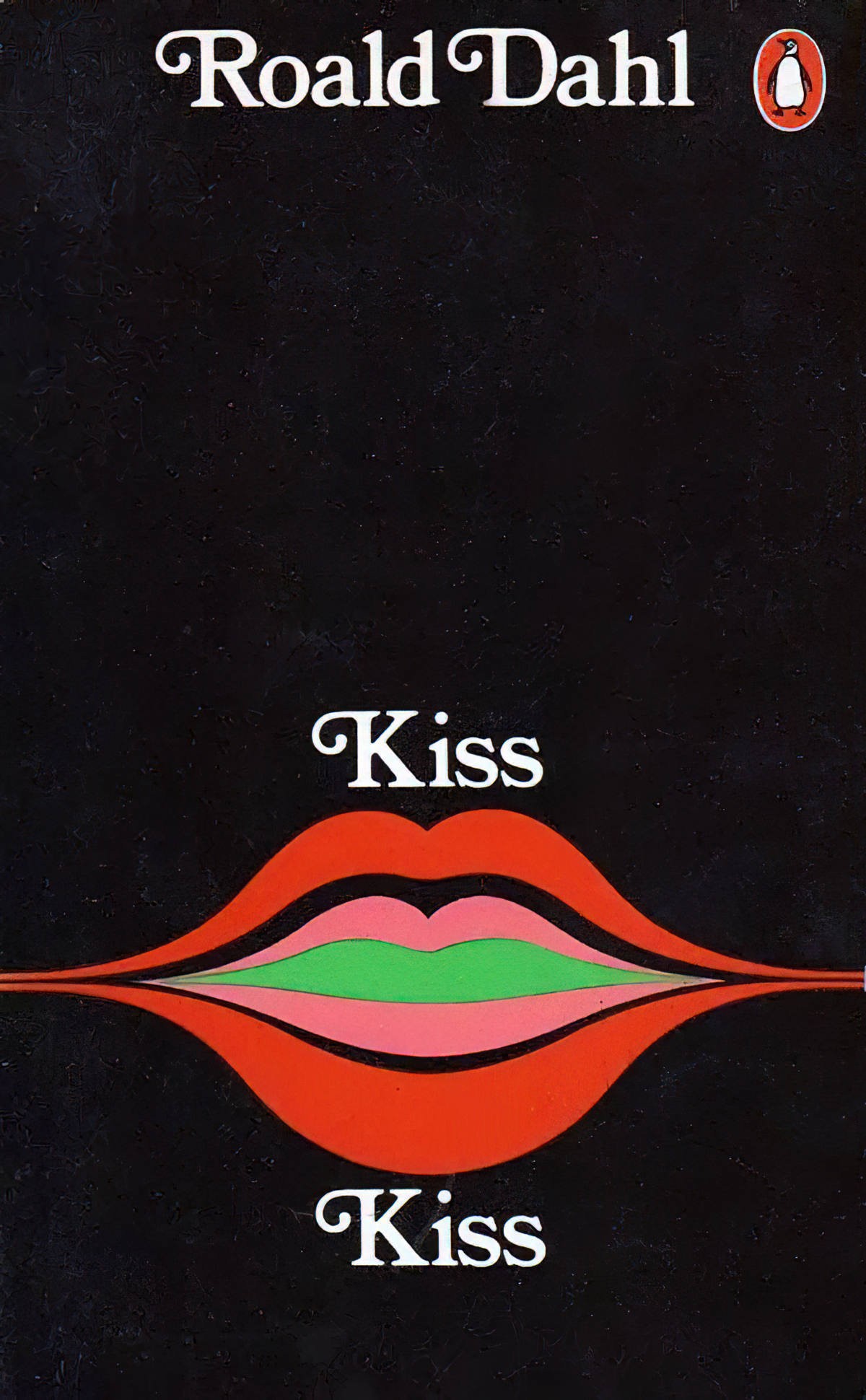
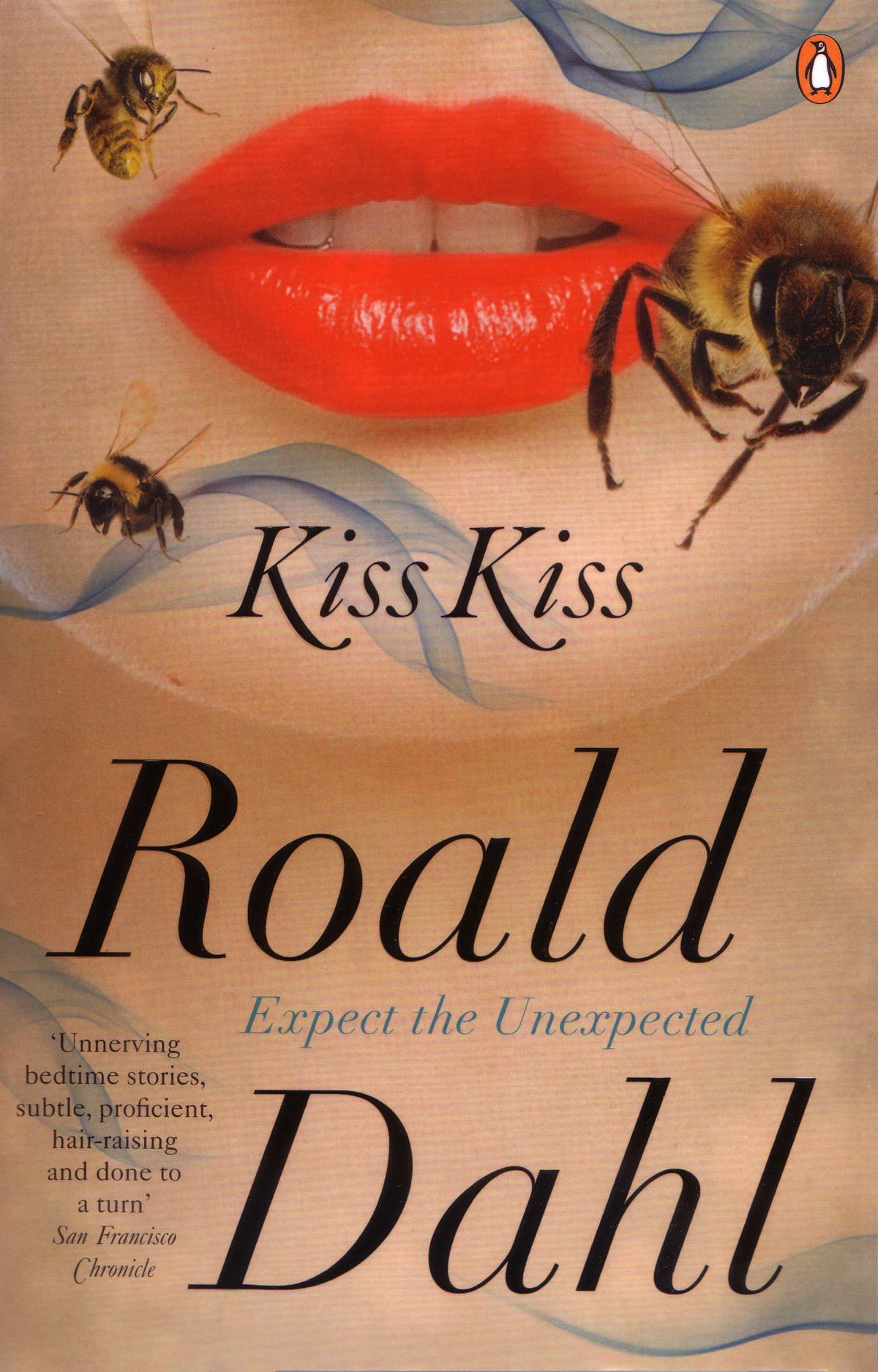
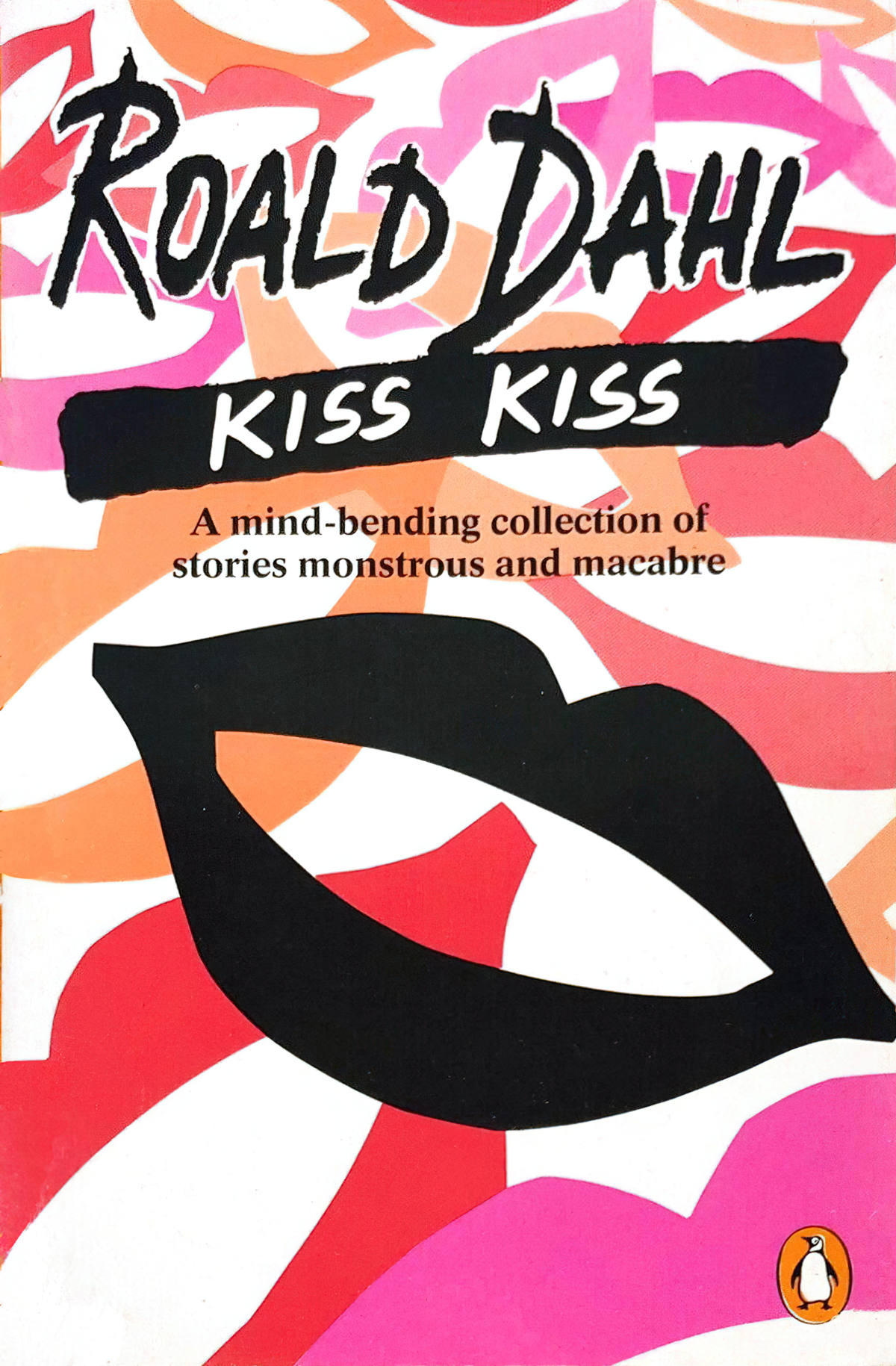
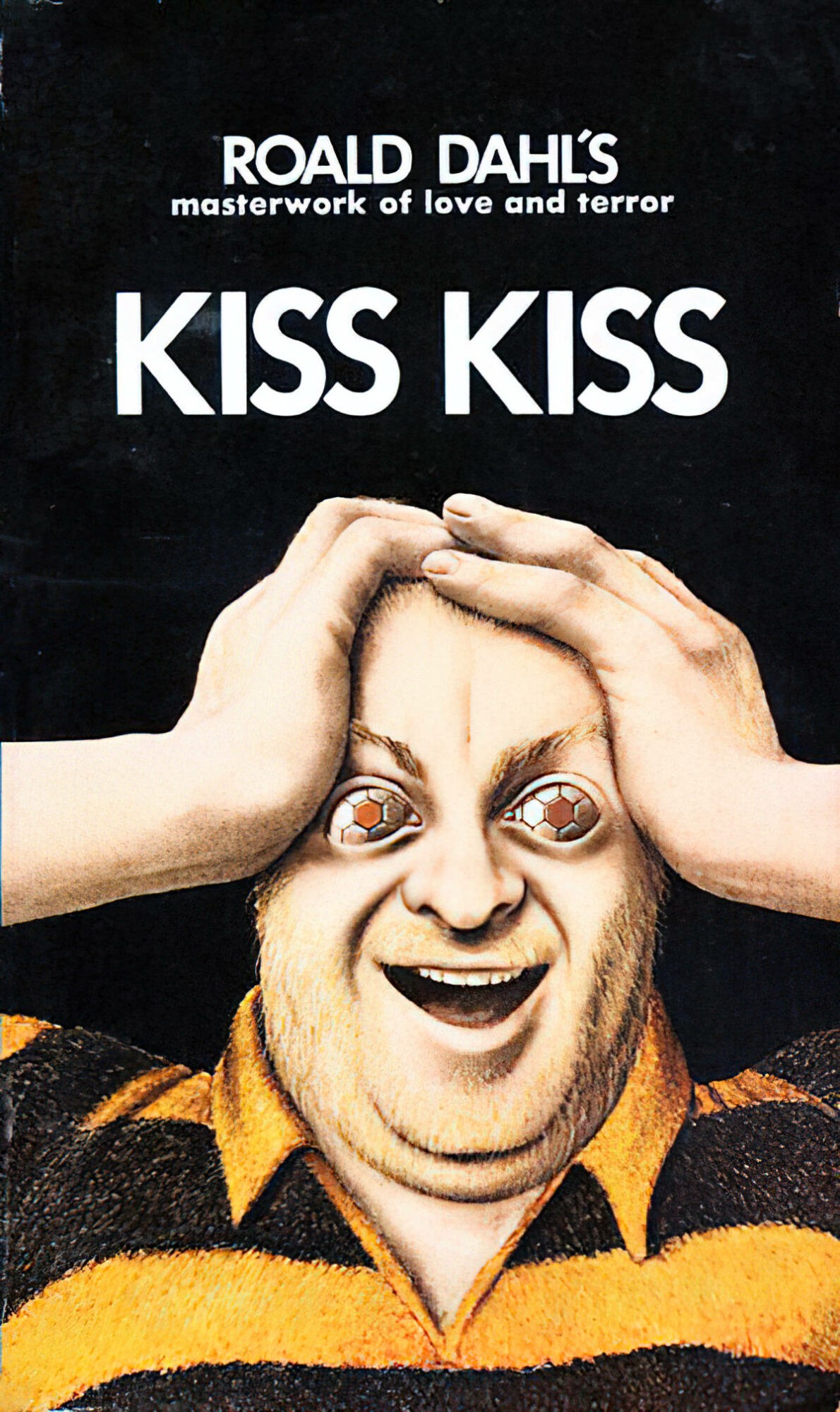
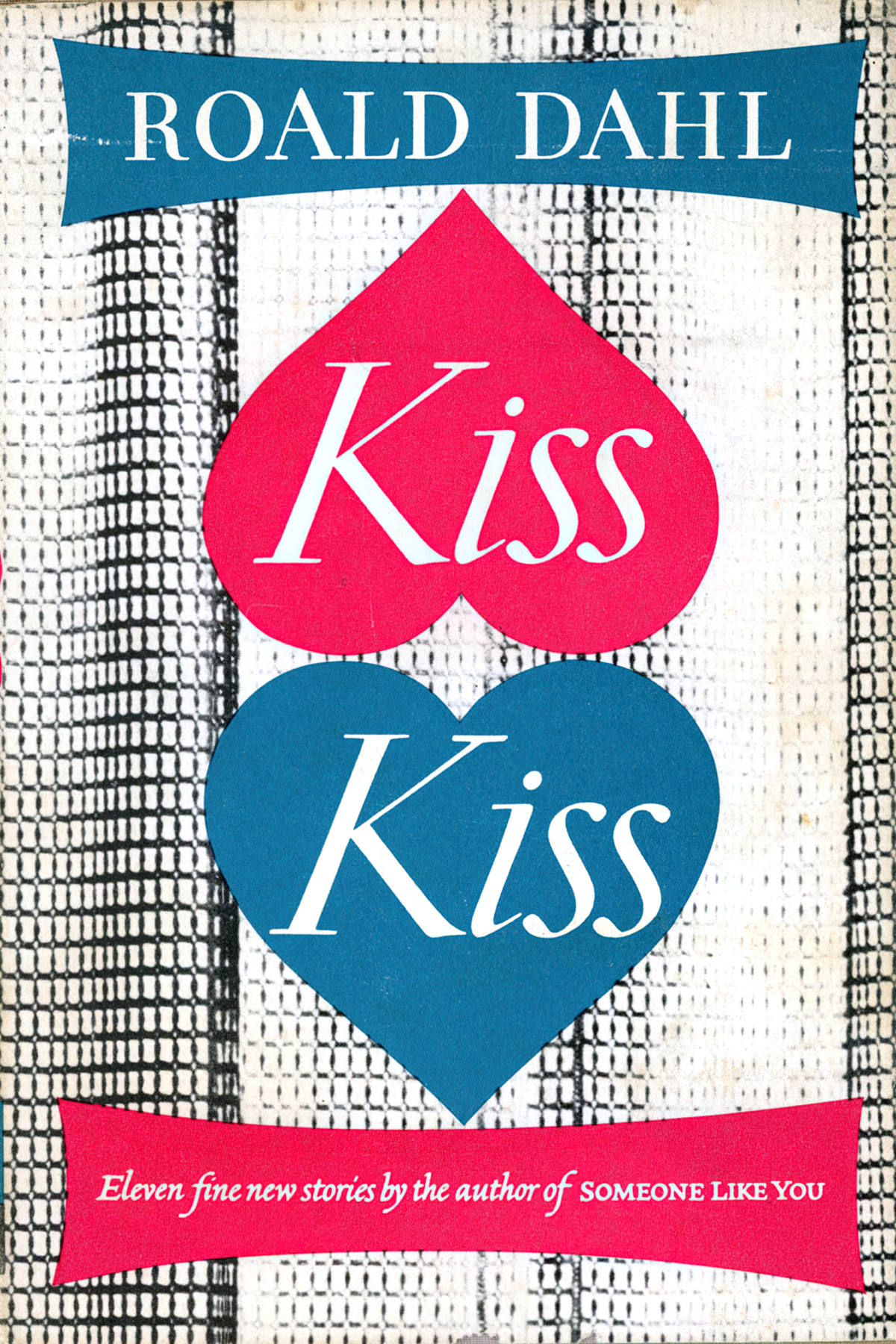
- “The Landlady” — 17-year-old Billy is new to Bath, about to start work as a man of the world. First he needs to find digs for the night. He happens upon a creepy bed-and-breakfast. Poor Billy should have trusted his gut instinct and gotten out of there before drinking the tea.
- “William and Mary” —
- “The Way up to Heaven” — A manipulative and controlling husband takes perverse pleasure in upsetting his wife. So when the wife has the opportunity to let him die, she takes the opportunity and doesn’t feel bad about it. This story won’t do you any favours if you’re nervous around elevators.
- “Parson’s Pleasure” —
- “Mrs Bixby and the Colonel’s Coat” —This story is noteworthy only for being an example of historical misogyny. Compare with “Rip Van Winkle“.
- “Royal Jelly” —
- “Georgy Porgy” —
- “Genesis and Catastrophe” —
- “Edward the Conqueror” —
- “Pig” —
- “The Champion of the World” — Later re-visioned as a children’s story, and my favourite of Dahl’s.
OVER TO YOU: TEN STORIES OF FLYERS AND FLYING (1946)
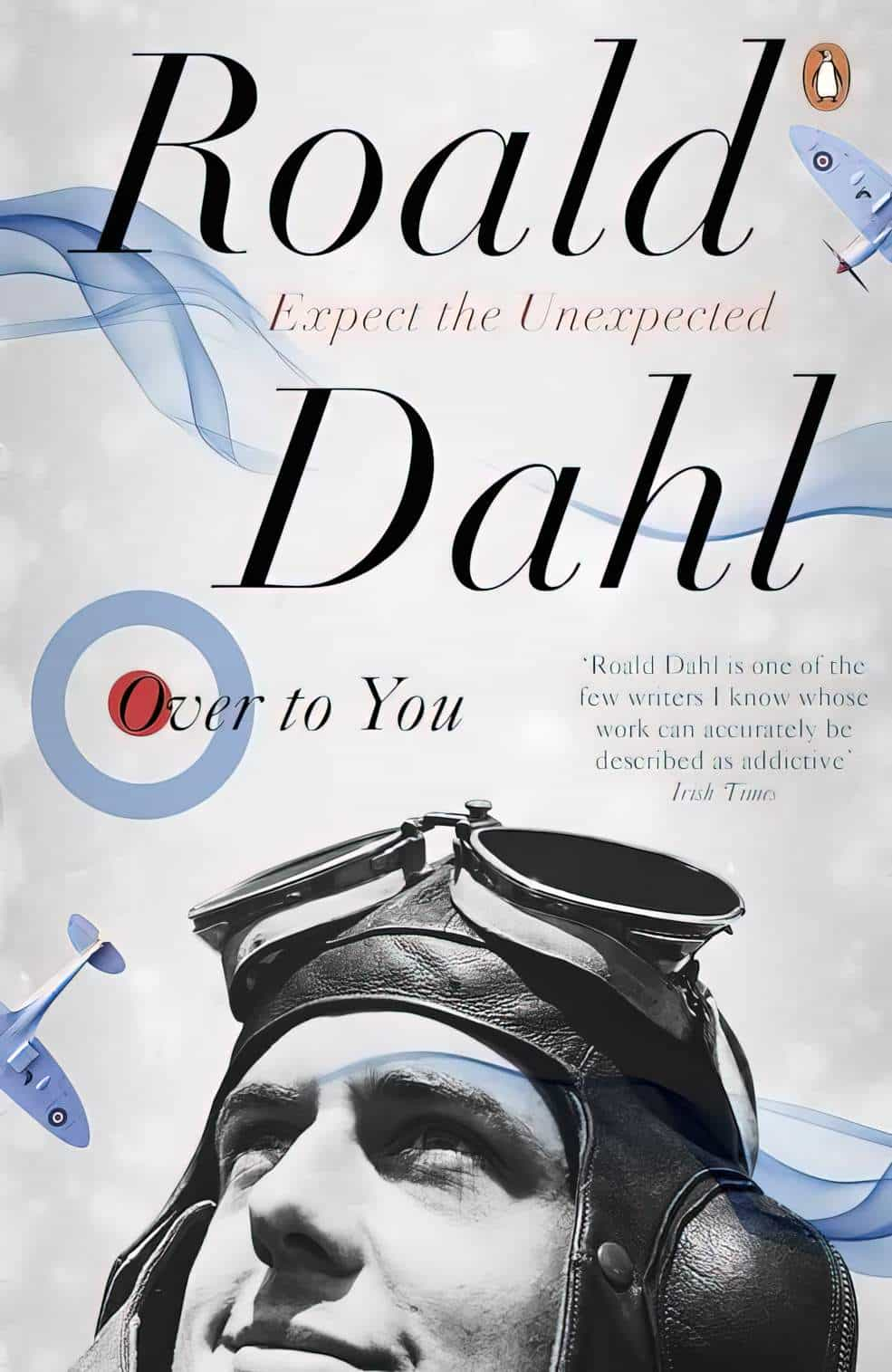
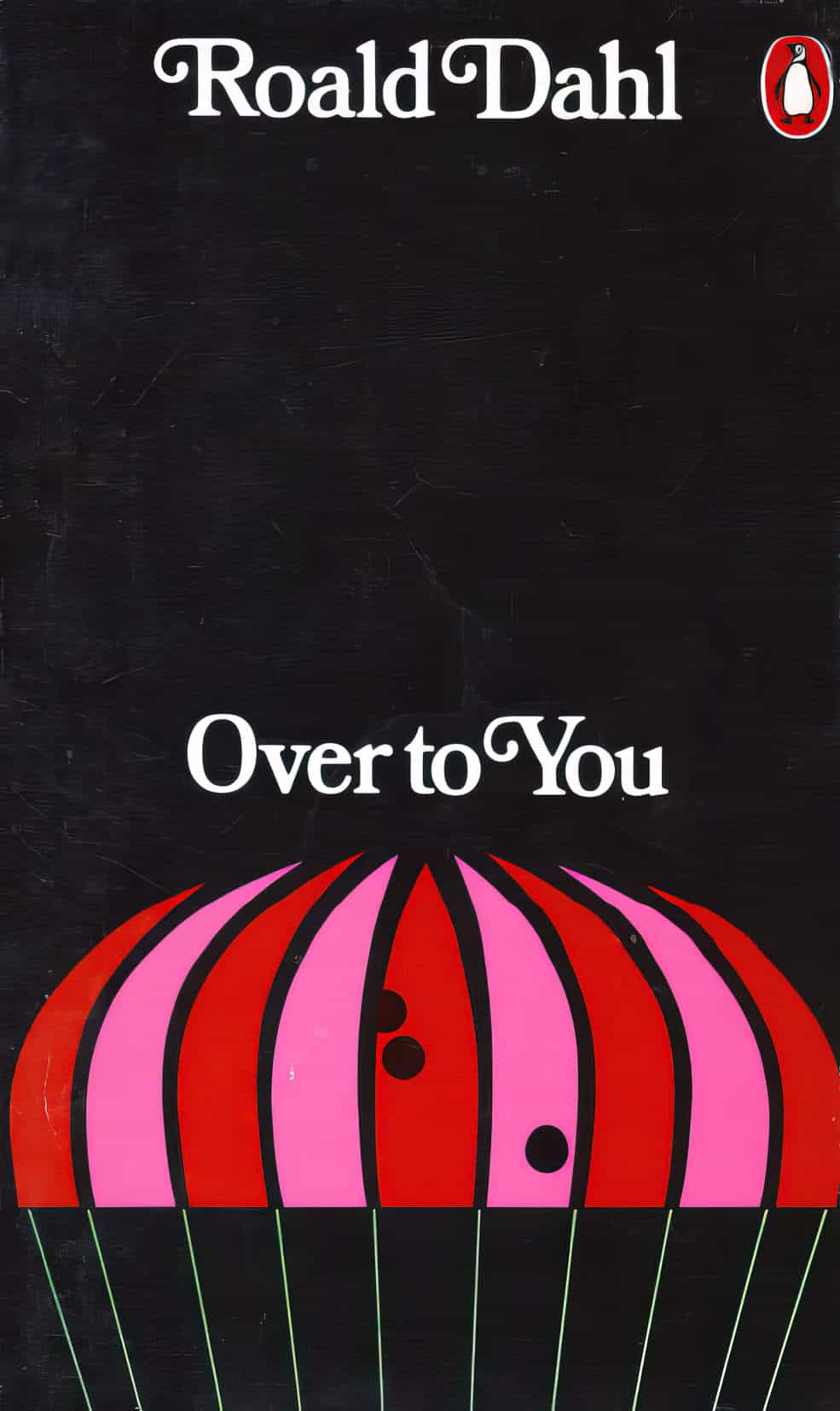
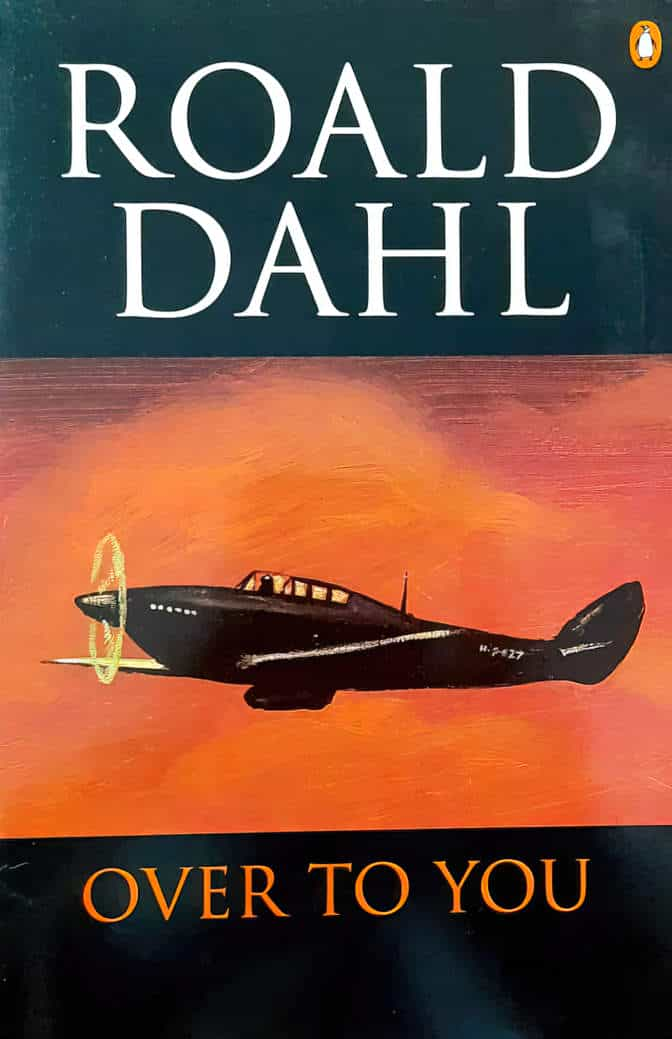
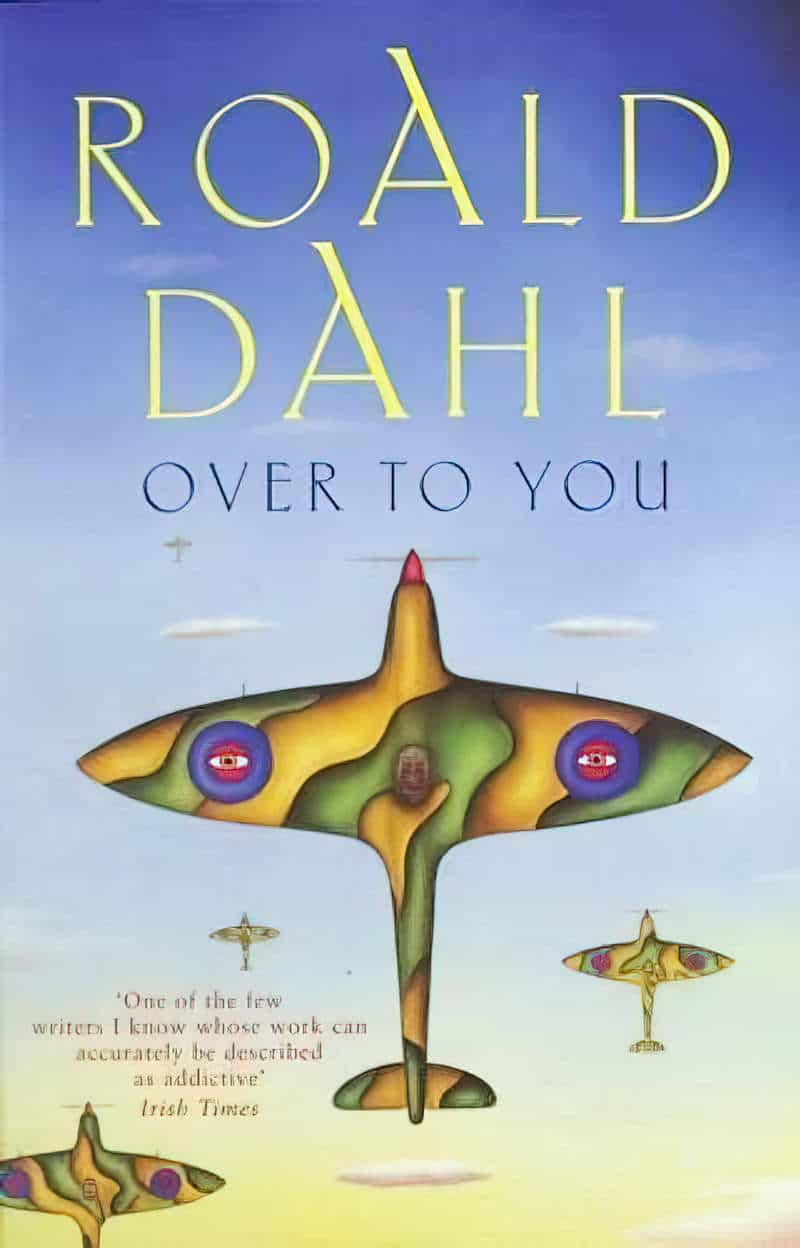
Roald Dahl was badly wounded in Libya during the war, but he went on to serve in the RAF in Greece and Syria. In these spine-tingling tales of battles in the sky – and in the psyche – he draws on his own experiences and those of his friends and colleagues to convey the bizarre reality of a pilot’s existence.
From the nervy jollity of life in the Ops room and the Mess in ‘Death of an Old Old Man’ to the nightmarish horror of being shot down in ‘A Piece of Cake’, or the infectious madness of war in ‘Someone Like You’, these stories capture with chilling clarity the experience of living with the daily possibility of extinction.
- “Death of an Old Old Man“
- “An African Story“
- “A Piece of Cake” — Dahl recounts the time his plane was (maybe, maybe not) shot down over the Libyan desert, slipping in and out of consciousness, winding up in hospital unable to see.
- “Madame Rosette“
- “Katina“
- “Yesterday was Beautiful“
- “They Shall Not Grow Old“
- “Beware of the Dog“
- “Only This“
- “Someone Like You“
SWITCH BITCH (1974)
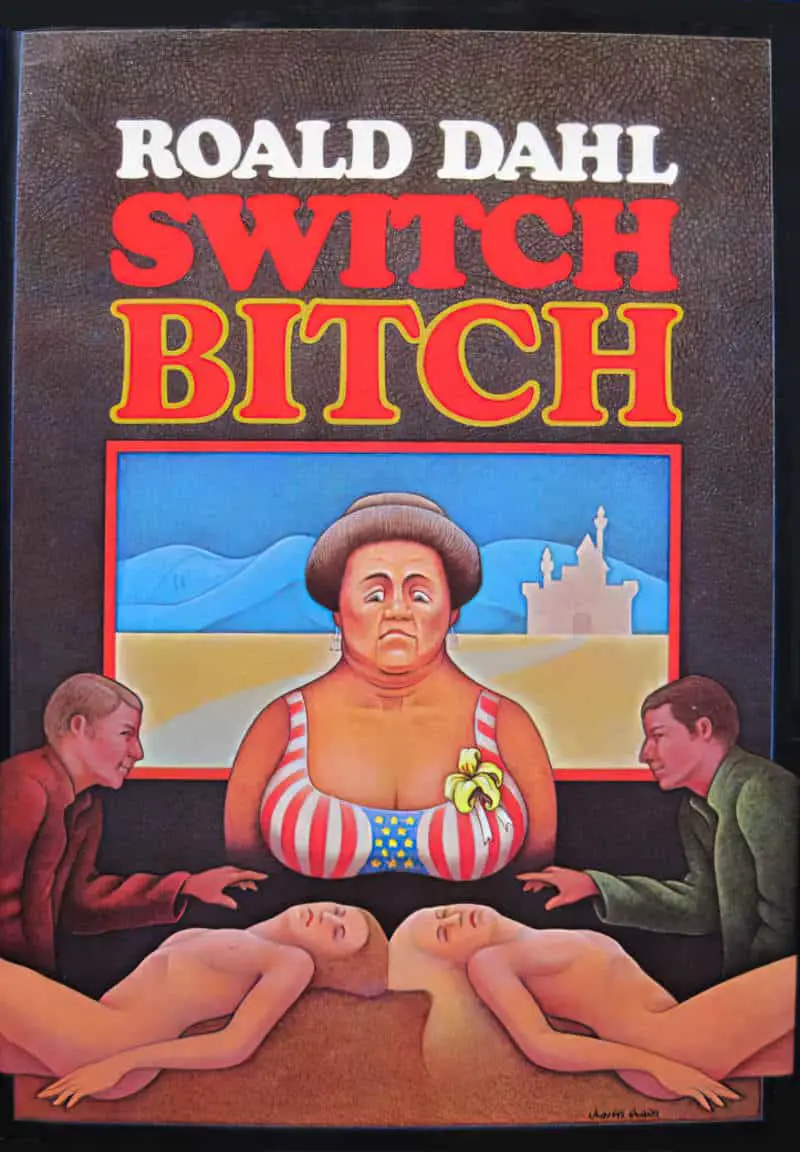
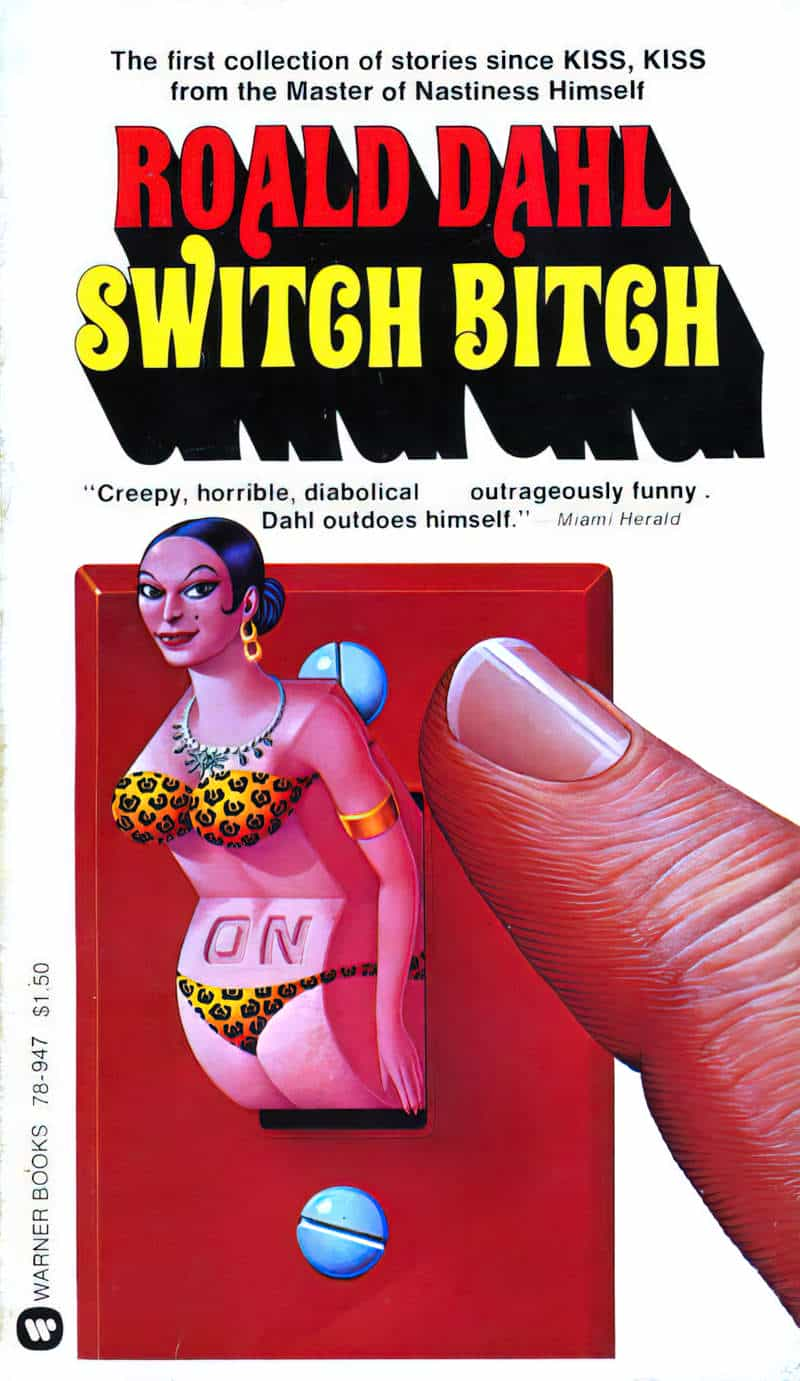
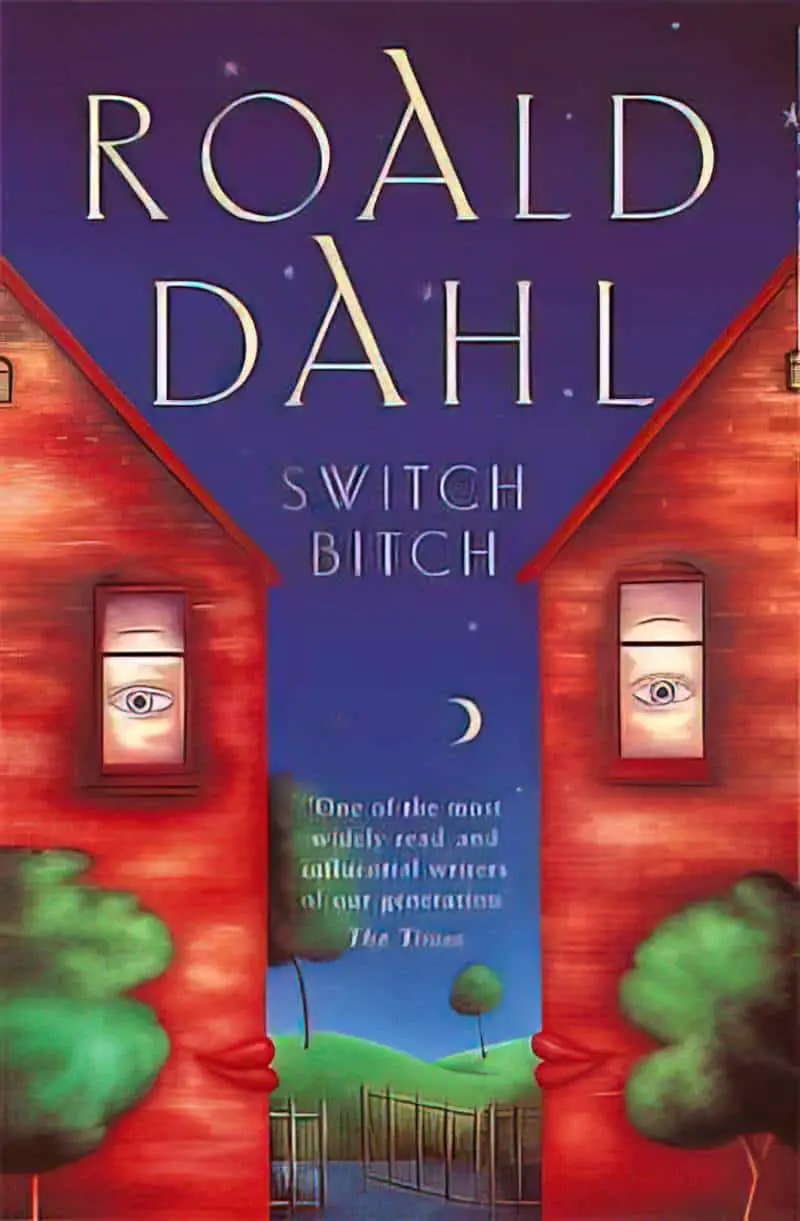
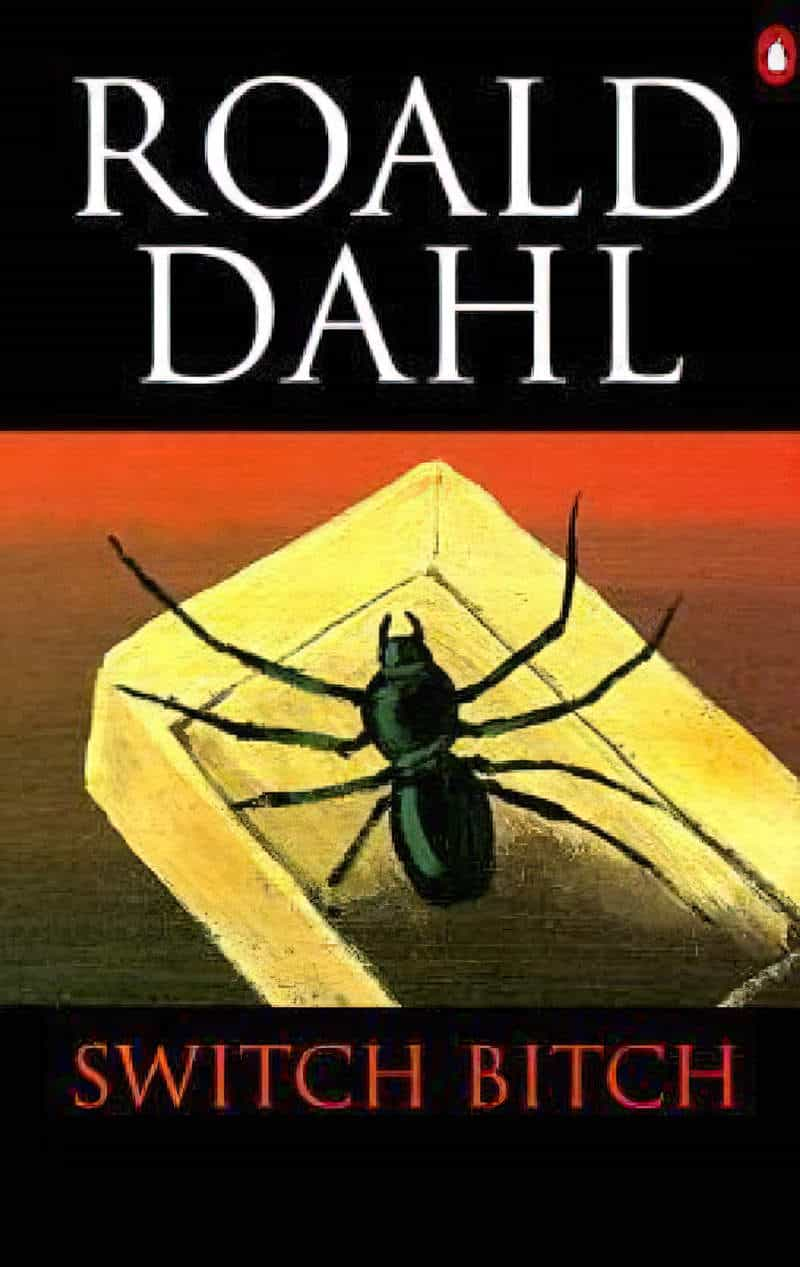

- “The Visitor“
- “The Great Switcheroo“
- “The Last Act“
- “Bitch“
SOMEONE LIKE YOU (1953)
Here, in Roald Dahl’s first collection of his world famous dark and sinister adult stories, a wife serves a dish that baffles the police; a harmless bet suddenly becomes anything but; a curious machine reveals a horrifying truth about plants; and a man lies awake waiting to be bitten by the venomous snake asleep on his stomach.
Through vendettas and desperate quests, bitter memories and sordid fantasies, Roald Dahl’s stories portray the strange and unexpected, sending a shiver down the spine.
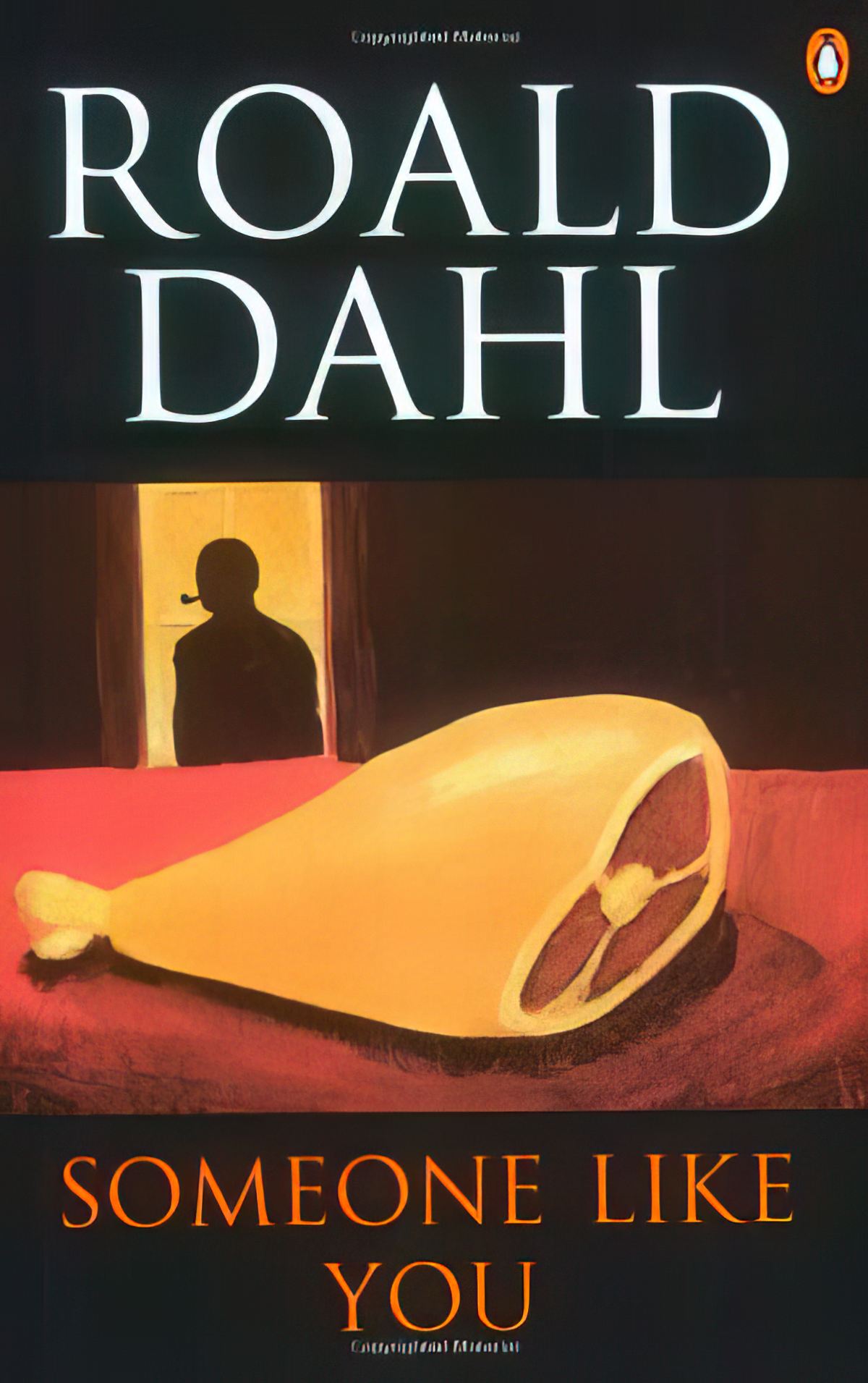
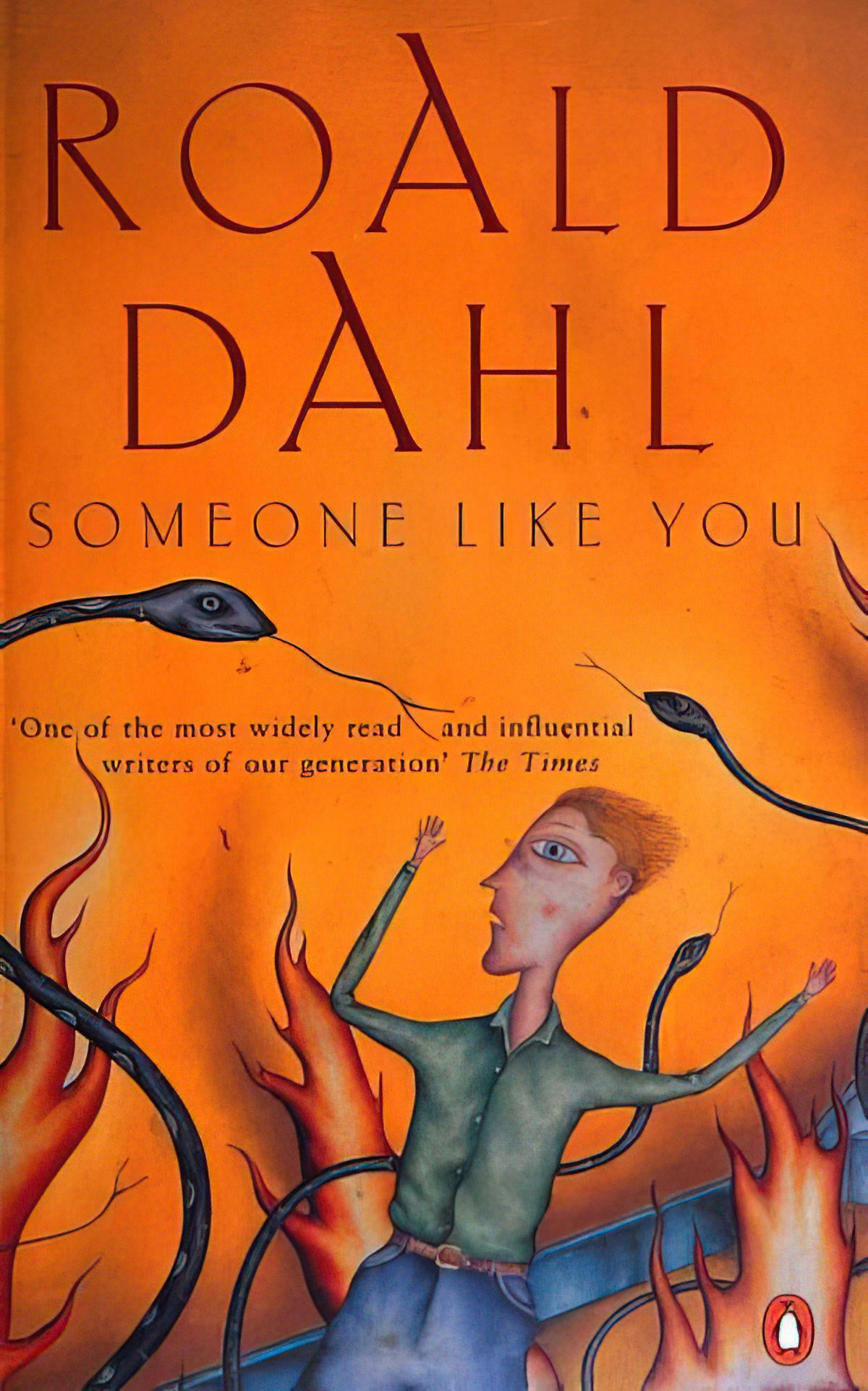
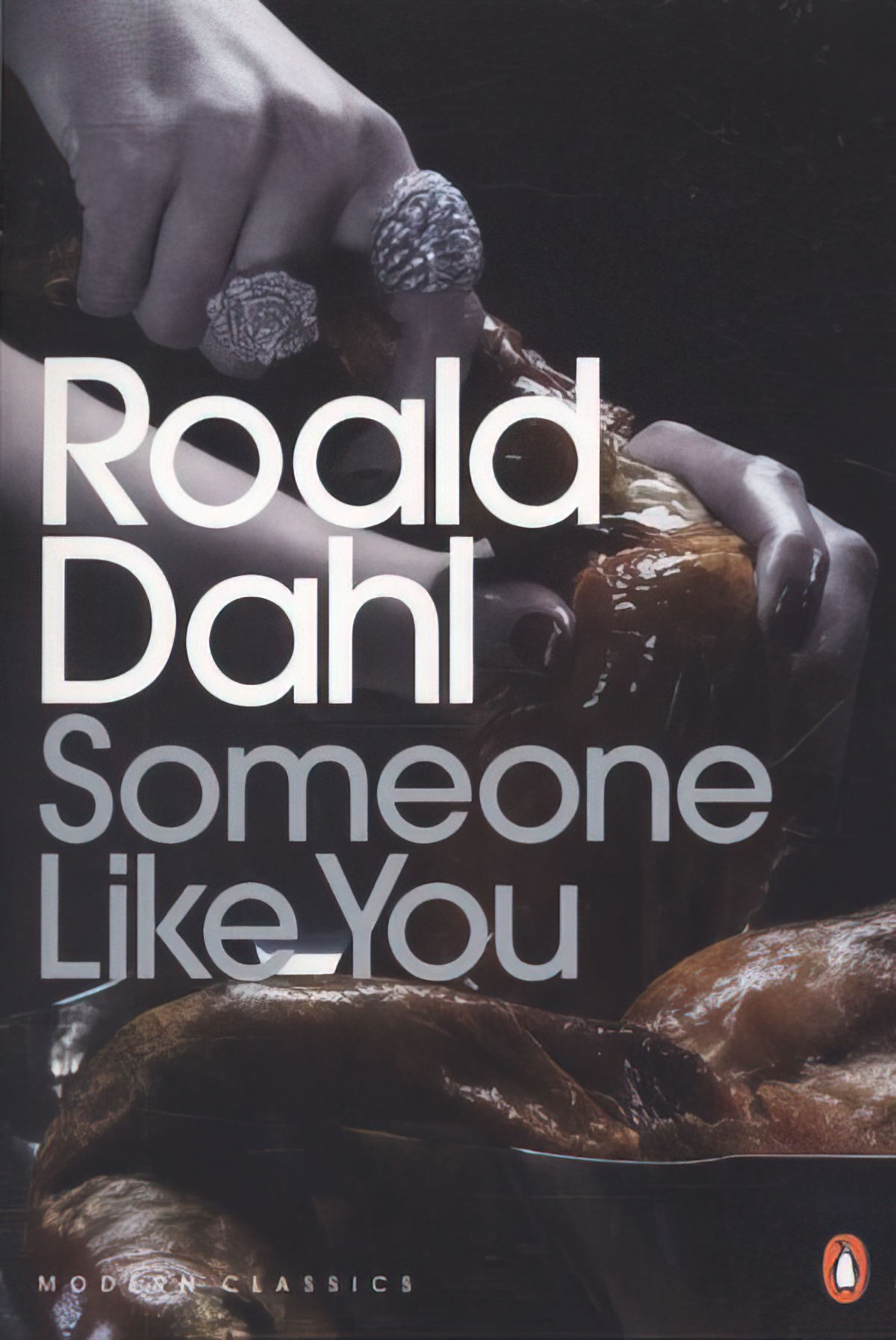
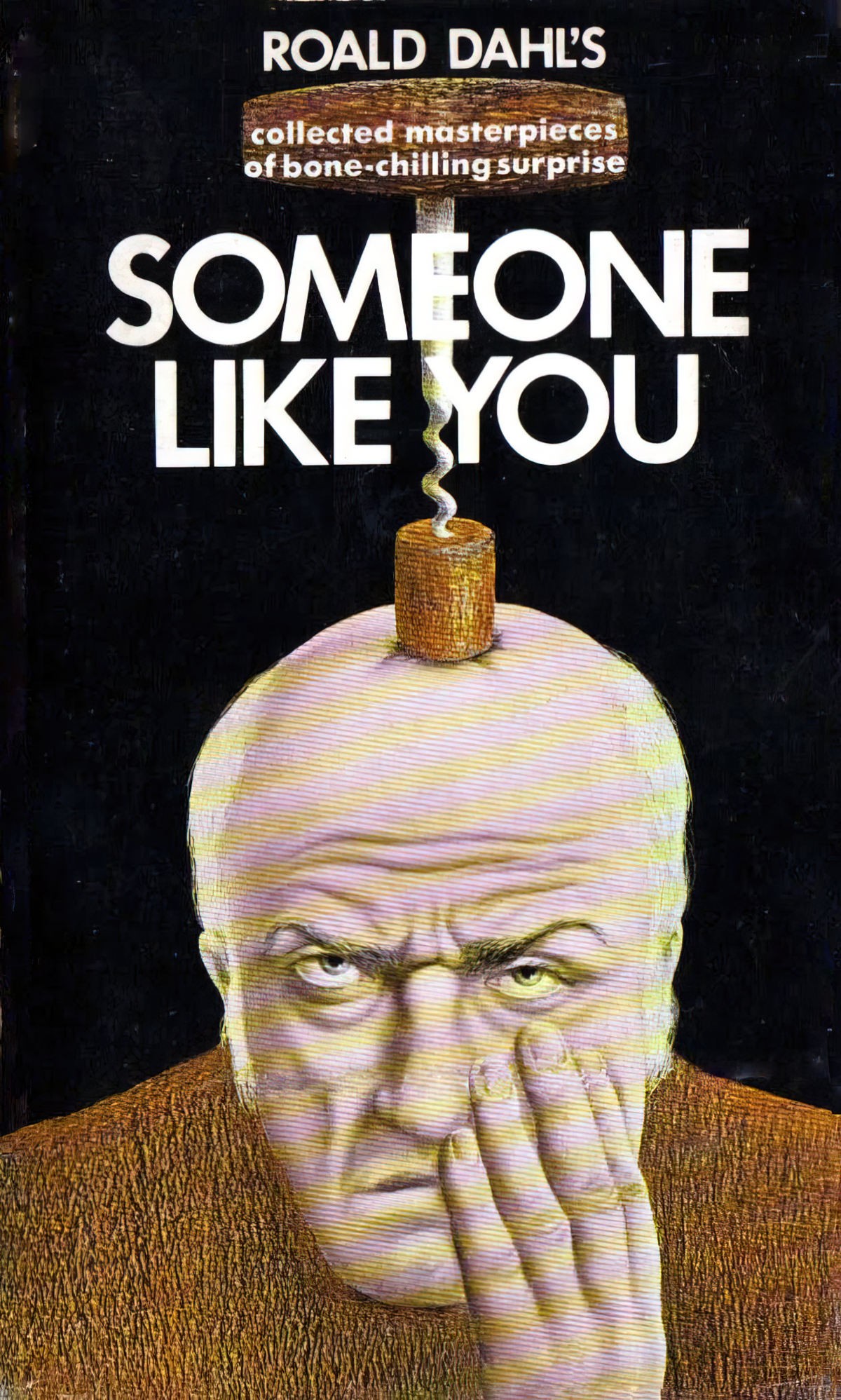
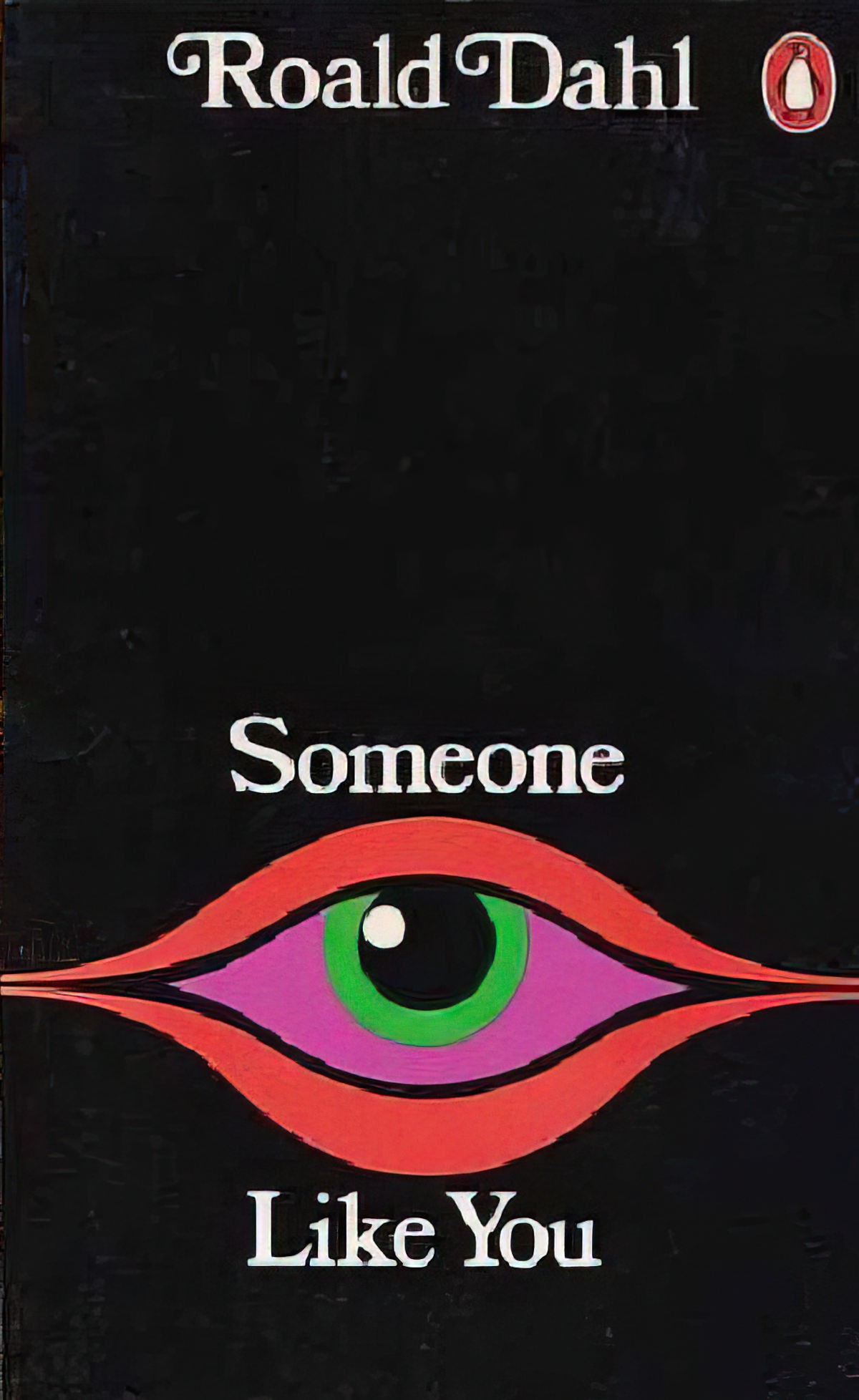
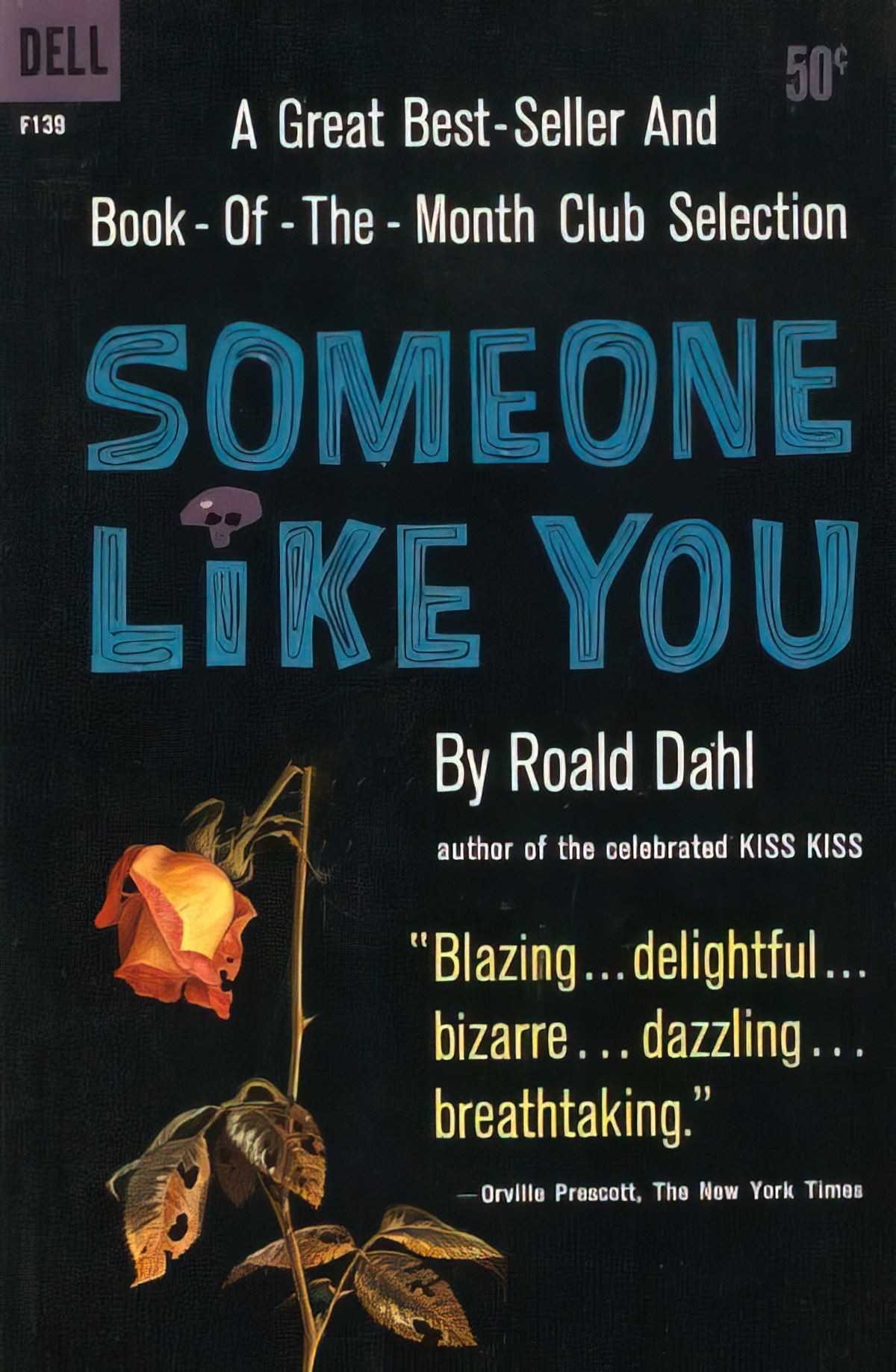
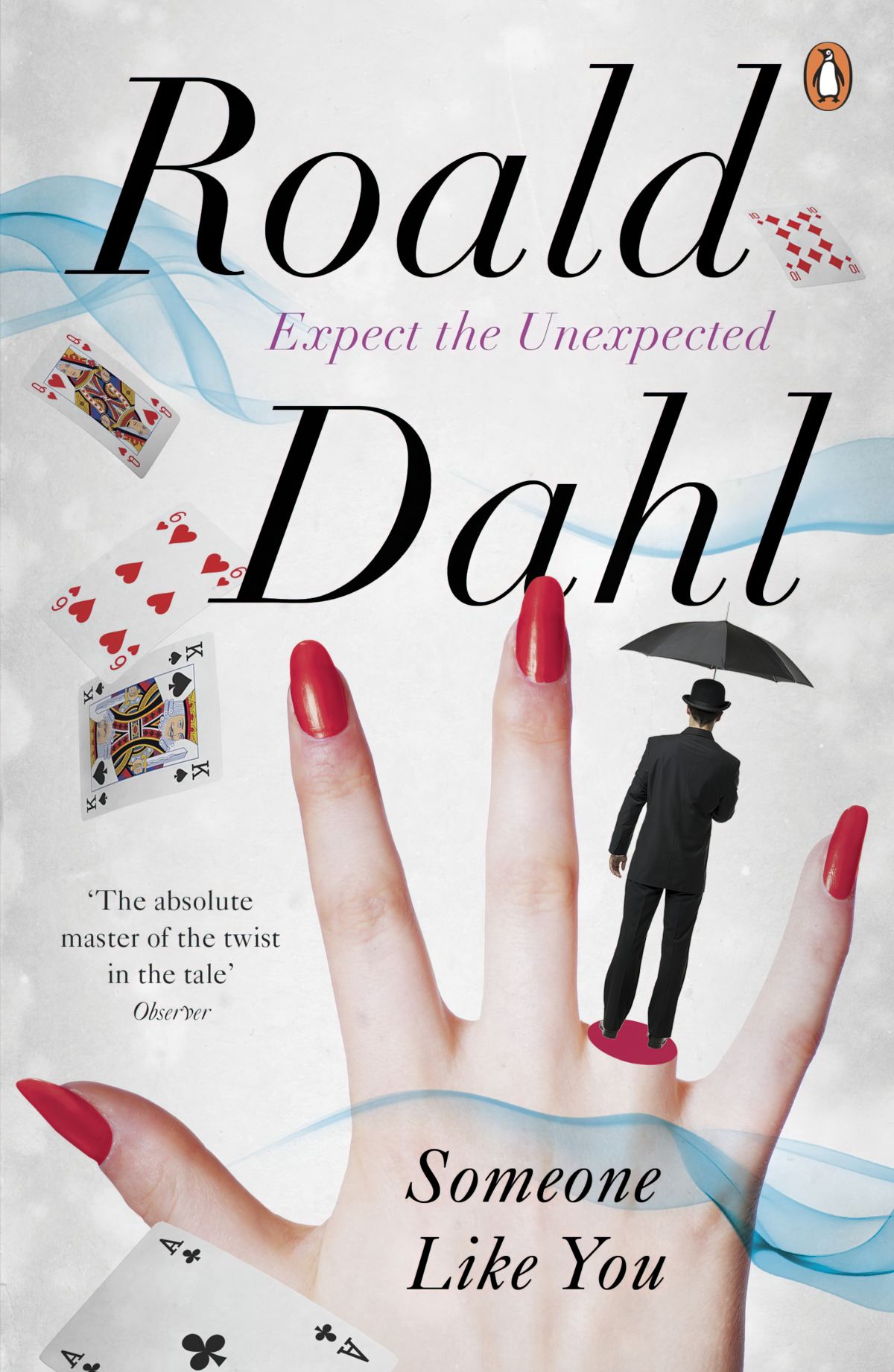
- “Taste“
- “Lamb to the Slaughter”
- “Man from the South“
- “The Soldier“
- “My Lady Love, My Dove“
- “Dip in the Pool“
- “Galloping Foxley“
- “Skin“
- “Poison“
- “The Wish“
- “Neck“
- “The Sound Machine“
- “Nurse Dimittis“
- “The Great Automatic Grammatizator“
- “The Ratcatcher“
- “Rummins“
- “Mr Hoddy“
- “Mr Feasey“
EIGHT FURTHER TALES OF THE UNEXPECTED (in the collected short stories of roald dahl, 1992)
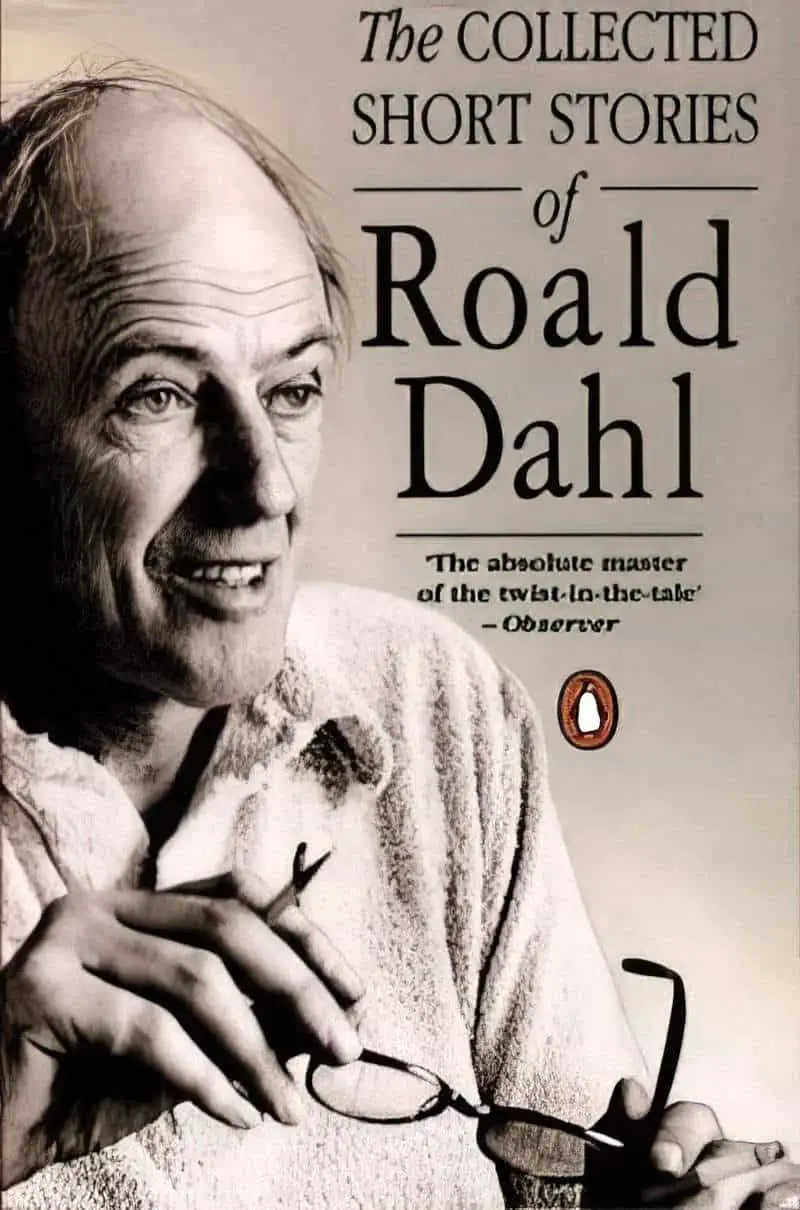
- “The Umbrella Man“
- “Mr Botibol“
- “Vengeance is Mine Inc.“
- “The Butler” — A trickster butler swindles his nouveau riche employer in this short story about English class differences in the mid-to-late 20th century.
- “Ah, Sweet Mystery of Life“
- “The Bookseller“
- “The Hitch-hiker” — A wealthy driver in a new 1974 BMW makes his way towards London to get his wife’s ring fixed. He picks up a hitch-hiker who looks part man, part rat. Where is the rat man going? Is he friend or foe? We’ll soon find out.
- “The Surgeon“
The Wonderful Story of Henry Sugar (1977)
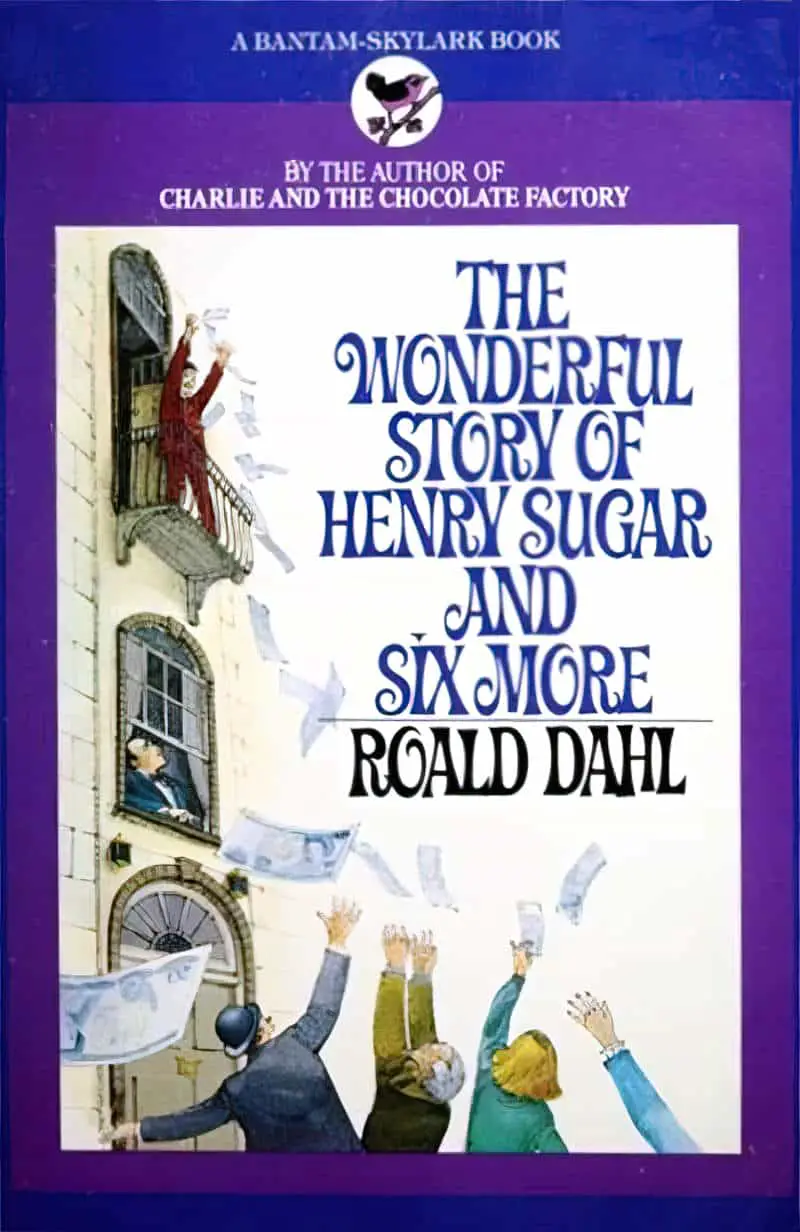
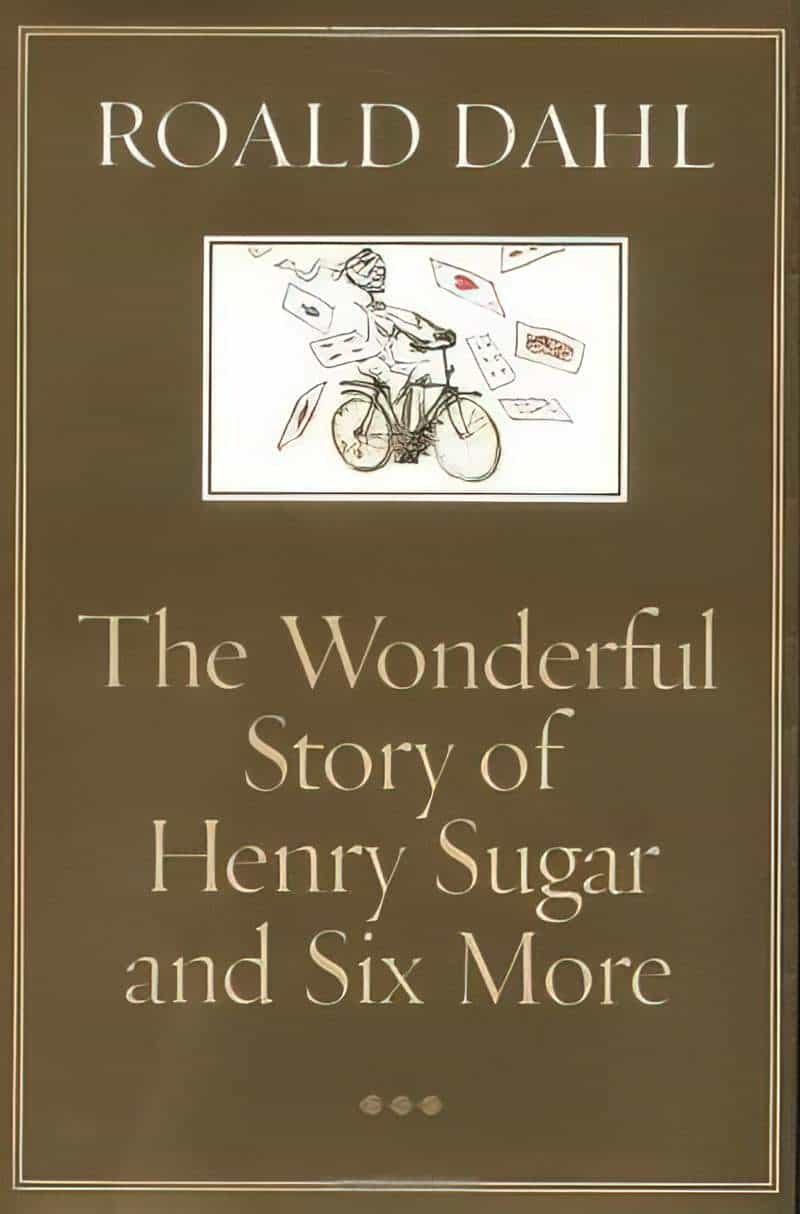
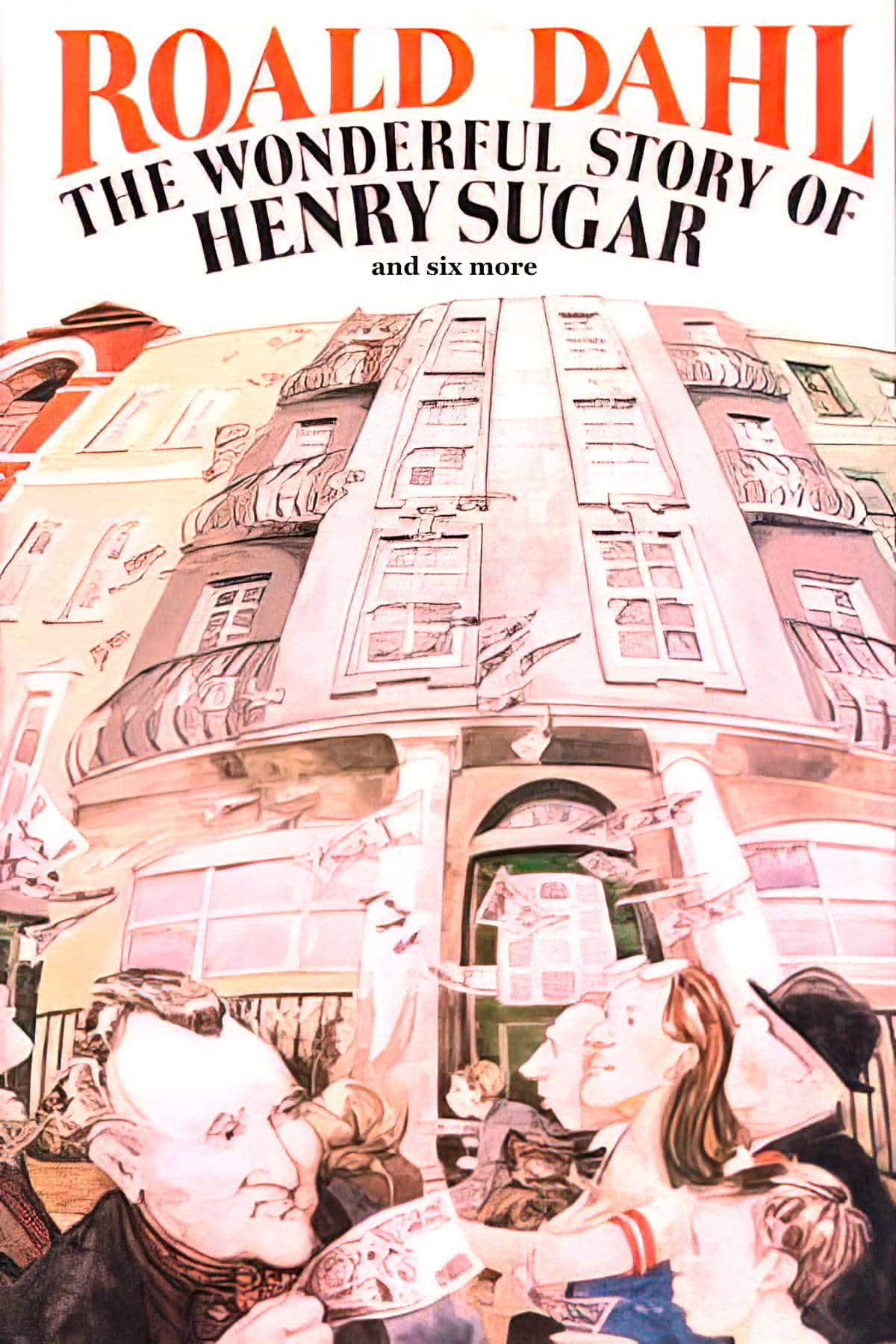
- “The Boy Who Talked With Animals“
- “The Hitch-Hiker” — A wealthy driver in a new 1974 BMW makes his way towards London to get his wife’s ring fixed. He picks up a hitch-hiker who looks part man, part rat. Where is the rat man going? Is he friend or foe? We’ll soon find out.
- “The Mildenhall Treasure“
- “The Swan” — A boy is out bird-watching when he runs into the two local bully boys who decide to spend the day torturing him, as well as torturing the endangered birds on the village lake.
- “The Wonderful Story of Henry Sugar” — The name “Henry Sugar” sounds like it belongs in a children’s book, but this is a short story for a general audience. Notable for Dahl’s use of diegetic levels (stories within stories). Of course, Wes Anderson was drawn to this aspect when adapting for screen in 2023.
- “Lucky Break“
- “A Piece of Cake“
ANGELA CARTER
- “The Tiger’s Bride” by Angela Carter — for genuinely feminist re-visionings of fairytales, see The Bloody Chamber collection, written in the 1970s. This is from that.
- “In The Company Of Wolves” by Angela Carter — arguably the best feminist revisioning of Little Red Riding Hood
- “Peter and the Wolf” by Angela Carter — a great example of mise en abyme in storytelling
- “Lizzie’s Tiger” by Angela Carter — a fictional re-visioning of Lizzie Borden’s early childhood.
- “The Company of Wolves” by Angela Carter — a retelling of Little Red Riding Hood
- “The Bloody Chamber” by Angela Carter — a retelling of Bluebeard, in which the young bride is rescued not by her brothers but by her mother.
- “Goethe and Angela Carter’s Erl-king” — Not much in common with the poem, but I compare the two side by side.
DAPHNE DU MAURIER
THE APPLE TREE (THE BIRDS AND OTHER STORIES) (1952)
- “The Birds” — It’s quite different from the Hitchcock film adaptation but Hitchcock kept the silence and the doomed ending.
- “Monte Verità” — “Mountain of Truth”
- “The Apple Tree” — A feminist subversion on the Nagging Wife narrative. If you despised “Rip Van Winkle”, this is your catharsis. Du Maurier cleverly sold it as a “Christmas Ghost Story”.
- “The Little Photographer” — A wealthy woman holidays near the French seaside with her two young daughters, mainly looked after by the nanny. This frees her up to spend time with the young handsome photographer she encountered when developing her film. She loves to be admired, and loves to have her photo taken. What starts off as a languid, summery love affair turns into a crime story.
- “Kiss Me Again, Stranger” — A basic, happy-go-lucky young man feels insta attraction for the girl taking tickets at the local picture theatre. He follows her home. Well, to a graveyard. As in “The Apple Tree” and “The Little Photographer”, du Maurier expertly manipulates reader empathy. I worried when the narrator followed the young woman home. Is he an unreliable narrator, painting himself as basic when he’s in fact a predator? Then we start to wonder if we’re reading a supernatural story. The girl could be a witch, enticing him to his death.
- “The Old Man” —
VARIOUS
- “The Three Strangers” by Thomas Hardy — a trickster tale with a rainy, pastoral, English setting. Read on April Fool’s Eve.
- “Rain” by Somerset Maugham — a fish-out-of-water story, in which characters wholly unsuited to their environment become marooned somewhere due to external circumstances.
- “The Happy Hypocrite” by Max Beerbohm — a misogynistic tale, so try to read it as a fairy tale, not as feminism. Which it isn’t.
- “The Murders in the Rue Morgue” by Edgar Allan Poe — the first procedural detective story. That part of it is very boring to read, imo. The ending is bizarre. But as a historical document, interesting.
- “Man-sized in Marble” by Edith Nesbit — You may know her better because of her stories for children, but Nesbit also wrote horror.
- “The Haunted Dolls’ House” by M.R. James — A classic ghost story, making use of one of those miniature houses rich people used to order. They were never for playing with. Creates a nice mise en abyme effect. The pacing is a bit slow by today’s standards.
Like most of the world, I was outside the “whisper network” surrounding Neil Gaiman’s abuse of power, brought to light in July 2024 (in the very same week I learned of Alice Munro and her daughter Andrea). I believe his victims.
- “How To Talk To Girls At Parties” by Neil Gaiman — Set in 1970s East Croydon (in the author’s own youth), two 15-year-old boys try to find a party they’ve sort of been invited to, but they wind up at the wrong one. I see this supernatural short story as an allegory for sexual assault.
- “Click Clack the Rattlebag” by Neil Gaiman — A 2012 short story written for Halloween. I believe this is a subversion of “The Babysitter” category of urban legend, and is a nice, rare example of a teenage boy caring for a younger boy.
Scottish Short Stories
Janice Galloway
WHERE YOU FIND IT
- valentine
- where you find it
- sonata form
- a night in
- test
- after the rains
- waiting for marilyn
- hope
- bisex
- peeping tom
- babysitting
- someone had to
- a proper respect
- the bridge
- tourists from the south arrive in the independent state
- he dreams of pleasing his mother
- last thing
- not flu
- proposal
- six horses
BLOOD
- Blood
- Scenes from the Life No. 23: Paternal Advice
- Love in a changing environment
- Frostbite
- Scenes from the Life No. 29: Dianne
- it was
- David
- two fragments
- Scenes from the Life No. 26: The Community and the Senior Citizen
- Into the Roots
- Breaking Through
- Fair Ellen and the Wanderer REturned
- Scenes from the Life No. 24: Bikers
- Need for Restraint
- Plastering the Cracks
- later he would open his eyes in a strange place, wondering where she
- The meat
- Fearless
- Scenes from the Life No. 27: Living In
- Nightdriving
- things he said
- A Week with Uncle Felix
JELLYFISH (2015)
- jellyfish
- looking at you
- and drugs and rock and roll
- that was then, this is now (1)
- almost 1948
- that was then, this is now (2)
- fine day
- greek
- turned
- gold
- burning love
- fittest
- opera
- romantic
- peak
- distance
Irish Short Stories
Kevin Barry
- “Beer Trip To Llandudno” — a group of men from Merseyside go for a daytrip to North Wales. On this mythic journey they realise they are edging closer to death.
- “Who’s-Dead McCarthy” — a darkly humorous character sketch of a man who is fascinated by death. This describes us all?
- “Ernestine and Kit” — I loved this story about two middle-aged women who drive around Ireland with ill-intent.
William Trevor
William Trevor was English and Irish. Below are the contents of his short story collections, not including collections which came out in 1983, 1992, 1993, 2003, 2007 and 2009. Selected Stories came out in 2010. This is the second volume of Collected Stories.
THE DAY WE GOT DRUNK ON CAKE (1968)
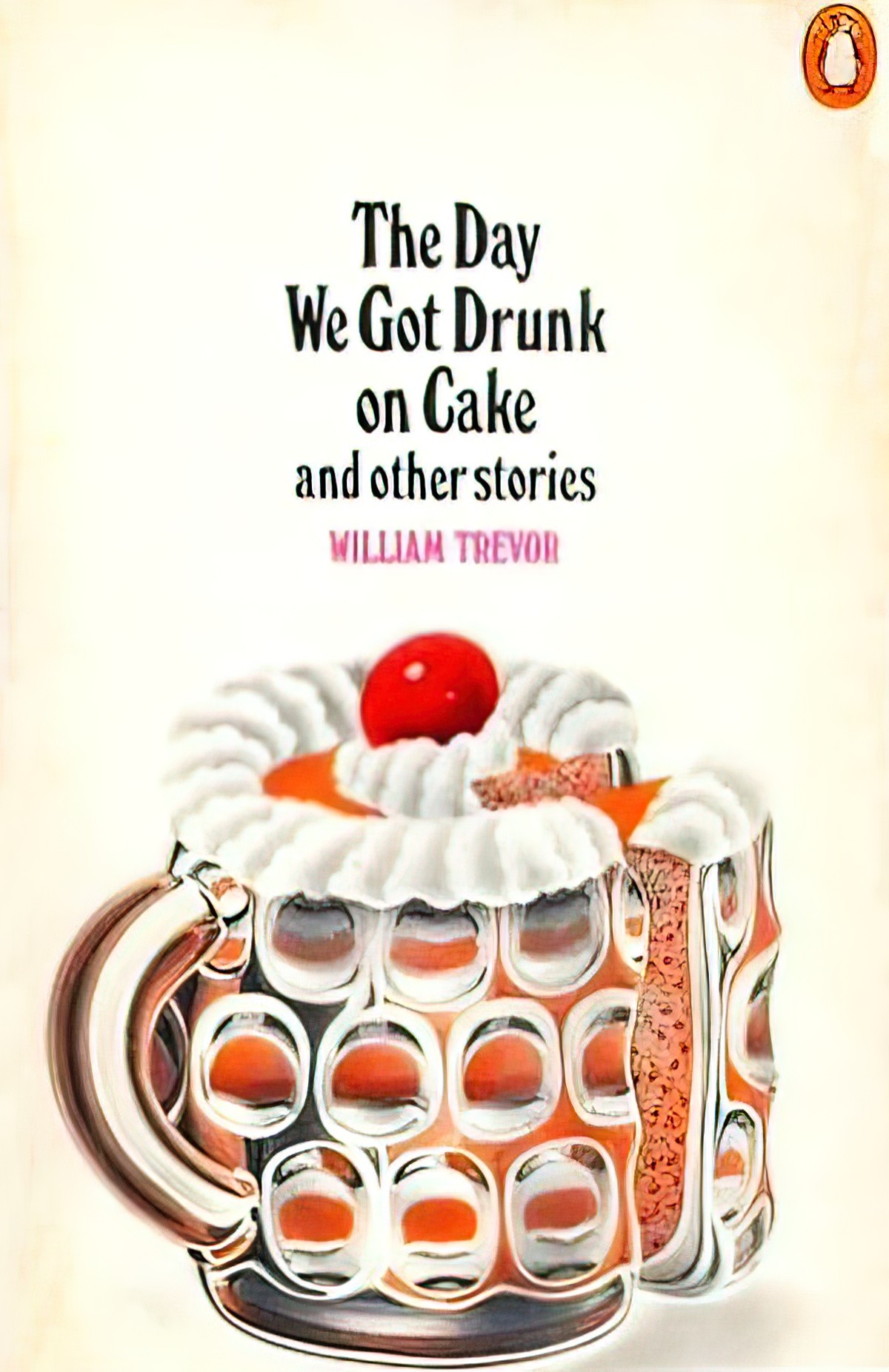
- “The Table“
- “The General’s Day“
- “The Penthouse Apartment“
- “In At The Birth“
- “The Original Sins of Edward Tripp“
- “A Meeting in Middle Age“
- “The introspections of J. P. Powers“
- “A School Story“
- “The Day We Got Drunk On Cake“
- “Raymond Bamber and Mrs. Fitch“
- “The Hotel of the Idle Moon“
- “Miss Smith” — A boy is humiliated by his teacher. Several years later, he exacts revenge. Or is this an allegory for postnatal depression and gaslighting?
THE BALLROOM OF ROMANCE AND OTHER STORIES (1972)
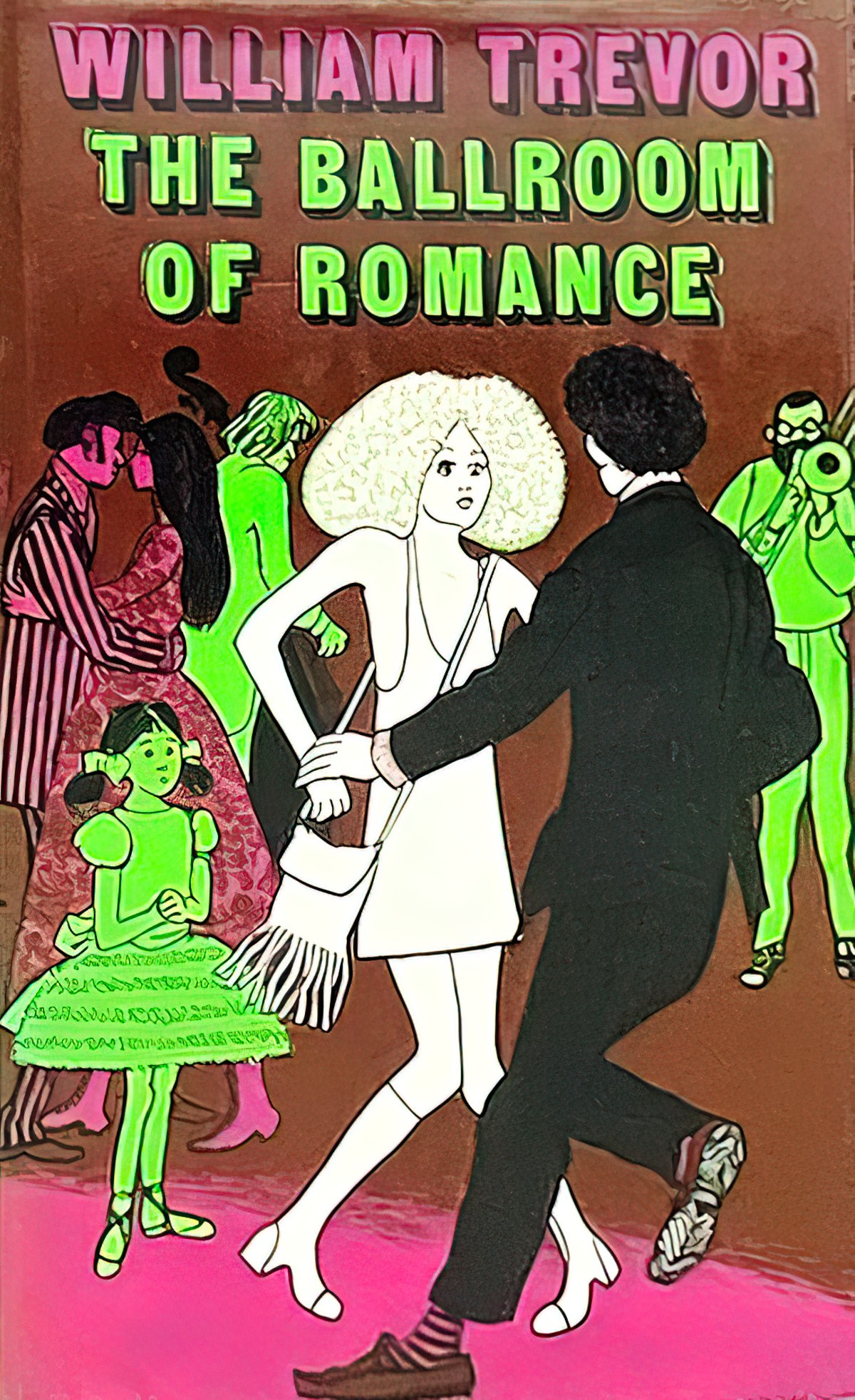
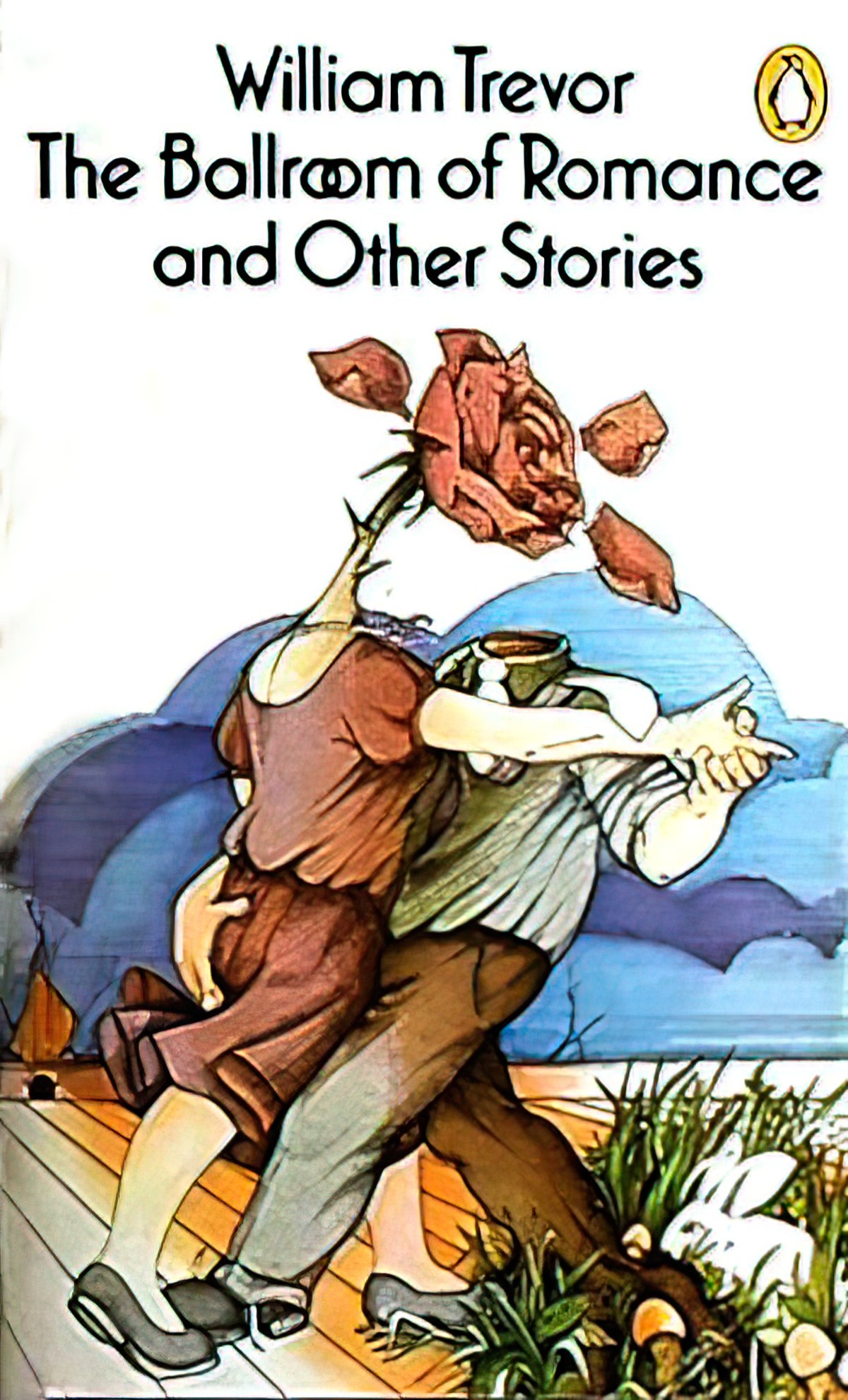
- “Access to the Children“
- “Nice Day at School“
- “The Ballroom of Romance“
- “The Forty-seventh Saturday“
- “A Happy Family“
- “Going Home“
- “An Evening with John Joe Dempsey“
- “The Mark-2 Wife“
- “The Grass Widows“
- “A Choice of Butchers“
- “Kinkies“
- “O Fat White Woman“
THE LAST LUNCH OF THE SEASON (1973)
This one is hard to get. I have no idea which stories it contains, but am confident the stories appear in other collections.
ANGELS AT THE RITZ AND OTHER STORIES (1975)
- “In Isfahan”
- “The Distant Past”
- “Angels at the Ritz”
- “Mrs. Silly” — An eight-year-old boy is sent off to boarding school, where he rapidly learns the rules of masculinity. He must distance himself from his mother. Inside, he still feels close to her. But from now on he must appear to be more independent than he feels.
- “The Tennis Court” — The first story in the “Matilda’s England” triptych. The others are “The Summer-house” and “The Drawing-room”.
- “A Complicated Nature” — A character study of demisexuality, about four decades before the terminology existed.
- “Teresa’s Wedding”
- “Office Romances”
- “Mr McNamara”
- “Afternoon Dancing”
- “Last Wishes”
- “Mrs. Acland’s Ghosts”
LOVERS OF THEIR TIME (1987)
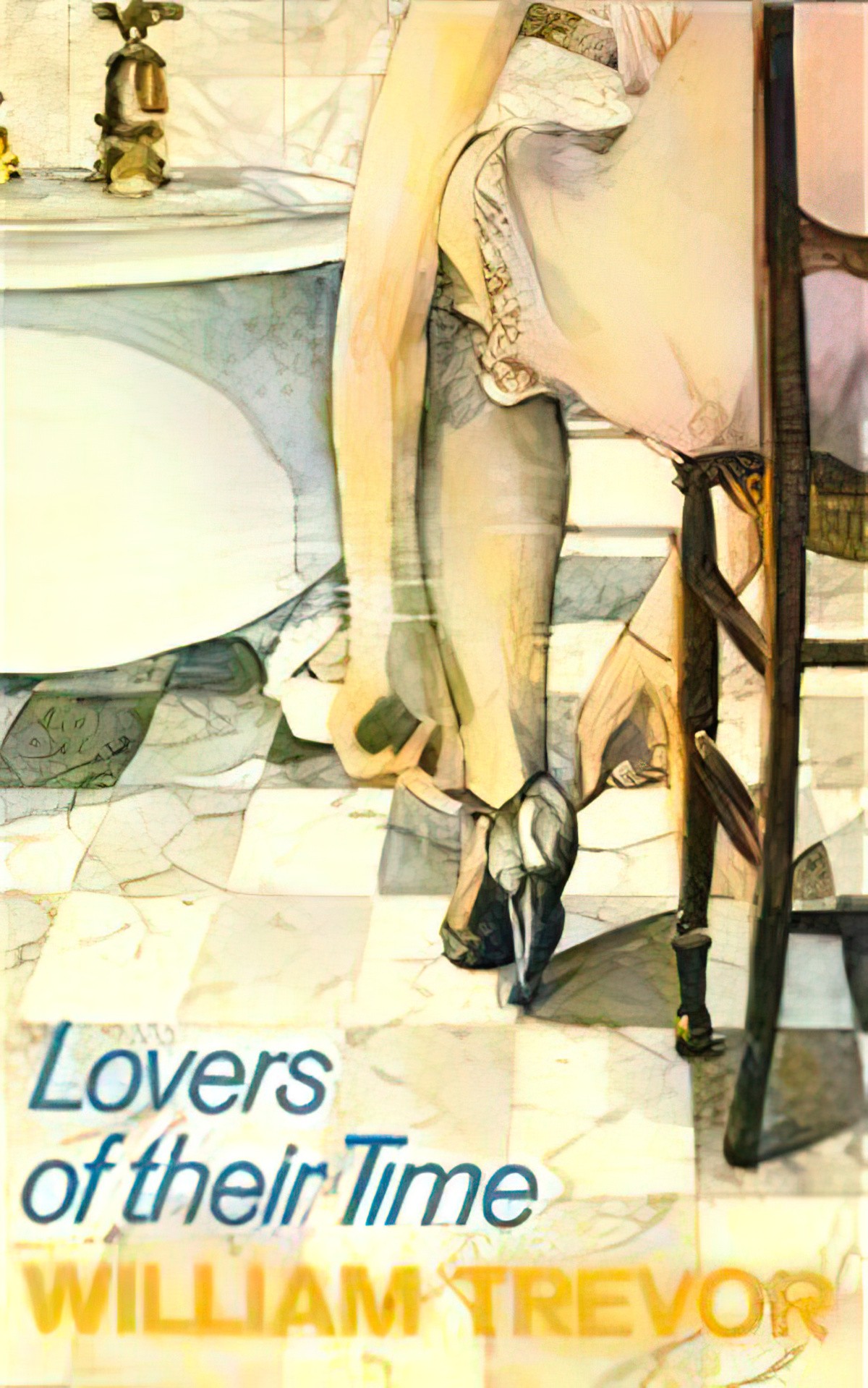
- “Broken Homes”
- “Another Christmas”
- “Matilda’s England”
- “Torridge”
- “Flights of Fancy”
- “Death in Jerusalem”
- “Attracta”
- “Lovers of Their Time”
- “The Raising of Elvira Tremlett”
- “A Dream of Butterflies”
BEYOND THE PALE and other stories (1981)
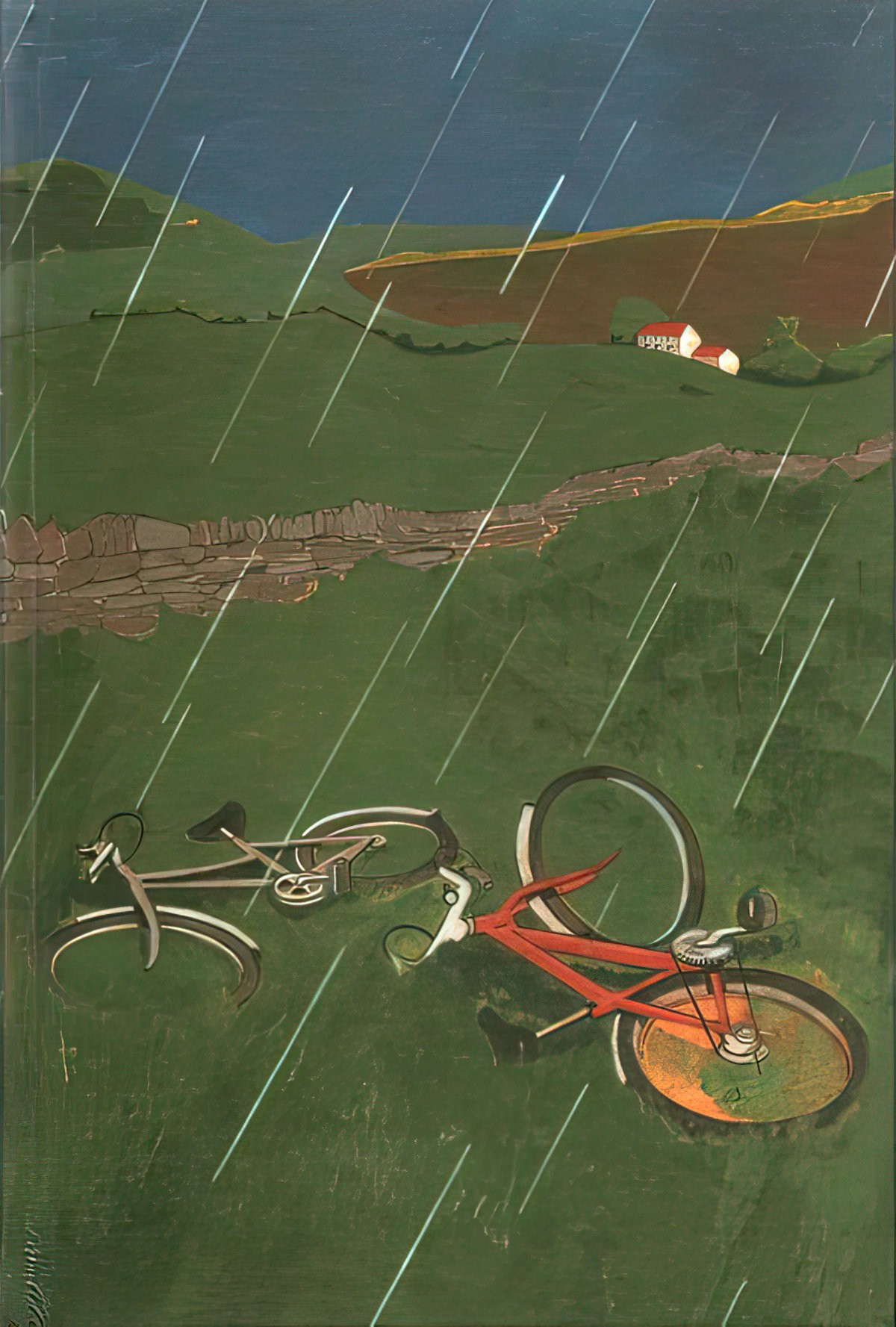
- “The Bedroom Eyes of Mrs. Vansittart”
- “Downstairs at Fitzgerald’s”
- “Mulvihill’s Memorial”
- “Beyond the Pale”
- “The Blue Dress”
- “The Time of Year”
- “The Teddy-bear’s Picnic”
- “Being Stolen From”
- “Mr. Tennyson”
- “Autumn Sunshine”
- “Sunday Drinks”
- “The Paradise Lounge”
THE NEWS FROM IRELAND AND OTHER STORIES (1986)
- “The News From Ireland”
- “On the Zattere”
- “Lunch in Winter”
- “The Property of Colette Nervi”
- “Running Away”
- “Cocktails at Doney’s”
- “Bodily Secrets”
- “Virgins”
- “Her Mother’s Daughter”
- “Music”
- “The More Gallants”
- “The Wedding in the Garden”
FAMILY SINS AND OTHER STORIES (1989)
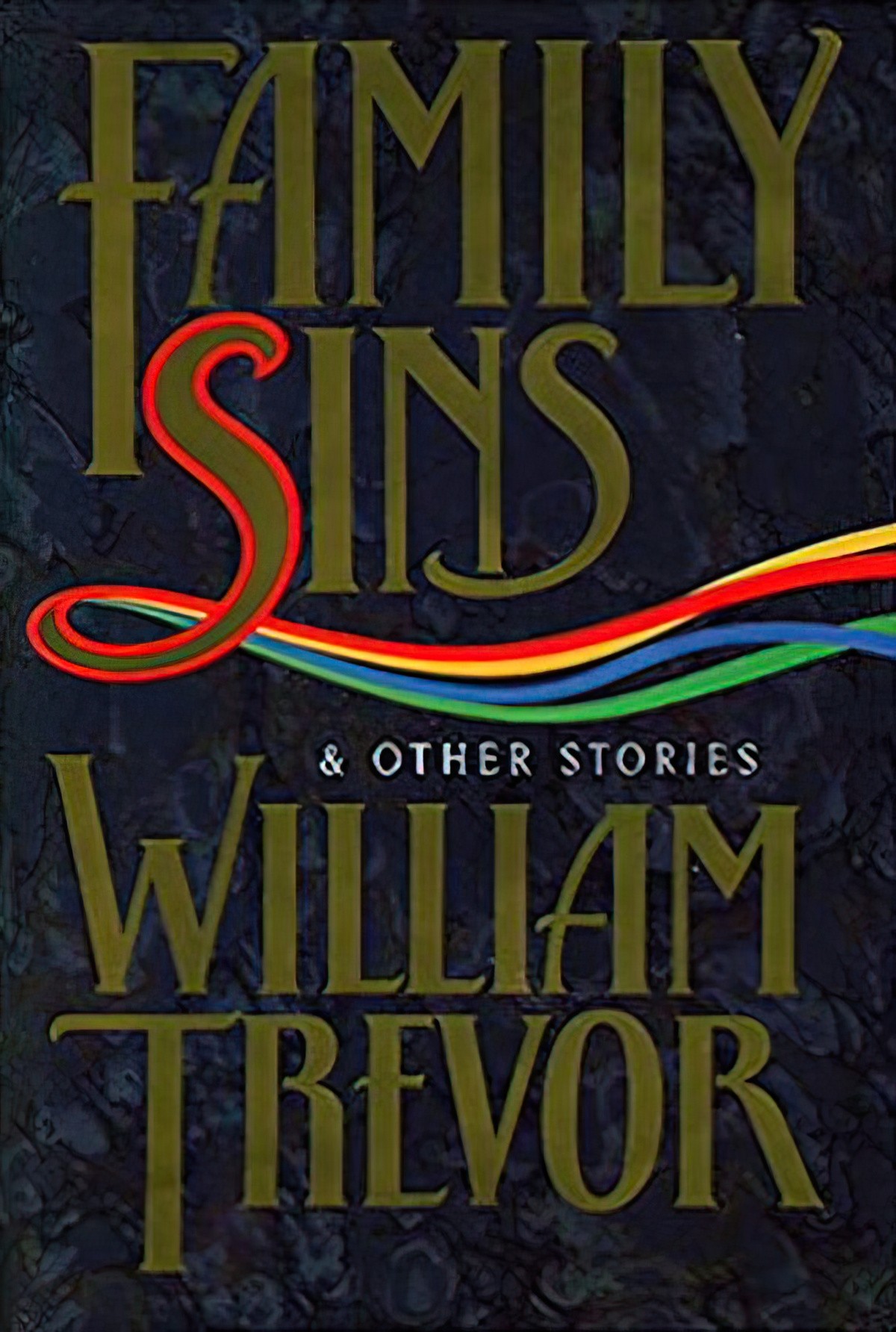
- “Events at Drimaghleen”
- “Family Sins”
- “The Third Party”
- “In Love With Ariadne”
- “A Trinity”
- “Honeymoon in Tramore”
- “The Printmaker”
- “Coffee with Oliver”
- “A Husband’s Return”
- “Children of the Headmaster”
- “August Saturday”
- “Kathleen’s Field”
AFTER RAIN (1996)
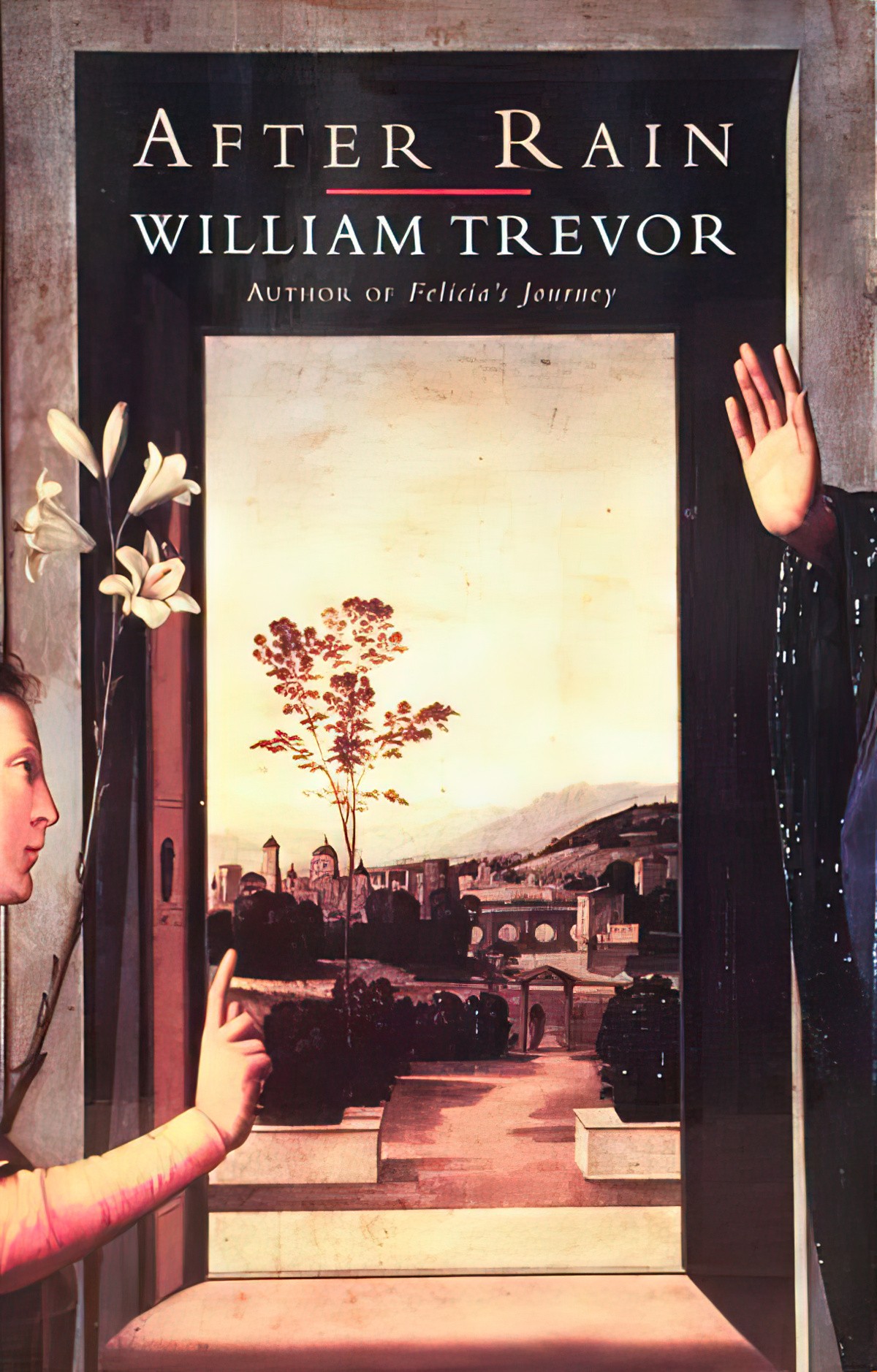
- “The Piano Tuner’s Wives”
- “A Friendship”
- “Timothy’s Birthday”
- “Child’s Play”
- “A Bit of Business”
- “After Rain”
- “Widows”
- “Gilbert’s Mother”
- “The Potato Dealer”
- “Lost Ground”
- “A Day”
- “Marrying Damian”
COCKTAILS AT DONEY’S (1996)
- “Cocktails at Doney’s”
- “Ballroom of Romance”
- “The Grass Widows”
- “Broken Homes”
- “A Meeting in Middle Age”
- “Widows”
- “Death in Jerusalem”
THE HILL BACHELORS (2000)
- “Three People”
- “Of the Cloth”
- “Good News”
- “The Mourning”
- “A Friend in the Trade”
- “Low Sunday, 1950”
- “Le Visiteur”
- “The Virgin’s Gift”
- “Death of a Professor”
- “Against the Odds”
- “The Telephone Game”
- “The Hill Bachelores”
A BIT ON THE SIDE (2004)
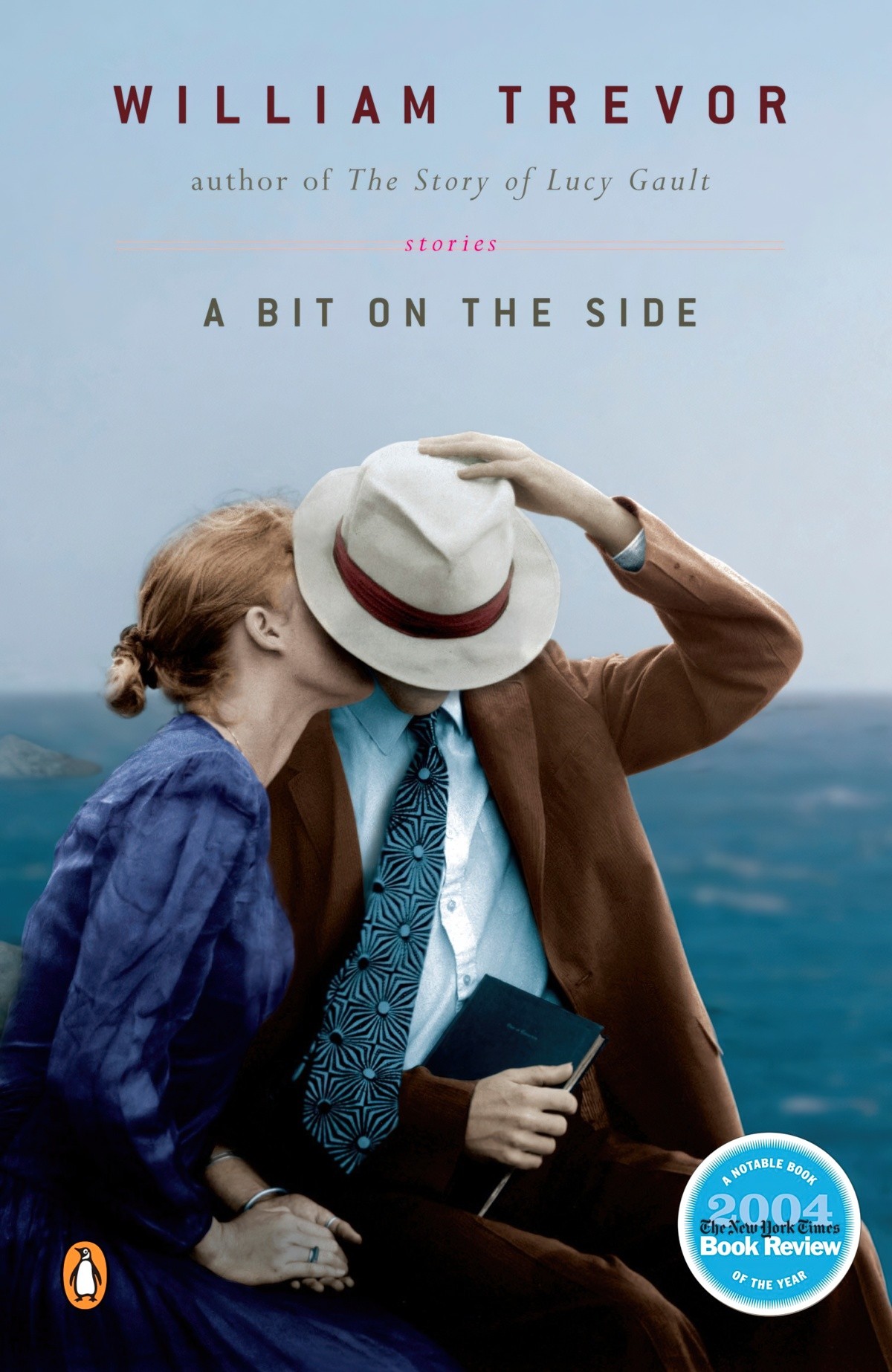
- “Sitting With The Dead”
- “Traditions”
- “Justina’s Priest”
- “An Evening Out”
- “Graillis’s Legacy”
- “Solitude”
- “Sacred Statues”
- “Rose Wept”
- “Big Bucks”
- On the Streets”
- “The Dancing-master’s Music”
- “A Bit On The Side”
CHEATING AT CANASTA (2007)
- “The Dressmaker’s Child”
- “The Room”
- “Men of Ireland”
- “Cheating at Canasta”
- “Bravado“
- “At Afternoon”
- “At Olivehill”
- “A Perfect Relationship”
- “The Children”
- “Old Flame”
- “Faith”
- “Folie à deux”
LAST STORIES (2018)
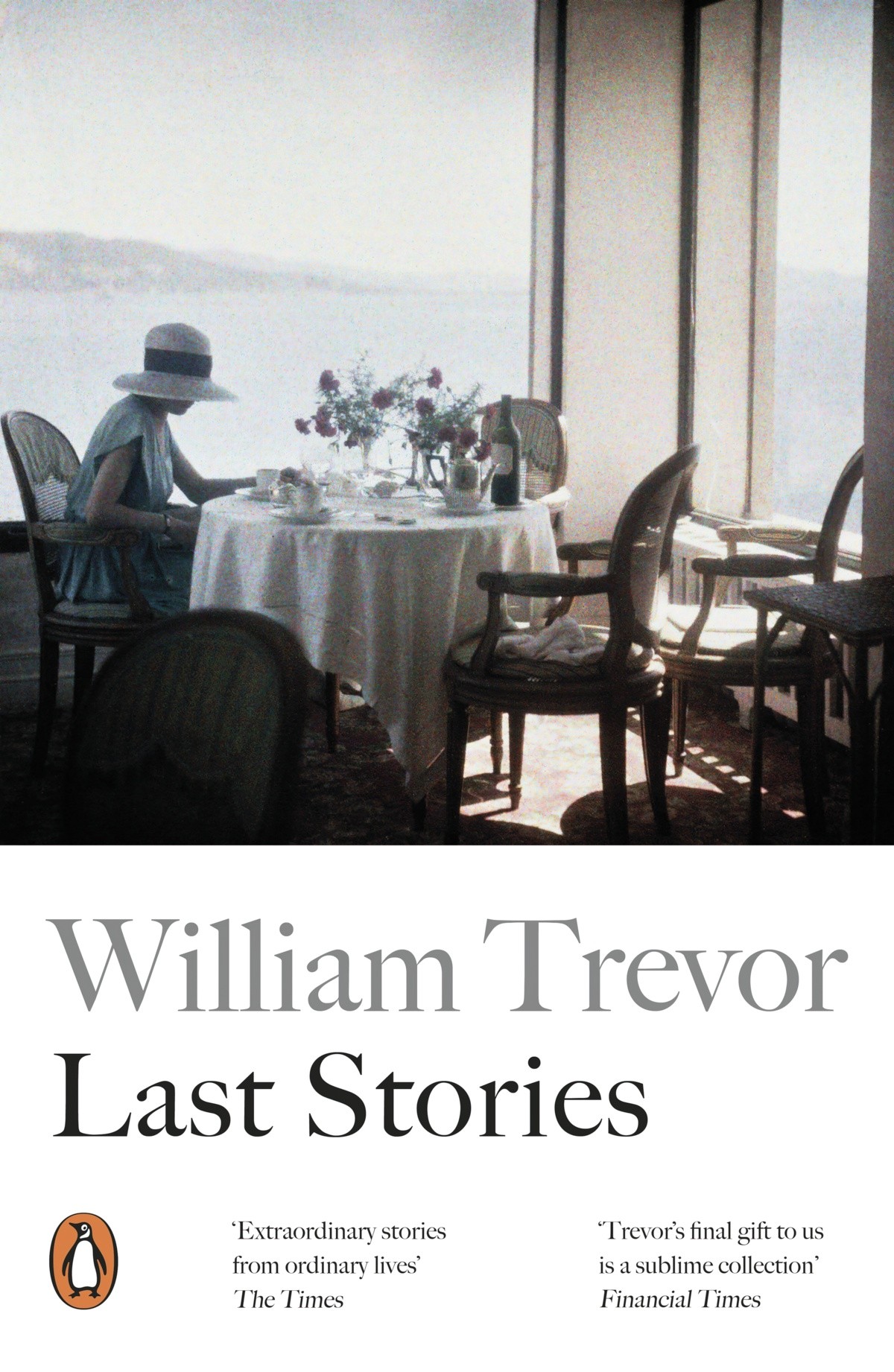
- “The Piano Teacher’s Pupil”
- “The Crippled Man”
- “At the Caffè Daria”
- “Taking Mr Ravenswood“
- “Mrs Crasthorpe”
- “The Unknown Girl”
- “Making Conversation”
- “Giotto’s Angels”
Latin American Short Stories
A Very Old Man With Enormous Wings by Gabriel Garcia Marquez is another story about cruelty, and the archetypal example of magical realism.
Danish Short Stories
HANS CHRISTIAN ANDERSEN
TALES FOR CHILDREN
- “The Emperor’s New Clothes“
- “The Snow Queen“
- “The Princess and the Pea“
- “The Nightingale“
- “The Ugly Duckling“
- “The Little Mermaid“
- “The Tinderbox“
- “The Wild Swans“
- “Thumbelina“
- “The Little Match Girl“
- “The Steadfast Tin Soldier“
- “Ole Shut Eye“
TALES FOR ADULTS
- “The Red Shoes“
- “The Shadow“
- “The Psyche“
- “The Most Astonishing Thing“
- “The Story of a Mother“
- “The Girl Who Trod on the Loaf“
- “The Phoenix“
- “The Goblin and the Grocer“
- “Auntie Toothache“
- “The Flying Trunk“
- “Heartache“
- “The Bell“
Australian Short Stories
- “Blackberries” by Thomas Kenneally — a middle-aged man falls for a student of his. A contemporary take on a Lolita that never plays out.
- “Singing My Sister Down” by Margo Lanagan — the creepiest horror story Australia has produced.
- “A View of Mount Warning” by Robert Drewe — another story of a middle-aged man who falls for a younger woman — unfortunately the wife of his best friend.
- “The Lap Pool” by Robert Drewe — a man has become caught doing fraudulent things with money. Now he is alone and destitute on his run-down farm.
- “The Home Girls” by Olga Masters
- “The Loaded Dog” by Henry Lawson — Offensively outdated, but worth a read since the phrase ‘loaded dog’ has entered the Australian lexicon.
Japanese Short Stories
- “U.F.O. in Kushiro” by Haruki Murakami
- “The Cafeteria in the Evening and a Pool in the Rain” by Yoko Ogawa — Translated from Japanese for The New Yorker, this short story is the epitome of ‘Japanese story structure’, which is different from what readers in the West have come to expect regarding build-up and climax.
HELP FOR WRITING SHORT STORIES
It’s surprisingly difficult to find much information on the topic of short story structure, partly because literary scholars haven’t touched it. Anything you find will probably be brief and written by short story practitioners themselves.
- The Three Types of Short Story from Comma Press
- Evolution of the Three Types from Comma Press
- Writing Exercise: The Epical Story from Comma Press
- Writing Exercise: The Lyrical Story from Comma Press
Exceptions include the following:
- T. O. Beachcroft (1968), The modest art: a survey of the short story in English
- Ian Reid (1977), in the Critical Idiom series.
- Todorov (1977) in Poetique de la Prose
- Valerie Shaw (1983) The Short Story: A Critical Introduction (1983)
- Clare Hanson (1985) Short stories and Short Fictions 1880-1980
But a number of those commentators restrict themselves to the folktale, which has little in common with contemporary short fiction.
The rules seem to be these: if you have written a successful novel, everyone invites you to write short stories. If you have written some good short stories, everyone wants you to write a novel. But nobody wants anything until you have already proved yourself by being published somewhere else.
James Michener
